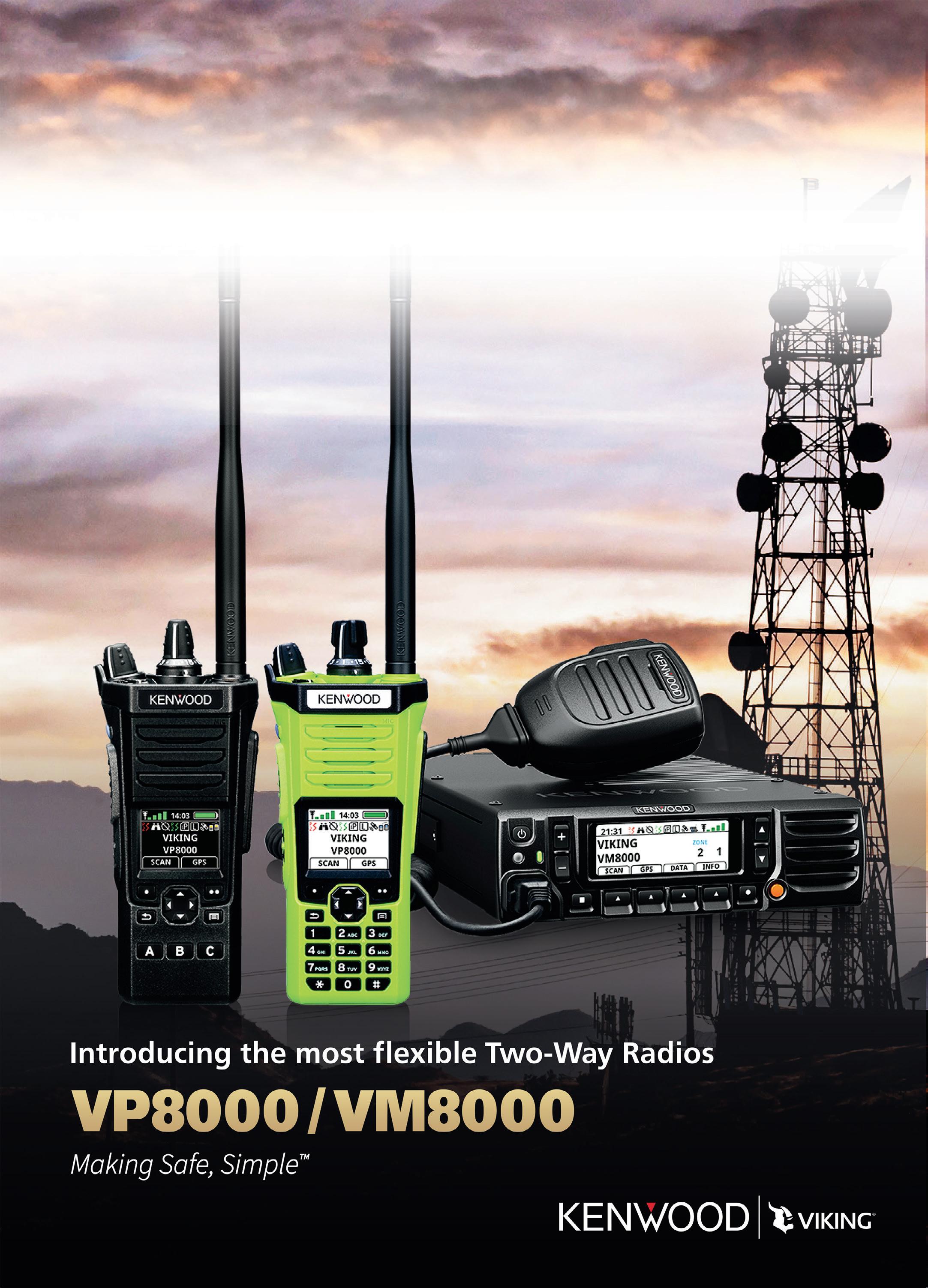
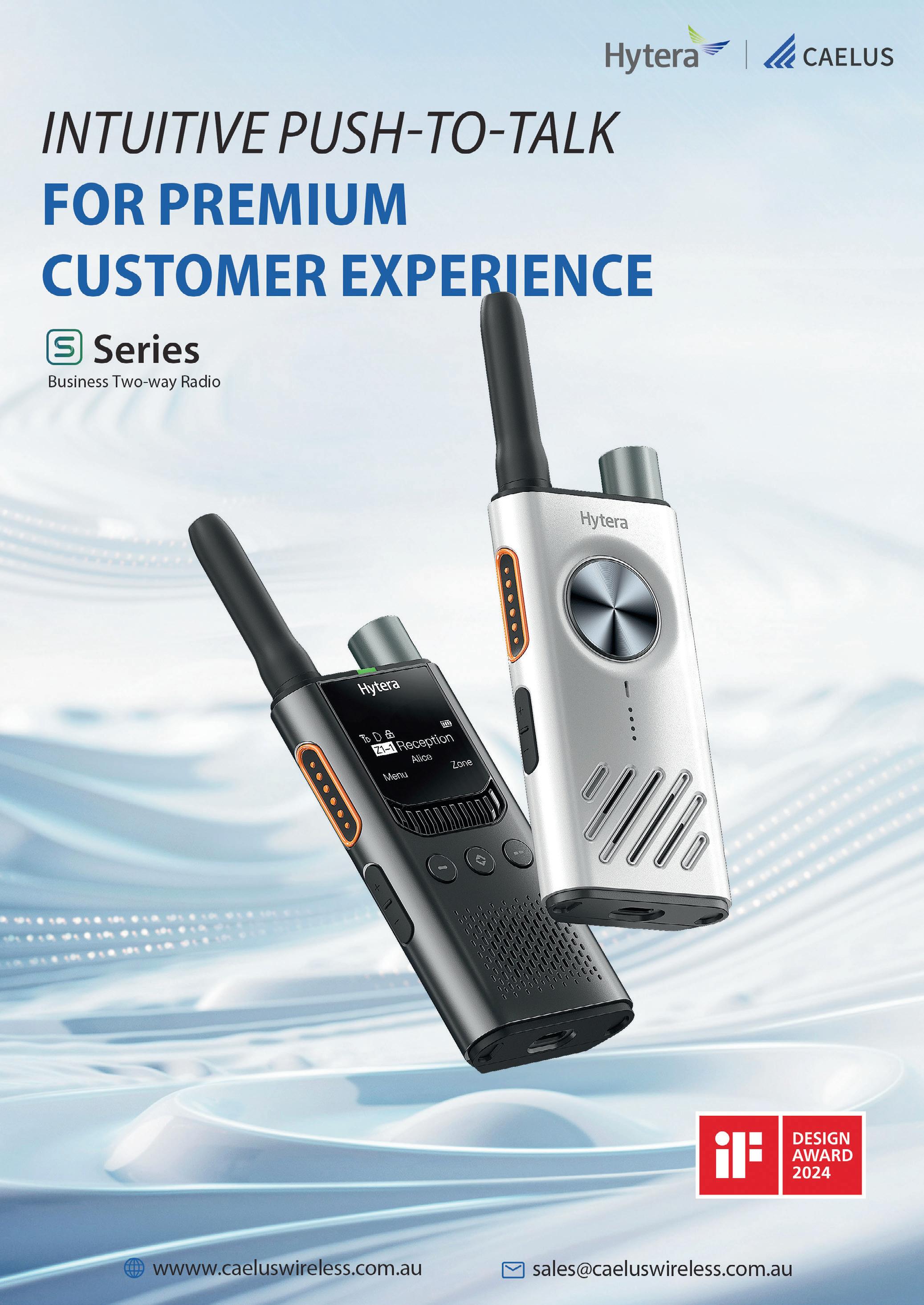



September/October 2024
6 Revolutionising emergency response with Secure Multi-Organisation Data Sharing (SMODS)
16 What to expect at Comms Connect Melbourne
22 Pilot area launched for NZ PSN’s LMR network
37 Mobile SD-WAN vs dual modems in vehicles
43 Field trials demonstrate the benefits of Wi-Fi HaLow
52 Ambient RF signals could power electronic devices
55 Wirelessly powered relay enables 5G in smart factories
56 Onboard sensors and cameras prevent drone collisions
58 Ultra-precise motion sensor could enable GPS-free navigation
63 NEC develops mmWave distributed antenna for Beyond 5G/6G
64 SoftBank achieves THz outdoor coverage for connected cars
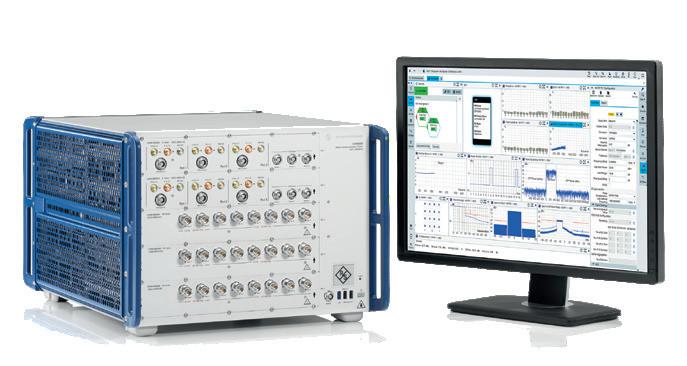
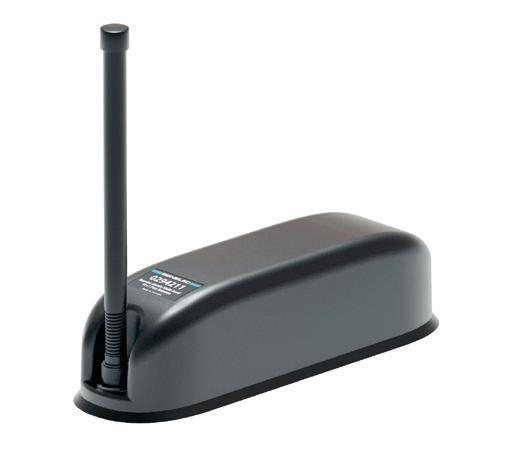
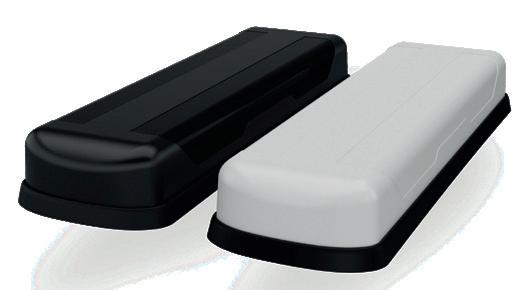
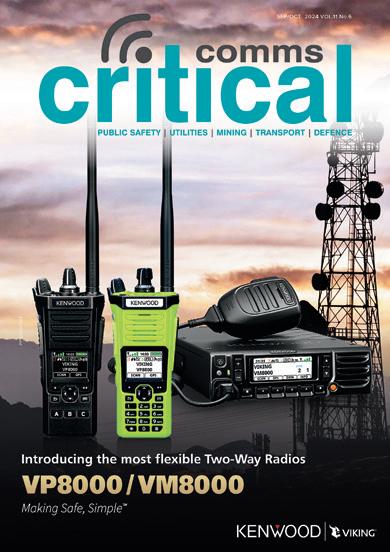
Unleash communication with JVCKENWOOD’s ultra-flexible two-way radios. The company’s KENWOOD VIKING VP Portable and VIKING VM Mobile radio range provides users with a multiband, multi-protocol radio that is capable of operating P25 and DMR together in a single unit.
With included features such as inbuilt voice recording, noise-cancelling technology and fleet management software, just to name a few, this new platform of radio has high levels of flexibility and quality, enabling effective, easy-to-use communications as part of JVCKENWOOD’s commitment to ‘making safe simple’.
JVCKENWOOD Australia supplies a complete range of portable and mobile two-way radio equipment, including conventional, 5-tone, P25, DMR and NXDN. Utilising leading audio components for high audio quality, and with over 90 years’ experience in audio, KENWOOD radios are designed to provide some of the clearest-sounding audio available. Experience the future of communication with KENWOOD VIKING radios. For more information, please visit us at Comms Connect Melbourne, or request more information by emailing the team at info@jvckenwood.com.au.
JVCKENWOOD Australia Pty Ltd www.kenwood.com.au
Last issue, I claimed with confidence that all of Australia’s 3G networks would be shut down by now. Of course that is no longer the case, with Telstra and Optus extending the closure of their 3G networks to 28 October in order to give owners of 3G devices more time to prepare. Even so, the Australian Communications Consumer Action Network (ACCAN) remains particularly concerned about users of medical devices such as insulin pumps, heart rate monitors and personal safety alarms — all of which may be impacted by the shutdown — and is therefore calling for better regulation of such devices.
In some positive telco news, Communications Minister Michelle Rowland has directed the ACMA to require mobile carriers to take all reasonable steps to ensure emergency calls can be carried on any available network during an outage, addressing the technical fault which affected many Optus customers last November. The ACMA will also develop new requirements for industry to report to government after major outages, including a plan to reduce the risk of similar outages occurring in future.
Telcos will also be required to keep customers informed and updated regarding major outages, whether through website updates, email updates, social media updates, or radio and television news bulletins. In particular, industry will be required to notify customers as soon as practicable if their mobile device is unable to access the emergency call service.
So what else can be done to improve emergency communications? In this issue, you can learn about a groundbreaking data-sharing project from the Connectivity Innovation Network (page 6), get the latest updates on New Zealand’s Public Safety Network (page 22) and discover how technologies such as assistive AI are helping emergency contact centre workers (page 66).
There will also be plenty of informative presentations on public safety and other subjects at our upcoming Comms Connect Melbourne conference and expo, previewed in this issue starting on page 16. And with this year’s event set to be the biggest in Comms Connect history, we are pleased to be featuring several articles, product editorials and case studies in this issue from our esteemed exhibitors, along with all the other content you know and love. It’s a massive issue for a massive show, and we look forward to seeing you there!

A.B.N. 22
Editor: Lauren Davis cc@wfmedia.com.au
Publishing Director/MD: Janice Williams
Lauren Davis, Editor cc@wfmedia.com.au
Art Director/Production Manager: Linda Klobusiak
Art/Production: Marija Tutkovska
Circulation: Alex Dalland circulation@wfmedia.com.au
Copy Control: Ashna Mehta copy@wfmedia.com.au
Advertising Sales
Tim Thompson Ph 0421 623 958 tthompson@wfmedia.com.au
Liz Wilson Ph 0403 528 558 lwilson@wfmedia.com.au
IEEE 100th Vehicular Technology Conference (VTC2024-Fall)
7–10 October 2024
Ronald Reagan Building and International Trade Center, USA and online events.vtsociety.org/vtc2024-fall
Comms Connect Melbourne 16–17 October 2024
Melbourne Convention and Exhibition Centre melbourne.comms-connect.com.au
ARCIA Industry Gala Dinner 16 October 2024
Melbourne Convention and Exhibition Centre arcia.org.au/events/arcia-industry-gala-dinner-2024melbourne
International Conference on 6G Networking 21–24 October 2024
Orange Gardens, France
6g-conference.dnac.org/2024
ACRNA 2024 Conference 23–24 October 2024
The Langham, Melbourne acrna.org/conference
5G Techritory
30–31 October 2024
Riga, Latvia and online www.5gtechritory.com
PMRExpo 2024
26–28 November 2024
Koelnmesse, Germany www.pmrexpo.com/en
2024 ICCRA Critical Control Rooms World Congress
2–5 December 2024
Hilton Columbus Downtown, USA web.cvent.com/event/82b504bb-848a-4923-8d5c945e5835d886/summary
ITU World Radiocommunication Seminar 2024 2–6 December 2024 Geneva, Switzerland www.itu.int/wrs-24
2024 IEEE Global Communications Conference 8–12 December 2024
Cape Town, South Africa globecom2024.ieee-globecom.org
For a full list of industry events, see criticalcomms.com.au/events
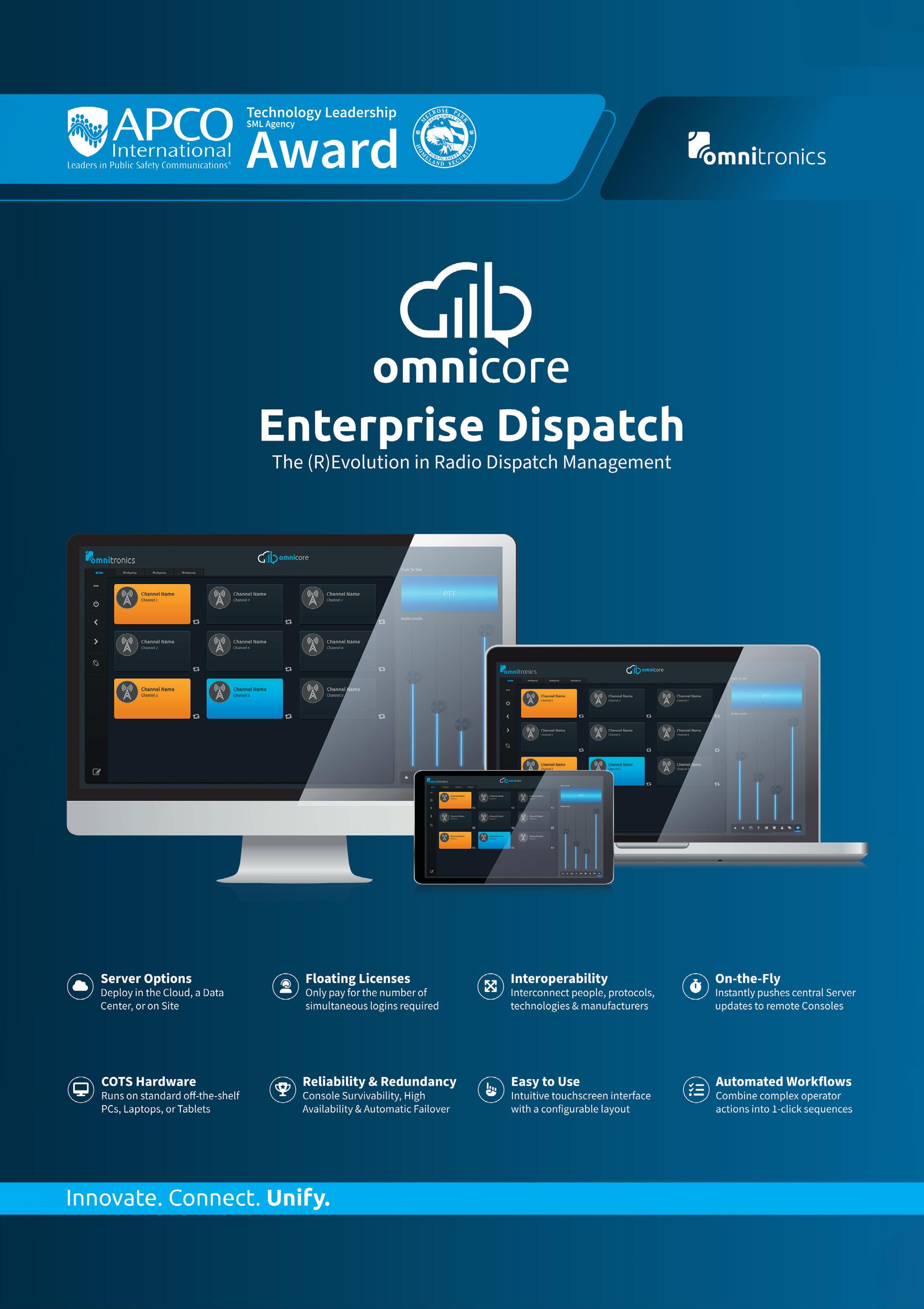
In the high-stakes world of emergency services, access to accurate, real-time information can literally be the difference between life and death. But traditional systems of data sharing among emergency service organisations (ESOs) often struggle with issues like data silos, slow information dissemination and concerns about privacy.
The Secure Multi-Organisation Data-Sharing (SMODS) Project, funded by the Connectivity Innovation Network (CIN), is a groundbreaking decentralised data-sharing platform that seamlessly connects data from multiple organisations in a way which preserves privacy and provides controls to appropriately deal with sensitive information. By enabling real-time, privacypreserving data sharing across ESOs, SMODS is set to revolutionise data sharing in support of emergency response and situational awareness. This article explores how SMODS addresses these challenges and sets a new standard for secure and efficient data sharing in the realm of emergency services.
The SMODS Project: a game changer in data sharing
At its core, SMODS is designed to overcome the limitations of existing data-sharing systems, providing a decentralised, secure platform

that enables data sharing across organisations. Led by Professor Ren Ping Liu and Dr Xu Wang from the University of Technology Sydney (UTS), in collaboration with World Data Exchange (WDX), this innovative platform is billed as the first data-sharing platform to incorporate the Australian Computer Society’s (ACS) 2023 Data Sharing Framework, to evaluate data privacy levels, assess access risks and manage data life cycles.
One of the standout features of SMODS is its sophisticated data-centric, privacypreserving access control (DPAC) scheme, which ensures that users can access only the data they are qualified to view. This is particularly crucial in emergency situations, where different organisations — each with varying levels of data sensitivity — must collaborate seamlessly. By integrating with existing authentication systems through the OAuth protocol, SMODS provides a seamless user experience while maintaining robust security and privacy measures.
The development of SMODS has been a collaborative effort, with extensive consultation from key stakeholders such as Fire and Rescue NSW and Surf Life Saving NSW (SLSNSW). These consultations have been instrumental in ensuring that the platform meets the specific needs of emergency services, enabling secure and efficient data sharing not just among government agencies but also between the government and private sectors.
Traditional data-sharing systems often rely on manual processes and fragmented communication channels, which can result in delays and inefficiencies, particularly during emergencies. SMODS tackles these challenges by creating direct connections between users and data owners, facilitating quick

and secure data sharing. This is especially important in time-critical situations, where every second counts.
For example, in a potential SLSNSW emergency response scenario, the SMODS platform allows for real-time video and image sharing between lifeguards, drone operators and other emergency responders. The system’s ability to handle varying levels of data sensitivity, from anonymised multimedia to full access to raw data files, ensures that privacy is maintained without compromising the quality or timeliness of the information.
SMODS is powered by cutting-edge artificial intelligence (AI), image processing and cross-organisational authentication technologies that ensure the platform is not only secure but also efficient and user-friendly. The integration of AI technologies enables the automated generation of data products,
such as real-time video streams, which are shared with stringent privacy standards. This is particularly important in emergency situations, where the ability to access realtime information can significantly improve situational awareness and decision-making.
A key feature of SMODS is its ability to provide multiple views of the same data, tailored to the specific needs of different users. For instance, first responders might require unblurred, real-time footage with precise location data, while remote monitoring officers might need a version of the data that balances privacy with essential information. This flexibility is crucial in ensuring that all users have access to the information they need while maintaining the highest standards of privacy and security.
One of the major challenges in data sharing, particularly in emergency situations, is ensuring
that data is shared quickly and securely without compromising privacy. SMODS addresses this challenge by implementing a decentralised platform that connects users directly with data owners. This not only speeds up the process of data sharing but also ensures that sensitive information remains secure.
Another challenge that SMODS overcomes is the issue of data silos, which can hinder the flow of information between different organisations. By enabling seamless serverto-server authentication and communication, SMODS ensures that data is shared efficiently and effectively, allowing for quick, informed decision-making during emergencies.
The SMODS team is focused on promoting early adoption within emergency services and government sectors, with the goal of enhancing platform functionality, improving user experience and establishing strategic
partnerships. The rollout of the Public Safety Mobile Broadband (PSMB) network marks a significant advancement, delivering secure and reliable communication for our ESOs. This new infrastructure will greatly facilitate the adoption of the SMODS platform, enabling ESOs to share critical data in real time with enhanced reliability and security. By leveraging the PSMB network, SMODS will ensure seamless collaboration between agencies, leading to faster and more coordinated responses during emergencies, ultimately improving public safety outcomes.
Looking ahead, the project’s long-term vision is to advocate for the ACS Data Sharing Framework, setting a new standard in ethical and efficient data-sharing practices across various industries. As the project continues to evolve, the SMODS team is committed to demonstrating the platform’s applicability in a broader range of sectors. By doing so, they aim to establish SMODS as a crucial tool in vital operational settings, while also advocating for its wider adoption. This strategy not only positions SMODS as a leader in data sharing but also sets the stage for a future where secure and efficient data sharing is the norm, rather than the exception.

Decentralised data sharing.
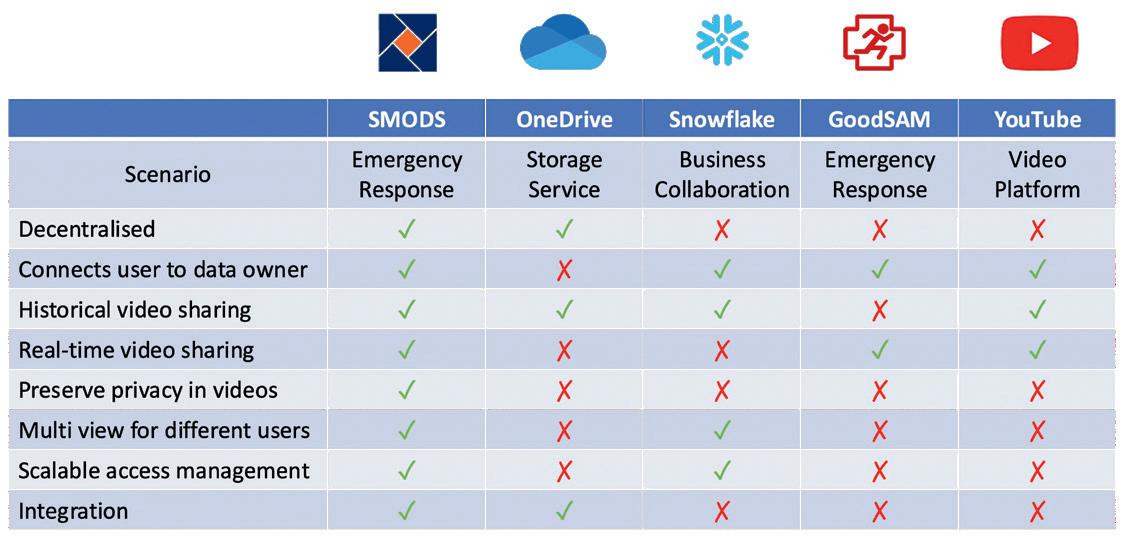
Limitations of existing data-sharing services.
Another of the CIN’s projects, the Large Area Wi-Fi (LAWi-Fi) system, was recently named the National Merit Recipient in the Technology Platform category of the 2024 iAwards, which recognise excellence in technology and innovation. Billed as a groundbreaking advancement in connectivity for emergency services and first responders, the system is set to transform how ESOs operate — particularly in challenging environments where traditional infrastructure falls short.
The LAWi-Fi system is designed to deliver extensive wireless coverage with unparalleled reliability and speed, even in the most remote and disaster-prone areas. At its core are three key innovations that set it apart:
1. New Wi-Fi protocols: Developed by The University of Sydney, these protocols optimise the system’s performance, ensuring high data rates and stability across large areas, even when network demand is at its peak.
2. New antenna design: The University of Technology Sydney (UTS) has engineered a cutting-edge antenna design that maximises coverage while minimising the number of access points needed. This means faster, more efficient deployment in critical situations.
3. Intelligent satellite backhaul: Provided by Pivotel, this backhaul solution provides resilient and secure connectivity, offering real-time communication and data transfer essential for coordinating emergency responses.
For ESOs, the LAWi-Fi system serves as more than just a technological upgrade — it’s a lifeline. Whether during natural disasters or in remote areas with no existing infrastructure,
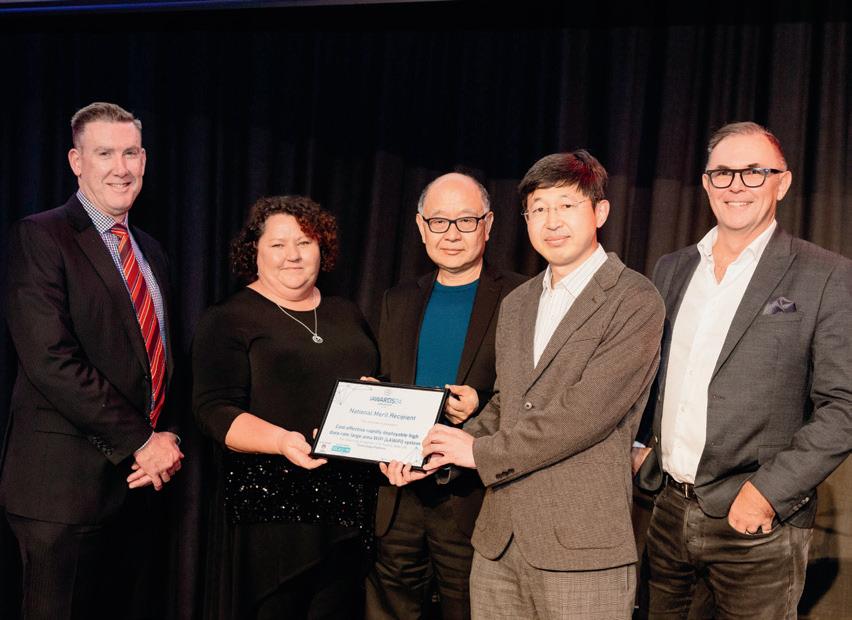
The award was accepted by Darren Cooley (Pivotel Satellite), Tricia Wilson (Pivotel Satellite), Distinguished Professor Jay Guo (Connectivity Innovation Network) and Professor Yonghui Li (The University of Sydney).
the system means that first responders can stay connected, share crucial information and save lives.
Back in July, the CIN and its collaborators were awarded a grant of $1.5 million under the Telecommunications Disaster Resilience Innovation (TDRI) program to support the next phase of the LAWi-Fi project. With this funding combined with LAWiFi’s innovative approach, the system has the chance to become an indispensable tool for emergency services across Australia and beyond.
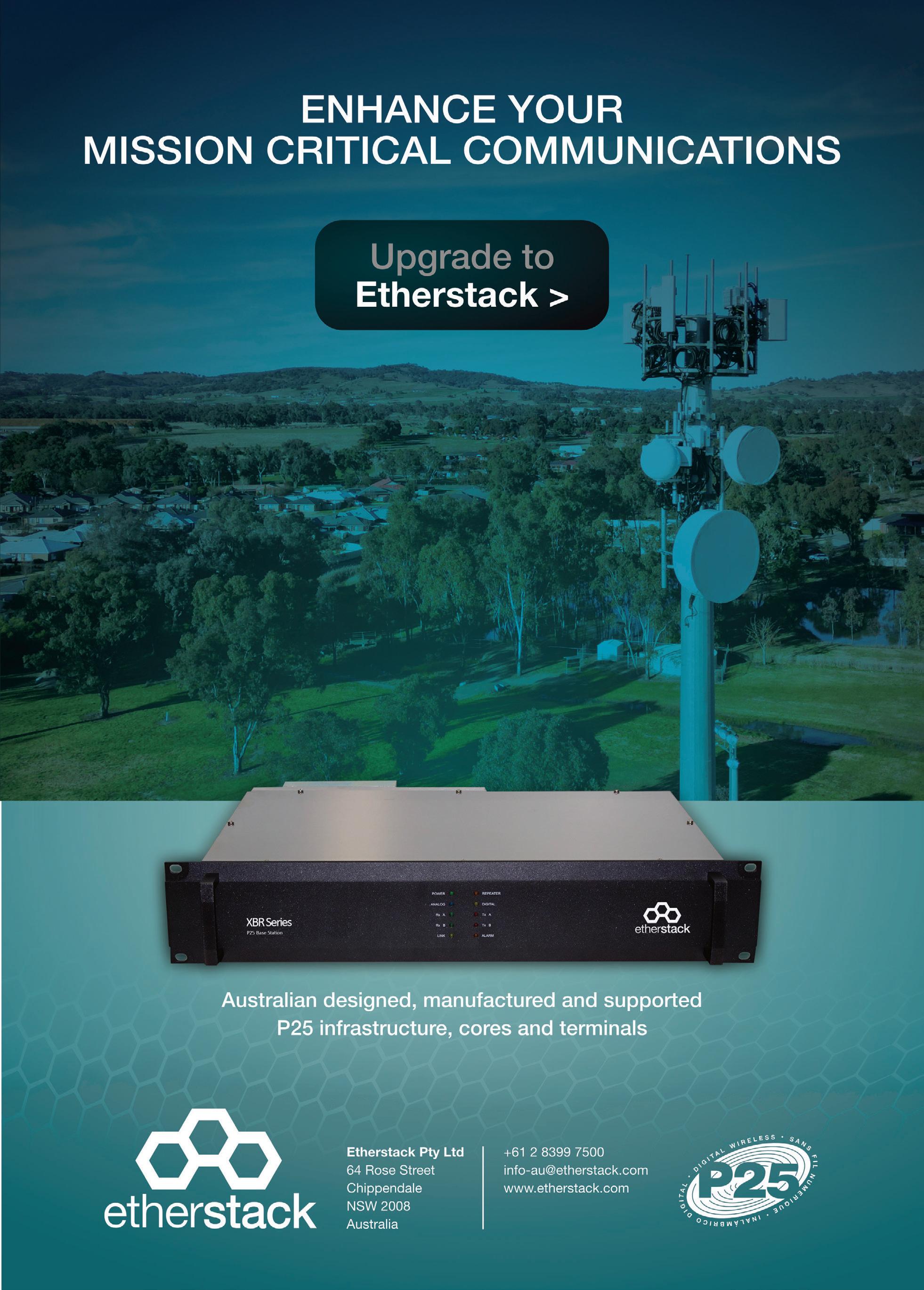






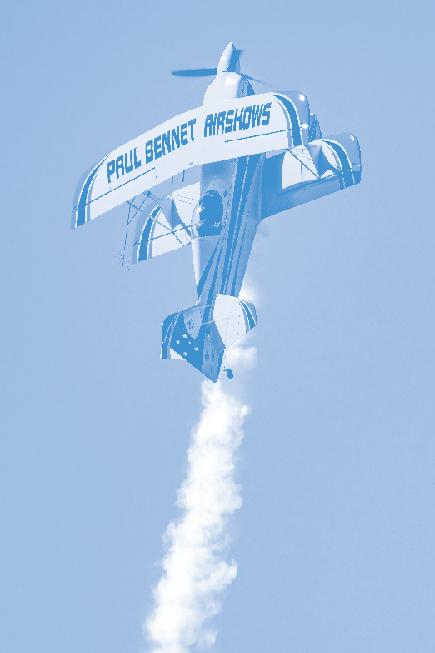












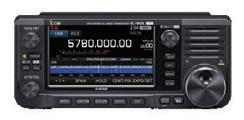

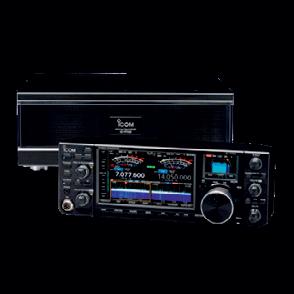










Nokia and Axiom Space have announced a partnership to integrate advanced 4G/LTE communication capabilities into the next-generation spacesuits that will be used for the Artemis III lunar mission.
Axiom Space’s spacesuits will provide astronauts with advanced capabilities for space exploration while providing NASA with commercially developed human systems needed to access, live and work on and around the Moon. The company was awarded US$57.5 million from NASA to make the 4G/LTE network modification to its Axiom Extravehicular Mobility Unit (AxEMU) spacesuit for the Artemis III mission, building upon its first Artemis task order in 2022.
Nokia, meanwhile, plans to deploy the first cellular network on the Moon as part of Intuitive Machines’ IM-2 mission, which is scheduled to be delivered to the launch site in 2024. During that mission, Nokia aims to demonstrate that cellular connectivity can facilitate crucial communications during future lunar or Mars missions. Nokia’s Lunar Surface Communications System (LSCS), pioneered by Nokia Bell Labs’ research and innovation, will be deployed during IM-2 and will be further adapted for use in the AxEMU spacesuit.
Together, Nokia and Axiom Space will incorporate high-speed cellular network capabilities into the portable life support system (PLSS) or ‘backpack’ on the spacesuit, supporting HD video, telemetry data and voice transmission over multiple kilometres on the Moon. This advancement will enable Artemis III crew members to capture real-time video and communicate with mission controllers on Earth while they explore the lunar surface.
The fully autonomous LSCS has two components: a network-in-abox that combines the radio, base station and core network elements of a terrestrial cellular network into a single unit, and device modules that will be integrated into the AxEMU spacesuits. Both the network and device modules have been carefully engineered to withstand the extreme environmental conditions on the lunar surface and the dynamic stress of spaceflight, and have been optimised for size, weight and power consumption.
“Axiom Space is excited to work with Nokia to build on the advanced capabilities of our next-generation spacesuit,” said Russell Ralston, Axiom Space Executive Vice President of Extravehicular Activity. “Adding high-speed 4G/LTE network capability on the Moon will serve as a vital bridge linking astronauts to Earth, facilitating crucial data exchange and enabling high-definition video communication over long distances.”
Energys and Telstra have commissioned five hydrogen-powered backup generators at critical regional mobile phone towers around Victoria, the last of which came online in early July. The Hydrogen Fuel Cell Generators, manufactured by Energys at its Mulgrave facility, will provide long-duration zero-emissions power to critical mobile phone towers in case of natural disasters and other unplanned electricity grid outages.
In October 2023, the Victorian Government provided a Renewable Hydrogen Commercialisation Pathways Fund grant of $1,115,185 to Telstra to deploy renewable hydrogen generators in five Victorian regional areas that suffered outages after the powerful 2021 storms, thus removing reliance on fossil fuel generators while supporting the reliability of telecom services in times of high demand. Telstra selected the five tower sites — Neerim North, Chum Creek, Christmas Hills, Coldstream and Kinglake — due to their vulnerability to electricity grid storm damage and their importance in supporting regional communities during extreme weather events.
Designed to international and Australian standards, Energys’s hydrogen generator range features commercially ready power products that service the most common applications currently serviced by diesel generators; these include 12, 40, 125 and 250 kW systems available to customers ‘off the shelf’. The company said its turnkey power products are drop-in zero emissions replacements for traditional diesel electric generators, which have been the mainstay of backup power and energy resilience since the 1950s.
Energy Safe Victoria has signed off on Type B regulatory compliance for the five Telstra sites and the Energys hydrogen generator, which has been operating at Toyota in Altona since 2019. Further systems in Queensland and Western Australia are also in advanced stages of regulatory approval.
“We’re thankful for Telstra’s trust in Energys to deliver critical backup power systems that will service these five sites during natural disasters and extended grid outages,” said Energys Managing Director Roger Knight. “It’s a huge endorsement of the reliability and readiness of our hydrogen generators.”
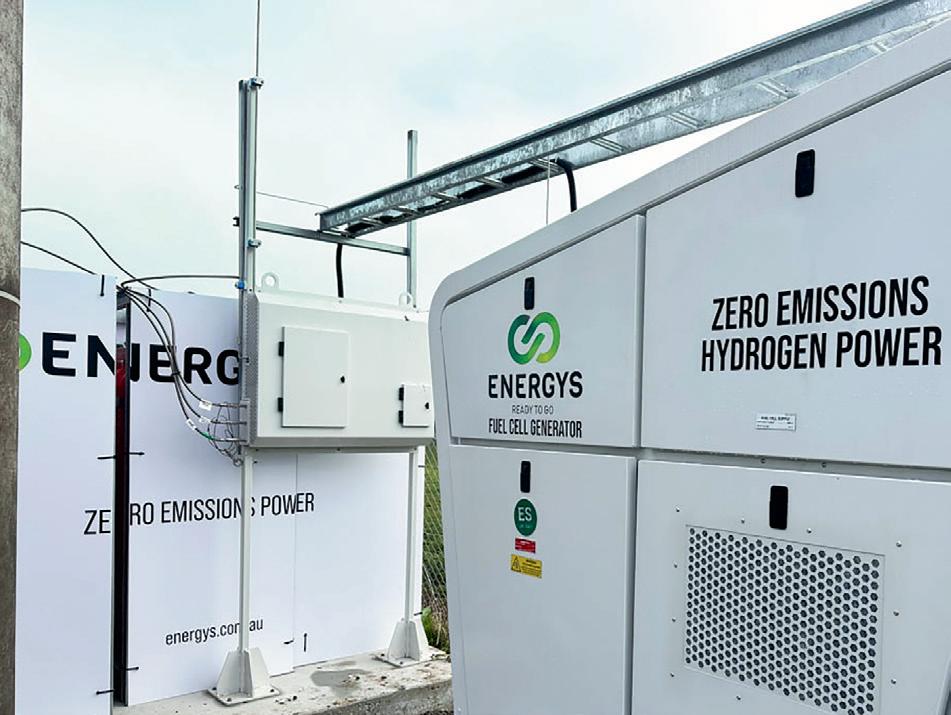


The NSW Government has announced it is preparing for the upcoming bushfire season with the rollout of new firefighting tankers and cutting-edge satellite technology to keep crews more connected and safer during emergencies.
In a significant upgrade, NSW Rural Fire Service (RFS) vehicles will now be equipped with vehicle-as-a-node (VaaN) technology to ensure RFS personnel can communicate during a disaster in the most remote locations or if communication systems go down. The Starlink satellite technology will enable the use of radios, mobile phones and other handheld devices anywhere and at any time — even in remote areas or if communication infrastructure has been damaged during a disaster.
The upgrade will provide an important backup to communication systems and location-finding technology already in use. It will also give crews the capability to live stream video of fires from anywhere in the state, providing command centres with the latest intelligence about an incident. More than 5000 RFS operational vehicles will be equipped with the new technology over three years under the $69 million VaaN project.
The RFS is partnering with the NSW Telco Authority to deliver the communications upgrade, with installations beginning this year. The upgrade comes after the RFS delivered 143 new and 69 refurbished firefighting tankers to brigades across the state over the past year, with the refurbished trucks now featuring a halo sprinkler system for the cabin, custom-fitted heat curtains, electric hose reels, and portable Public Safety Network and fireground radio chargers.
“It’s important our volunteer firefighters have the right equipment and vehicles to do the job,” said NSW Premier Chris Minns. “These new trucks and technology upgrades will boost the protection of communities across the state. We are providing our first responders with communications technology they can rely on when they need it most.”
“While the existing trucks have served our brigades well, it’s important that we safely equip members so they can best serve their communities across NSW,” added RFS Commissioner Rob Rogers. “Communications blackspots are a significant obstacle for rural firefighters and can make an already challenging operation even harder. This new technology greatly enhances our network of brigades across the state and will assist communities when needed.”
The Australian Government has announced it will invest over $100 million to boost the Australian Defence Force’s (ADF) arsenal of drones, demonstrating its commitment to national defence.
The acquisition of two small uncrewed aerial systems (sUAS) — both of which can be deployed as a complement to crewed systems — will bolster the ADF’s ability to carry out surveillance and reconnaissance and augments the ADF’s existing stock of drones, including those with multiple payload options.
The Quantum-Systems Vector 2-in1 and the SYPAQ Systems CorvoX will enhance ADF force protection and potency capabilities across land and littoral operations by supporting the Australian Army and Royal Australian Air Force in confined areas — including small marine craft — and urban environments. The partnership with Quantum-Systems and SYPAQ Systems is expected to create at least 30 highly skilled jobs in Brisbane and Melbourne.
“Defence’s partnership with two pioneering companies is an example of how the Albanese government is not only investing in Australian
ingenuity, but also in the capabilities our ADF personnel needs to keep Australians safe,” said Minister for Defence Industry Pat Conroy.
The 2024 Integrated Investment Program (IIP) includes investment in a range of uncrewed and autonomous systems that can work together and complement crewed systems on a range of missions that will support the strategy of denial, hold potential adversaries at risk and increase the potency of ADF capabilities. The government is investing more than $10 billion on drones, including at least $4.3 billion on uncrewed aerial systems and $690 million on uncrewed tactical systems for the Army.
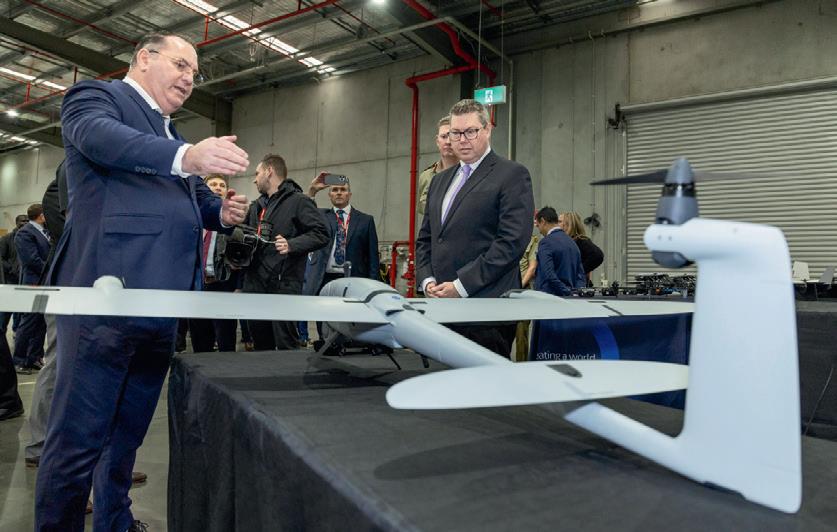
at scale and able to operate in contested warfighting environments. This approach will add to the more than 20 drone systems already acquired, including models that have been in service for more than a decade and platforms with multiple payload options.
The two new sUAS will be delivered in 2025 as Defence continues expediting the acquisition of new drones while continuing to trial lowcost, expendable uncrewed and autonomous systems which are capable of production
“The delivery of these uncrewed aerial systems in 2025, within a year of project approval, is a significant demonstration of Defence and industry’s strong partnership, and [the] intent to enhance the speed at which we introduce capabilities in support of current and future Defence requirements,” Conroy added.

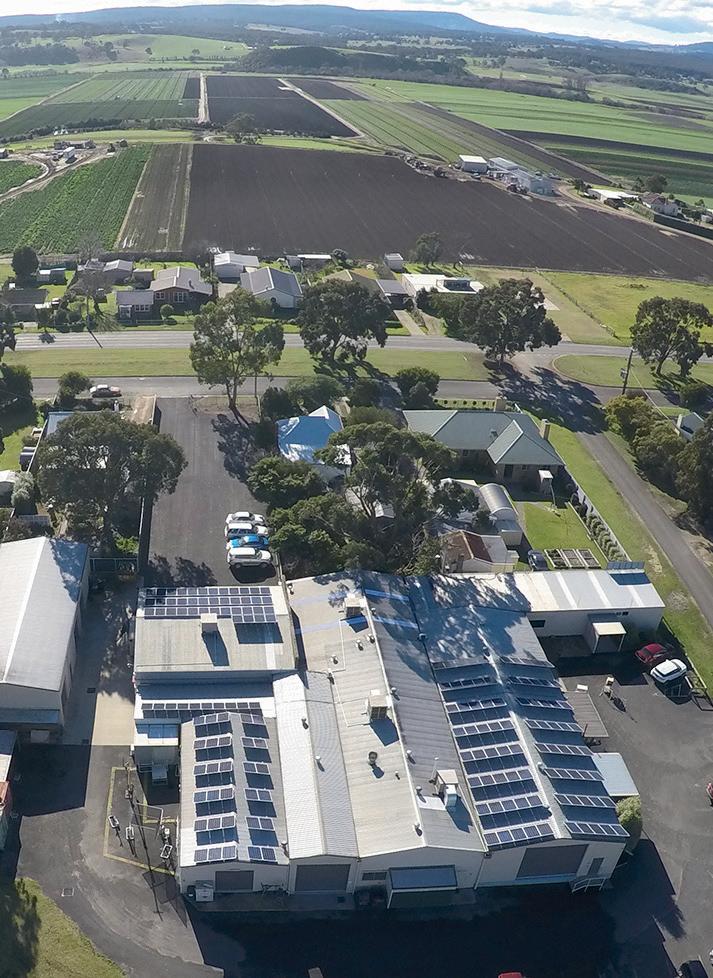

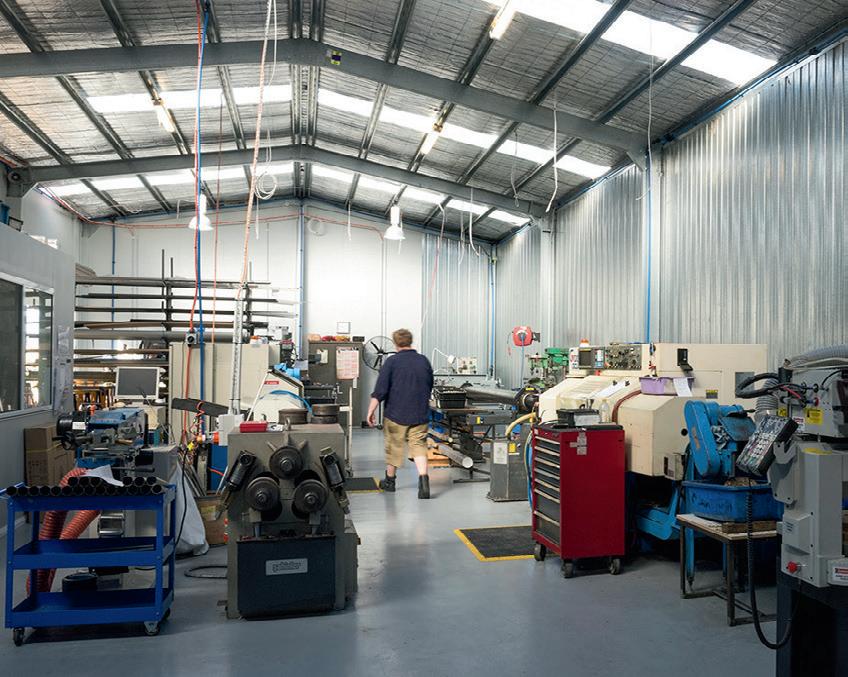
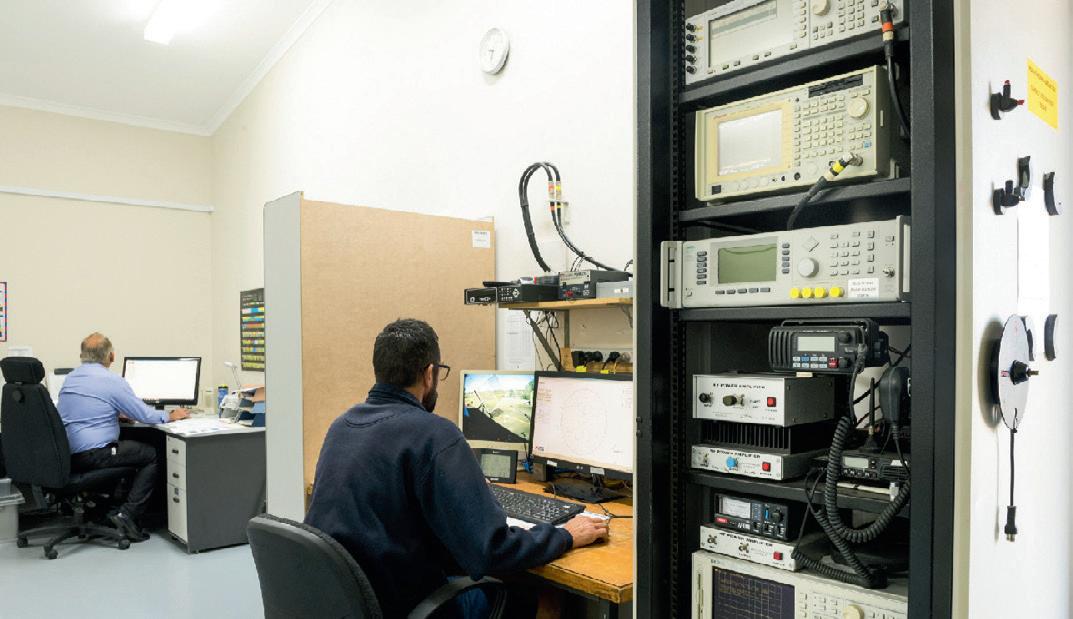
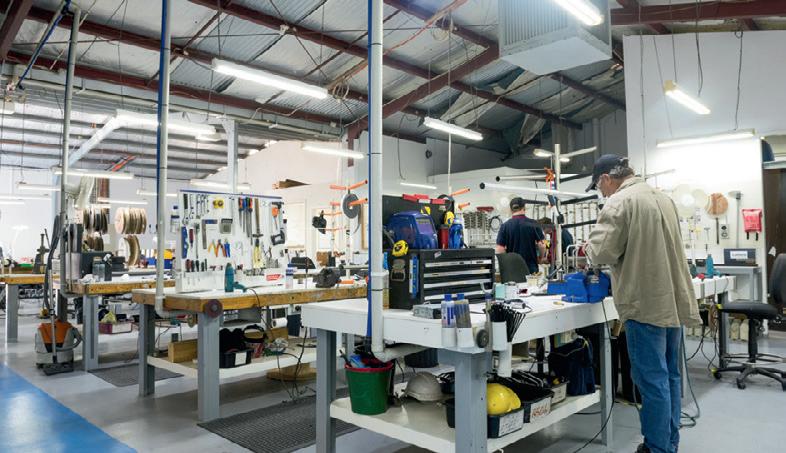

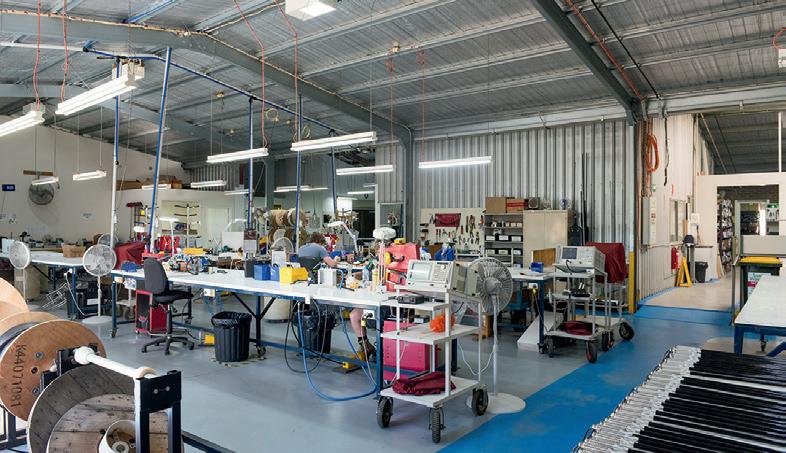
The 2024 edition of Comms
Connect Melbourne, taking place at MCEC on 16–17 October, is set to be the largest in the show’s 16-year history.
The event will cover four bays at the MCEC this year, with a record number of exhibitors booked and more key executive international and local leaders set to feature in the conference program than ever before. And with three concurrent conference streams to choose from — Public Safety, Critical Comms and Industry — attendees can build the agenda that best suits their interests.
The keynote speaker on day one will be Chief Richard Carrizzo, Chair of the FirstNet Authority in the USA, providing a global bestpractice view of public safety comms. He will be joined at the conference by FirstNet’s Director of Innovation, Brian Hobson, as well as other US representatives including but not limited to Project 25 Technology Interest Group board member Cheryl Giggetts, providing a P25 global update; Don Griffis from L3Harris, detailing how converged devices can benefit public safety personnel; and the National Institute of Technology’s (NIST) Ellen Ryan, Monika Bochert and Stephanie Layman, sharing some of their research into using AI and machine learning for first responder applications.
Providing a Nordic perspective on the comms world, Tero Pesonen from Critical Communications Finland and Elina Avela from Beaconsim Finland will outline how the Finnish ecosystem is addressing the transition to mobile broadband. Meanwhile, GSMA APAC’s Terence Wong is jetting in from Hong Kong to discuss how the implementation of 5G technology is acting as a catalyst for digital transformation across various industries. And closer to home, New Zealand will be sending representatives from Hourua, Tait Communications and Next Generation Critical Communications (NGCC) — all of which are

Lauren Davis
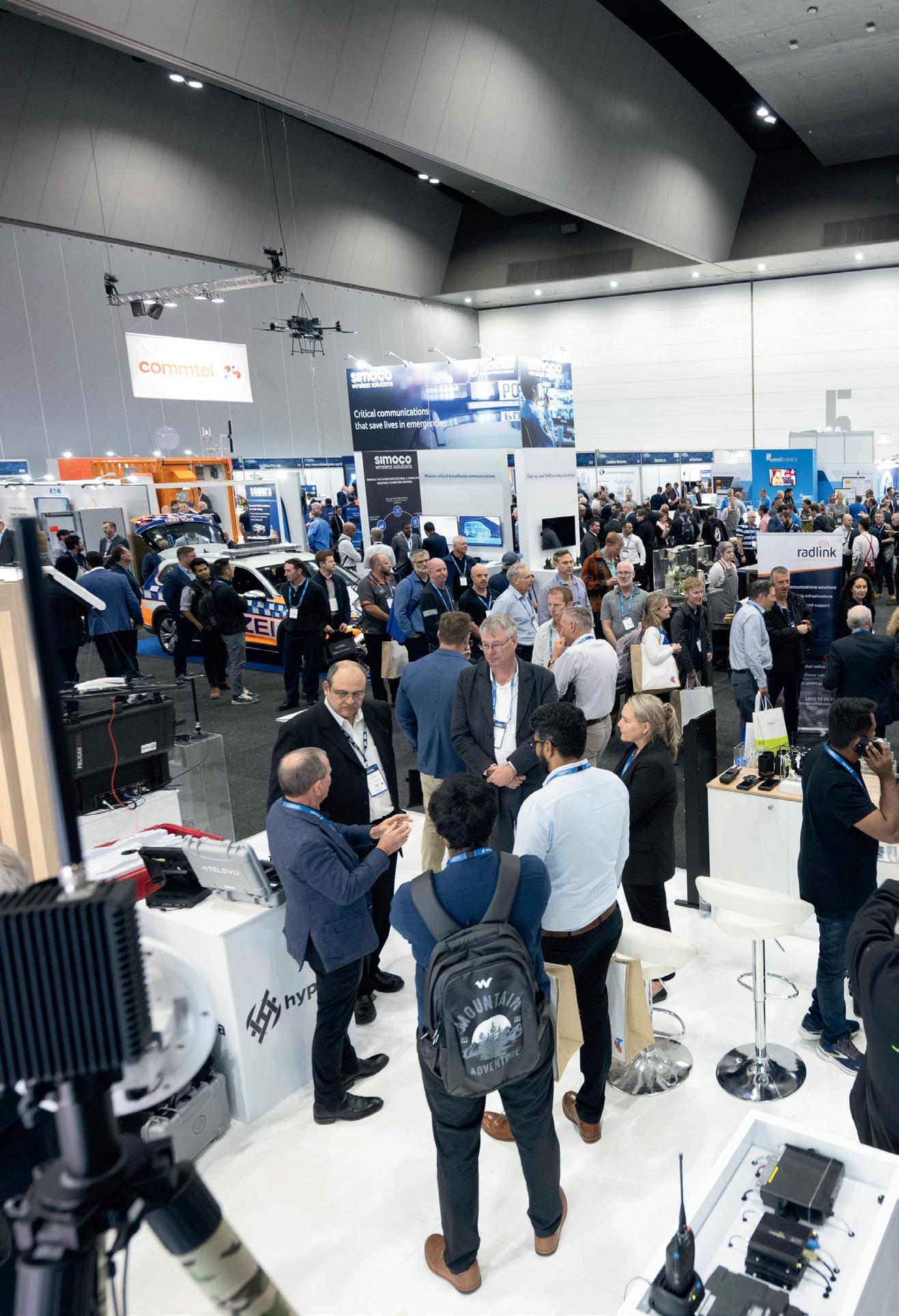

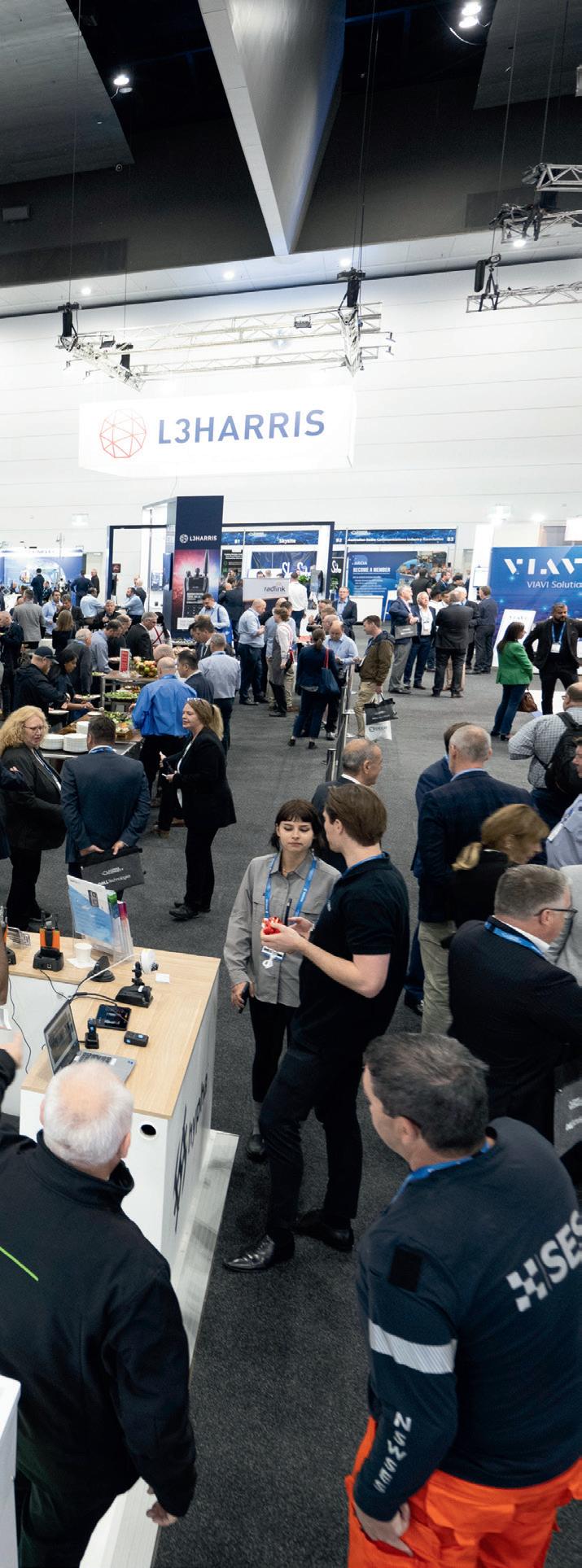
What:
Comms Connect Melbourne
When: 16–17 October 2024
Where: Melbourne Convention & Exhibition Centre Web: melbourne.comms-connect.com.au
involved in delivering the country’s Public Safety Network (PSN). For the latest NZ PSN updates, see our article on page 22.
Local industry leaders will include NSW Telco Authority (NSWTA) Managing Director Kylie De Courteney, who will explain the need for and benefits that Public Safety Mobile Broadband (PSMB) will bring to Australia’s first responders by providing a glimpse of the future uses of PSMB and current examples from around the globe. Separately to this, NSWTA Associate Director of Engineering Architecture Khalid Salim will outline the massive task the Authority undertakes each day to manage NSW’s own PSN — one of the largest P25 networks in the world.
Andrew Ugarte, from Surf Life Saving NSW, will provide an overview of the organisation’s UHF voice linking project covering terrain and climate challenges, building in resilience to help minimise ongoing expenditure. Tony Hine, from Fire and Rescue NSW (FRNSW), will meanwhile explain how FRNSW is utilising existing radio technologies to work in domains outside of traditional firefighting, and the technological gaps that remain challenging to overcome.
Luke Marchant, from Telstra Enterprise, will explore Telstra’s journey with the recently completed Tasmanian Government Radio Network (TasGRN) as well as the continued evolution of the South East Queensland-based Government Wireless Network (GWN) — including what the future will look like as we head towards the 2032 Brisbane Olympics. And Garry Kerr, from the Queensland Police Service, will explain how the Service is managing and maintaining its radio networks outside of SEQ, while simultaneously leveraging security and roaming enhancements as well as black spot reduction.
Four leadership panels will be held across the two days of the conference, featuring local and international panellists. These sessions will cover satellites and the future of critical comms; P25 develop -
ments locally and globally; emerging tech and the impact on critical comms; and an introduction to TAK from those using it in the US and UK. An additional panel, moderated by British APCO Chief Operating Officer Duncan Swan, will detail some of the recent carrier network failures around the globe that have impacted on delivering emergency communications.
In the lead-up to the conference proper, Comms Connect association partners ARCIA and ACCF/TCCA will be holding a series of preconference workshops, covering subjects including P25 standards, the TAK imperative, international mission-critical LMR/broadband deployments and private LTE/5G fundamentals. These workshops will be held at MCEC on 15 October and will be able to go into more depth than is possible with a standard conference presentation. They can be booked as part of the conference package or individually.
The exhibition hall will showcase over 90 leading local and international critical communications and public safety technology vendors, including key partners Telstra, L3Harris, Tait Communications, Hypha and RFI Technology Solutions as well as sponsors like Motorola, Radlink, Ericsson and Omnitronics. The exhibition is open all day on 16–17 October and when delegates are not attending the conference streams they are welcome to visit the exhibition floor.
Networking drinks will be held in the exhibition hall on the evening of 16 October, which will be followed upstairs by ARCIA’s Gala Dinner and Industry Excellence Awards. Featuring guest speaker and MC Libbi Gorr, one of Australia’s finest live hosts and broadcasters, the event will be a night to celebrate all that is great about the radio and critical communications industry, including some of its most outstanding individuals and organisations.
Flexible attendance options are available, including one- or two-day conference packages, with or without workshops, or if time is limited, a free exhibition-only pass. Discounts are available for group registration.
8.50am Welcome and opening remarks
Geoff Hird – Events Director, Comms Connect, and MC, Chris Stevens
9.00am KEYNOTE: Public Safety comms – a global best practice view
16
Brian Hobson – Senior Director Roadmap Development Division, FirstNet Authority
9.30am Driving Innovation across TasGRN, Qld GWN and PSEC

Luke Marchant – General Manager, Industry & Customer Advisory, Telstra Enterprise; Tim Rutherford – CTO, TAS Dept of Police, Fire & Emergency Management; Craig Stolte – Superintendent, Operational Communications Unit, Queensland Fire Department
10.00am The future of an Australian PSMB
Kylie De Courteney – Managing Director, NSW Telco Authority and Brad Creevey – Assistant Coordinator General, PSMB Taskforce, NEMA
10.30am MORNING BREAK
11.15am P25 global update
Cheryl Giggetts – Board Member, Project 25 Technology Interest Group (USA)
11.45am AI Intelligence & real-world applications — machine learning for advanced public safety communications
Ellen Ryan – Deputy Division Chief, NIST PSCR; Stephanie Layman – UAS Prize Challenge Specialist, NIST PSCR; Monika Bochert – Emerging Tech Research Analyst, NIST PSCR
12.15pm NSWTA: the challenge of managing one of the world’s largest P25 networks
Khalid Salim – A/Director Engineering, NSW Telco Authority
No honour among thieves: Cyber threats targeting critical comms systems
Vanessa Leite – Cyber Security Specialist, CyberCure
Transitioning from Narrowband Communications to Hybrid PTToC and Broadband Technologies
David Deacon – CEO, Etherstack
The impact of 5G on AI/XR/IoT for digital transformation in industries
Terence Wong – Head of APAC 5G Industry & IoT, GSMA
Digital LMR & location services –battle of the titans
David Ross – Senior Software Engineer, Omnitronics
Next-gen command centres & interoperability between networks, states and agencies
Martin Rampl – Managing Director, Frequentis Australasia
Wireless Technologies – making the best technology decision for your use case
Justin Wyatt – Principal ICT Consultant, Titan ICT
12.45pm LUNCH BREAK — Exhibition Hall — Sponsored by Radlink Communications
1.45pm How the Finnish ecosystem is addressing the challenges of transition to mobile broadband
Tero Pesonen – Coordinator, Critical Communications Finland
Elina Avela – CEO, Beaconsim Finland
2.15pm Commercial Carrier & Mobile Networks do fail – are you prepared?
Moderator: Duncan Swan – Chief Operation Officer, British APCO
2.45pm
Panellists: Geoff Spring – Senior Industry Advisor, University of Melbourne, Centre for Disaster Management and Public Safety
More panellists TBC
3.15pm
3.45pm Mapping the Public Safety future. GIS for situational awareness @ PSN & GRN
Chris Stevens – Managing Director, CartGIS
Strategic framework for integrating FRMCS in existing railway infrastructures
Bahador Nayebifar – Principal Rail Engineer, Mott MacDonald
The new frontier | Underground LTE for mining – a customer success story
Rodney Nebe – ICT Infrastructure Manager, Goldfields Australia
Mal Jones – Principal Consultant, Vocus
Finding purpose-built UAS innovation for Public Safety through a US Government competition series
Ellen Ryan – Deputy Division Chief, NIST PSCR; Stephanie Layman – UAS Prize Challenge Specialist, NIST PSCR; Monika Bochert – NIST PSCR
Failsafe connectivity in remote Australia
Mark Tate – Technology Operations Manager, SA Power Networks
Spectrum for wireless broadband –an update
Andrew May – Executive Manager, Spectrum Engineering Australia
5G Broadcast for emergency warning systems, navigational positioning & OTA connectivity
Nils Ahrens – APAC Manager, Broadcast & Media, Rohde & Schwarz
5G for critical communications
Nick Bromhead – CTO and Head of Network Solutions, Ericsson Australia & New Zealand
Innovative use of multiple technologies for resilient systems
Jim Nelson – President & CEO, Prism-IPX
4.15pm PANEL: Global & local challenges and opportunities for critical comms via emerging technologies
Moderator: Ken Rehbhen – Principal Analyst, CritComms Insights
Panellists: Dennis Alvord – Deputy Executive Director for External Affairs, First Responder Network Authority; Vaughan Matthews –General Manager, Hourua; Monika Bochert – Emerging Tech Research Analyst, NIST PSCR; Luke Marchant – General Manager, Industry & Customer Advisory, Telstra Enterprise; Terence Wong – Head of APAC 5G Industry & IoT, GSMA; Hamish Duff – President, ARCIA
5.00pm NETWORKING DRINKS — Exhibition Hall — Sponsored by Hypha
6.00pm

Thursday, 17 October
8.55am Welcome and opening remarks
Chris Stevens – MC, Comms Connect
9.00am KEYNOTE: Satellites and the future of critical comms
Natalie Kolodziej – Group Owner - Commercial, Private and Emergency Services Networks, Telstra
9.30am Improving the reliability of satellite-based positioning systems in Australasia with SouthPAN
Dr Martine Woolf – Branch Head, Space Division, Geoscience Australia
10.00am Terrestrial vs Non-Terrestrial Networks – Pros, cons and synergies
Moderator: Chris Stevens – Managing Director, CartGIS
Panellists: Lincoln Mackay – Head of Technology, Hourua; James Pickens – CTO, NSW Telco Authority; Ellen Ryan – Deputy Division Chief, NIST PSCR; Tero Pesonen – Vice Chair, TCCA and Chairman, CCBG; Brad Creevey – Assistant Coordinator General, PSMB Taskforce, NEMA
10.45am
11.15am Improving radio & accessory design for firefighters
Tony Hine – Operational Communications Systems Officer, Fire & Rescue NSW
11.45am Qld Police radio comms maintenance & enhancement plan
Garry Kerr – Director, Frontline Communications & Response, Qld Police Service
12.15pm Surf Life Saving NSW – Resilient mission-critical voice backhaul across challenging coastal terrain
Andrew Ugarte – Communication Systems Manager, Surf Life Saving NSW
1.45pm PANEL: What is TAK and why aren’t we using it?
Satellite direct to device – disruptive technology?
Mark Sprey – Senior Comms Engineer, Nova Systems; Phillip Conder – Senior Comms Engineer, Nova Systems
Advancing interoperability in public safety communications
Paul Elmes – Managing Director APAC, Tait Communications
Leveraging public assets for network expansion (rail industry)
Matt Schultz – Partner, Gravelroad Group
mmW wireless for Public Safety – the Fort Myers USA story
Precision in rail coverage simulation: Utilising 3D high-resolution maps for superior prediction and issue detection
Farhad Sedghi – Spectrum & Technology Specialist, ATDI
Tomorrow’s digital ecosystem
Grant Smith – Telco Head, Prospecta Utilities; Andrew Coulter – Marketing Director, GemLife
Designing resilient microwave networks for mission-critical communications
Eddie Stephanou – Technical Manager, Cambium Networks
Panellists: Ken Rehbehn – Principal Analyst, CritComms Insights; Jared VandenHeuvel – Chief Innovation Officer, Texas Dept of Public Safety; Charles Laird – Technology Specialist, NCDIT – FirstTech Program; Neil Jamieson –Group CEO, Hypha
Luke O’Kelly – Head of Private Networks APEI, Ceragon Networks
2.15pm The game-changing LEO satellite landscape
Ashley Neale – Head of Operations Vocus Space & Wireless, Enterprise & Government, Vocus
2.45pm PANEL: P25 for the future – applications, capabilities, technology enhancements and more
Moderator: Chris Stevens – Managing Director, CartGIS
Converged devices extending communication coverage, security & safety of today’s public safety personnel
Don Griffis – Principal Product Manager, L3Harris Corporation
3.30pm
To view the
Panellists: Cheryl Giggetts – Board Member, Project 25 Technology Interest Group (USA); Callum Noon – National Product & Service
Delivery Manager, Next Generation Critical Comms NZ; Tony Hine – Operational Communications Systems Officer, Fire & Rescue NSW; Dylan Earle – Business Solutions Manager, Tait Communications; Garry Kerr – Director, Frontline Communications & Response, Qld Police Service
visit
ARCIA’s AGM took place on 28 August and I’m pleased to report that we again saw nominations for our 12 committee positions and all executive positions ahead of the meeting, which demonstrates, I think, how engaged the market is with our year-round activities and the outcomes being generated. It was also pleasing to see increased interest from the carrier space, again showing that as an association we are transitioning as the market moves and changes.
As I reported, ARCIA has continued to plan an expansive program to promote the critical communications industry and all its components and, in my opinion, we are largely succeeding in these efforts.
A key reason for the success is the decision the association made to take on a full-time CEO, Paul Davis. His knowledge of the industry and how we could work to bring more people together is showing results:
• Increased numbers attending our events and attendees from a wider range of wireless communications users as well as industry personnel.
• Increased income and benefits for our industry partners who help sponsor the association.
• Increased action on our social media platforms.

• Increased networking through our local Sundowners in many locations.
• Agreement in place with WFE and higher profile assisting Comms Connect.
• Increased opportunities and exposure through attendance at international conferences.
• Commenced industry training with good responses to date and a high level of interest being shown.
The things Paul is doing might be considered by some just to be his job, but he has brought a new breath of life to the role and his skills are now being seen in real benefits to the association, and we should highlight that as verification of the decision made by the committee to move to a full-time CEO role.
We also need to recognise that the association needs to make some structural changes to properly reflect our national footprint and desire to truly represent the whole critical communications marketplace:
1. Constitution changes to provide a longer-term stability in the ARCIA leadership team, making the executive team appointed on three-year terms.
2. Preparation for updating the association name to better reflect the change in our membership base and more direct involvement from the critical communications users — both mission critical and business critical.
With the fantastic support from members and partners, the association’s finances continue to be in good shape, while we continue to invest in networking and conference events. Updating of the association platforms for finance and membership services is occurring so that the association can attract new members and provide value to all levels of members.

Hamish Duff President, Australian
One of the important activities that ARCIA undertakes is to lobby the ACMA for access to spectrum for all members. Our attitude is that while technical protection and standards for spectrum is important, having an open market with access to all is equally important. Spectrum should be used to maximise the economic benefit for all Australians and ARCIA will work with anyone to that end.
As many segments of the critical communications industry provide private networks using many different technologies — some established, others emerging — in urban, regional and remote areas, industry requires access to spectrum as a first step.
It is pleasing to report that after many years of lobbying to get the ACMA to make provisions for private wireless broadband services — a battle we have fought for a decade, initially as a lone voice in the wilderness — we are now seeing new allocations and a process to make this happen.
Indeed, on use of LTE for public safety, ARCIA has been campaigning along with many industry colleagues for the Australian Public Safety Mobile Broadband program to happen. Access to communications is vital to all public safety users and it seems the lessons of past natural disasters are soon forgotten.
ARCIA has reached out to the National Emergency Management Agency (NEMA), as they called for industry input though an RFI process. Our members are part of the critical communications landscape and have vast levels of experience to offer, so we encourage any and all to raise PSMB issues through the committee, as we will share these thoughts with NEMA.
Finally, I have no doubt the critical communications industry will continue to grow and flourish, regardless of the underlying technology, so let’s continue to gather, collaborate and learn from each other when the opportunities arise, as we have been doing for many years.



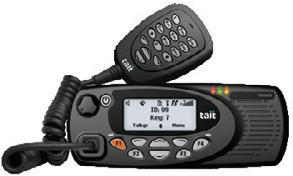
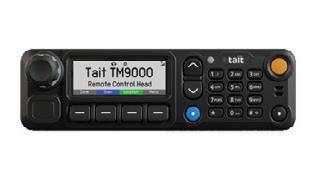
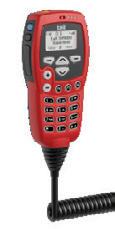
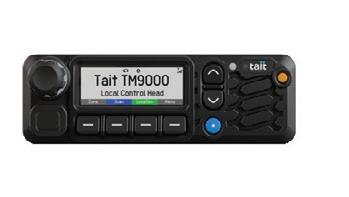


The New Zealand Government has welcomed the launch of a new pilot area for the country’s new land mobile radio (LMR) network — part of the national Public Safety Network (PSN) — which will provide emergency services with the modern, resilient, secure radio technology they need to strengthen their critical communications and keep New Zealand communities safe.
The PSN is a significant infrastructure project, investing NZ$1.4 billion over 10 years to build and operate the new networks and services and to roll out new devices to emergency services staff, stations and vehicles. It is being delivered by Next Generation Critical Communications (NGCC) on behalf of New Zealand Police, Fire and Emergency New Zealand, Hato Hone St John and Wellington Free Ambulance.
Sitting at the heart of the PSN, the digital LMR network will have sufficient resilience for emergency services to rely on it as a network of last resort. It will support push-to-talk communications (which are used extensively by the emergency services), provide location services and enable increased communications between the emergency services by offering common communication channels.
“Reliable, secure, modern communications are vital to frontline responders,” said NZ Emergency Management and Recovery Minister Mark Mitchell. “The new land mobile radio network will help coordinate these services, for the safety, wellbeing and prosperity of all New Zealanders.”
The network will also be fully encrypted, meaning only emergency services personnel can access transmissions. Mitchell noted, “Eliminating outside disruption will be a game
changer for our emergency services, ensuring greater safety of frontline staff and for the security of the information they are sharing.”
Internal Affairs Minister Brooke van Velden said she is excited about the benefits the new network will bring to fire and emergency personnel in terms of safety, operational efficiency and productivity, as they respond to members of the community in need.
“For the first time in New Zealand’s history, the four emergency services agencies will share the same radio network,” she said. “This will enable greater interoperability between the organisations, bring improved efficiencies and safety for frontline staff and, ultimately, benefit the communities they serve.”
With the LMR network set to have more than 400 radio sites and involve new handheld radios and mobile vehicle devices, it is critical that the solution will work when it goes live. That’s why Tait Communications subsidiary Tait Systems NZ — which holds the contract to build and maintain the digital LMR network — has deployed the new pilot area in South Canterbury.
The small-scale digital LMR network will enable the emergency services to try out new radios and devices using different operational scenarios by connecting to eight digital radio sites. A Tait Systems NZ Service Management Centre will be in place to
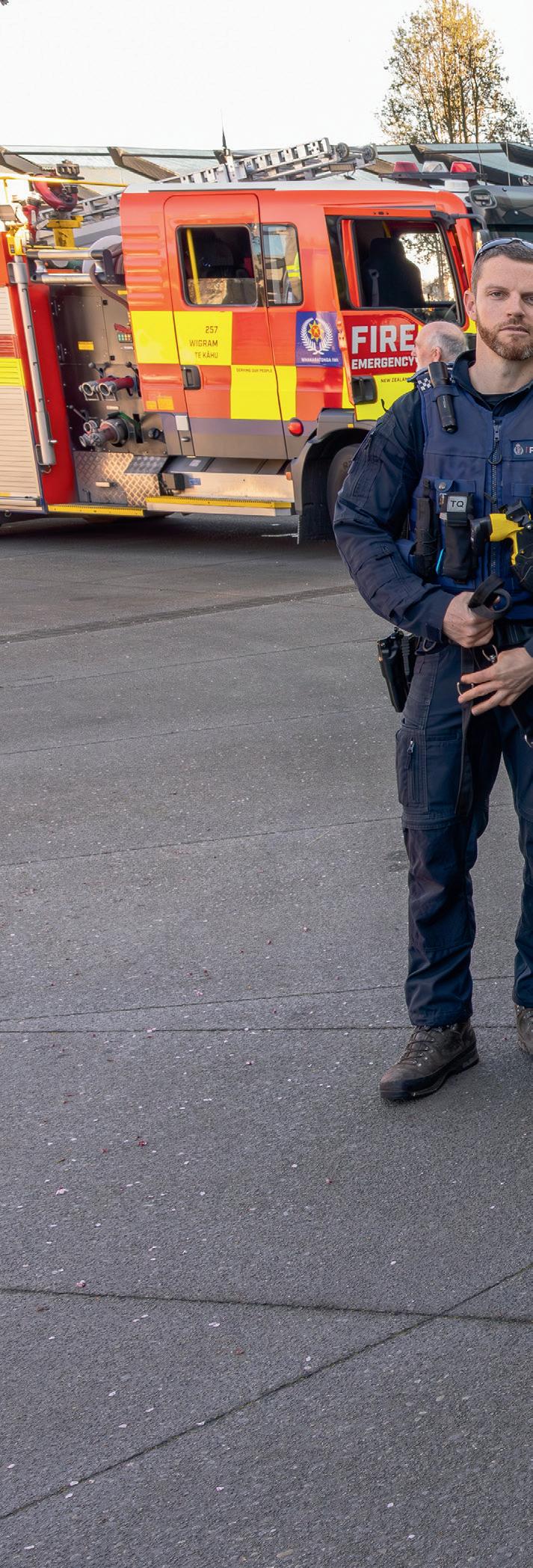
NZ Police Constable Josh Yeoman and his dog, Gusto; Hato Hone St John Senior Ambulance Officer Chris Laufale; NZ Minister of Police and Emergency Services Mark Mitchell; NZ Police Senior Sergeant Paul Furguson; and Fire and Emergency NZ Senior Firefighter Geoff Powell.
Photo courtesy of NGCC.
provide support to the emergency services and check the technology is working and information is flowing.
“For us, delivering the Public Safety Network is about playing our part in the communities we call home,” said Tait Communications CEO Yoram Benit. “It’s a privilege to be helping our emergency services keep New Zealand safe and serve our communities.”
South Canterbury is an ideal location for the pilot area as its geography hosts many of the features found across the country, meaning the radio sites, signals and equipment can be efficiently tested across multiple terrains and scenarios to help prepare for the
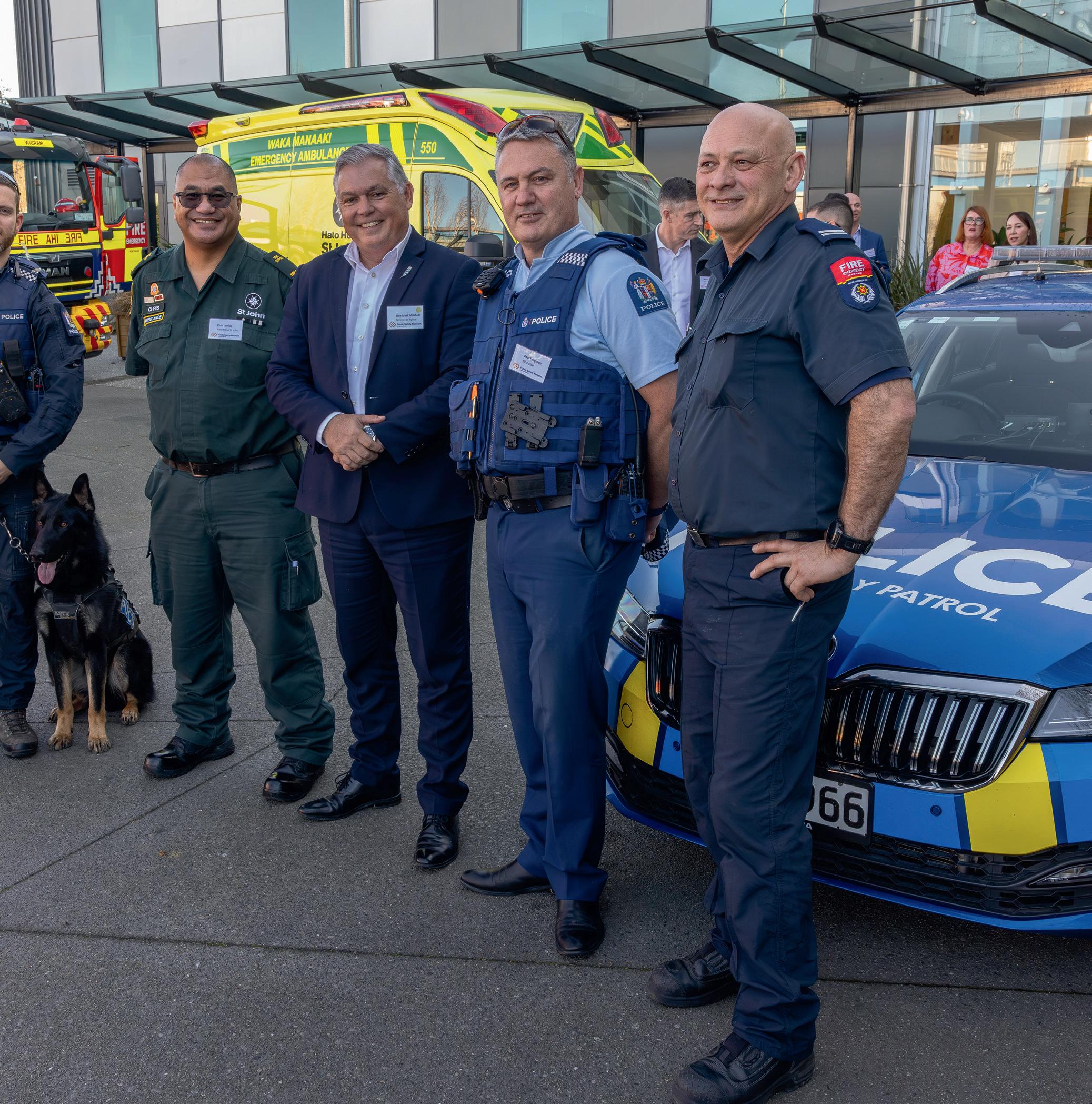
THE SMALL-SCALE DIGITAL LMR NETWORK WILL ENABLE THE EMERGENCY SERVICES TO TRY OUT NEW RADIOS AND DEVICES USING DIFFERENT OPERATIONAL SCENARIOS.
national deployment. Lessons learned during the testing period will help ensure the regional rollout of the LMR network across the country is effective and efficient, supporting frontline responders to do their jobs and stay safe.
The LMR will sit alongside the second component of the PSN, Cellular Services. Cellular Roaming (live since July 2023)
now has 14,000 emergency services users who can roam across Spark and One NZ networks, and Cellular Priority will be live in late 2024. The third element of the PSN involves the modernisation of personal alerting technology, available to Fire and Emergency NZ and Hato Hone St John (including their volunteer workforce).
“We’re proud to be part of a world-leading project of this nature,” Benit said. “When complete, the network will include around 500 sites — one of the largest P25 multi-agency radio networks in the world. It’ll provide capability on par with many other emergency services across the world.”
Delivery of the LMR network will start in Canterbury, Wellington and Auckland in 2025, followed by the project’s remaining eight regions throughout 2025 and 2026.
Representatives from NGCC and Tait Communications will be taking part in various conference sessions at Comms Connect Melbourne.
Australia’s rugged landscape presents inherent challenges for critical communication. For our emergency and public safety agencies, this can be compounded by bandwidth limitations and network resilience. But as satellite connectivity becomes more accessible, and the technology to harness it evolves, these challenges are dissipating.
Today, many agencies are beginning their satellite connectivity journey and looking to move towards more flexible data-centric communication. New hardware and solutions from companies like M2M Connectivity, Peplink and their partners are leading the charge. Designed for the Australian environment, and with a focus on ease-of-integration, they are helping to write a new chapter for satellitepowered connectivity in Australia.
Minimising connectivity risks
The key driver in the transition to satellite connectivity is the need to minimise risk. Traditionally, communication systems used by agencies have been voice-centric networks, but as data becomes more essential, it is critical the data path is as resilient as possible.
To deliver the highest levels of resilience, agencies need to draw on the greatest number of connectivity technologies and networks available at any one time. is includes cellular, Wi-Fi and satellite — dynamically drawn on to meet the unique challenges of a particular environment or incident.
This shift towards a more dynamic, unified and data-centric approach presents agencies with the opportunity to obtain a resilient data connection with technologies such as Peplink SpeedFusion.
Facilitating Australia’s evolution
e arrival of Peplink’s SpeedFusion technology in Australia was a landmark moment for critical communication. Peplink was announced as the rst technology provider to Starlink in January 2024. When combined with Starlink, it was one of the first technologies to make unbreakable networks a reality. The technology has been widely adopted, with Peplink routers, switches and access points now providing the foundation for best-of-breed connectivity in Australia.
Peplink SpeedFusion allows multiple WAN connections to be combined to create an unbreakable high-speed network. It also allows Starlink to be bonded with multiple LTE/5G and ethernet solutions and provides dynamic switching to cellular connections when Starlink gets cut off.
SpeedFusion employs the concept of WAN bonding, which combines multiple WAN connections into a single, highly resilient virtual
tunnel. is allows agencies to combine diverse connections, such as cellular networks, satellite links, and wired internet, to create an integrated and redundant network infrastructure. Continuous connectivity is achieved by drawing on the combined strength of networks and links available. SpeedFusion’s unique Seamless Failover feature ensures that these transitions are smooth and imperceptible. As emergency responders move from one coverage area to another, or as individual WAN connections become unstable, the system dynamically optimises the data flow at a packet level, maintaining session persistence between the remaining available WANs to provide the best connection. The system also allows agencies to prioritise different types of data traffic, including time-sensitive information over the stabilised pipe without dropping the session.
Major Peplink SpeedFusion deployments include Gloucestershire Fire and Rescue (UK) and Don Mueang Airport in Thailand. In Australia, it has been used to deliver critical communication by Heathgate Resources at mine sites in South Australia. M2M Connectivity worked with MIMP Connecting Solutions to deliver this landmark solution. When Peplink was paired with Starlink Satellite, the solution was able to deliver speeds of up to 1.3 Gbps in download and 250 Mbps in upload. With the bonded network, Heathgate Resources was able to supply more than 250 workers with sufficient bandwidth and internet speeds to enjoy during their free time. Live-to-air broadcast company Level Horizons also used Peplink to deliver uninterrupted live drone footage for the Cricket World Cup.
Peplink SpeedFusion has paved the way for a new generation of hardware and solutions for critical communication. e Transit Pro E router is the latest innovation from Peplink to leverage this technology. It has been designed for emergency service agencies operating in remote and rugged environments. The 5G router was recently certified by Telstra and features a ruggedised design which is vibration resilient and tolerant to high temperatures. Josh Velling, Channel Director Peplink at M2M Connectivity, said: “The
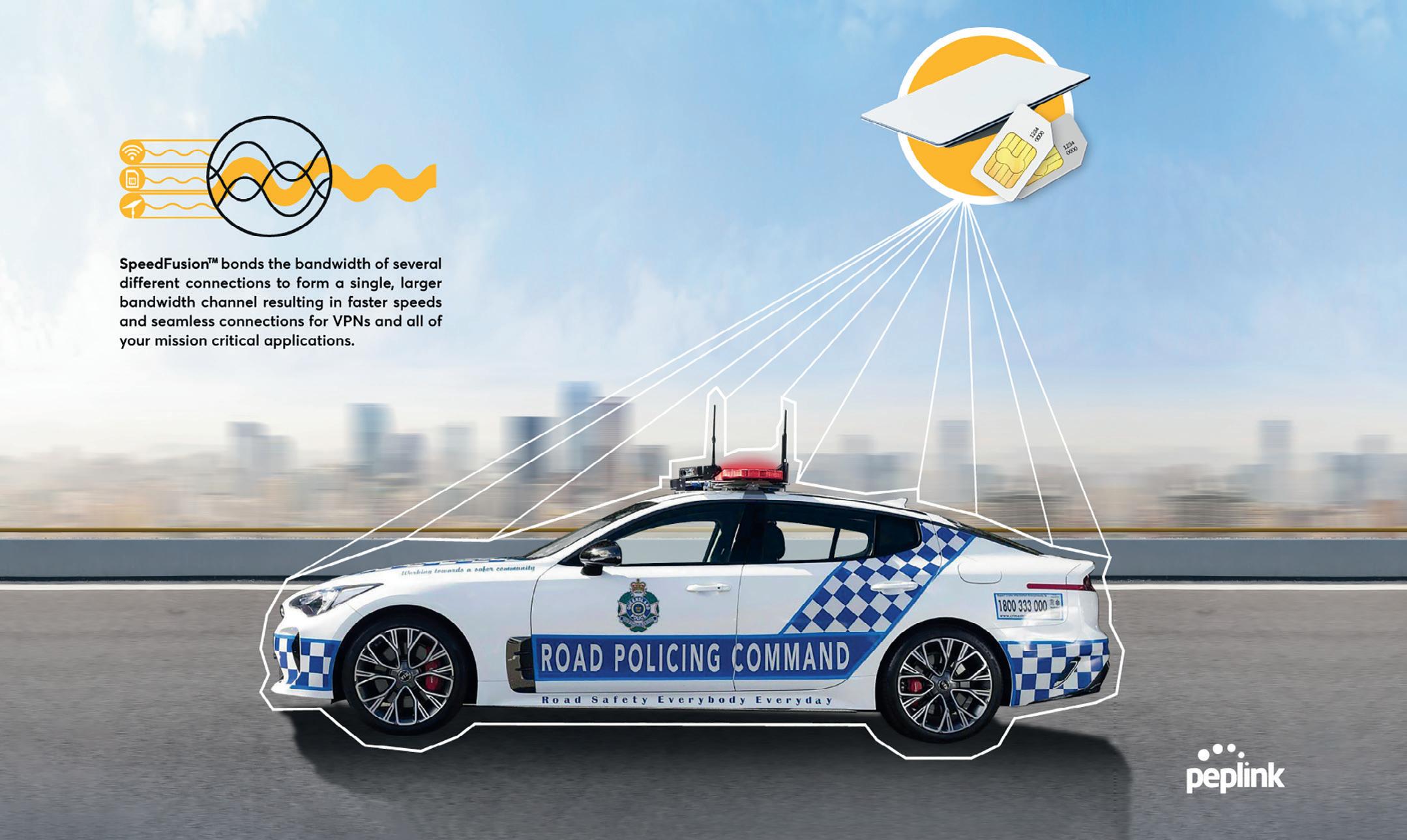
Transit Pro E has been designed specifically for the Australian environment and for emergency service agencies looking to integrate their communication systems with Starlink.
“Now public safety agencies have access to hardware which can withstand Australia’s unique conditions and deliver a huge pipe for critical communication and data across multiple vehicle and multiple gateways.”
The Transit Pro E features 1 WAN port and 3 LAN ports that deliver a SpeedFusion VPN throughput of 400 Mbps and a stateful firewall throughput of 1 Gbps.
“We believe this is a transformative technology and look forward to working with agencies in Australia to leverage its power to deliver alwayson communication in remote areas,” adds Velling.
A vehicle to innovation
When combined with cutting-edge Peplink hardware, today’s shift towards satellite connectivity also opens new avenues — including Vehicle-as-a-Node (VaaN). VaaN is the concept of transforming a vehicle into a mobile network hub to provide robust atincident voice, data and telemetry services.
M2M Connectivity partner AirBridge Networks has utilised Peplink hardware to create its ARNI™ range of products. Short for AirBridge Rapid Network Infrastructure, ARNI is the result of extensive collaboration with Peplink, emergency services and local government.
Doug Stephens, CEO of AirBridge, says: “ e mobile communication centre has been designed to provide fast and reliable connectivity anywhere. At its heart is a Starlink and Peplink solution, delivering blistering download speeds of up to 500 Mbps, complemented by CB and UHF radios and a mobile booster to ensure communication is never compromised. ARNI is now one of Australia’s premier disaster ready satellite-enabled solutions.”
The evolution of satellite connectivity and the introduction of advanced technologies like Peplink SpeedFusion are revolutionising critical communication in Australia. As emergency and public safety agencies face the challenges of our diverse and demanding environment, these innovations are offering unprecedented levels of reliability and resilience. With the integration of Peplink’s cutting-edge
hardware, such as the Transit Pro E, and the seamless connectivity provided by Starlink, agencies are now equipped to ensure robust, uninterrupted communication anywhere. As these technologies advance, they promise to not only further transform the landscape of critical communication, but to improve at-incident safety and most critically save lives.
M2M Connectivity, a Semtech company, is the major distributor of Peplink technology in Australia. They distribute SD-WAN devices with robust wireless capabilities, including the MBX, SDX, EPX as well as the Balance series — designed for organisations of any size. M2M Connectivity also specialise in the implementation of Starlink with Peplink solutions. To supercharge your connectivity, visit www.m2mconnectivity.com.au.
M2M Connectivity
www.m2mconnectivity.com.au
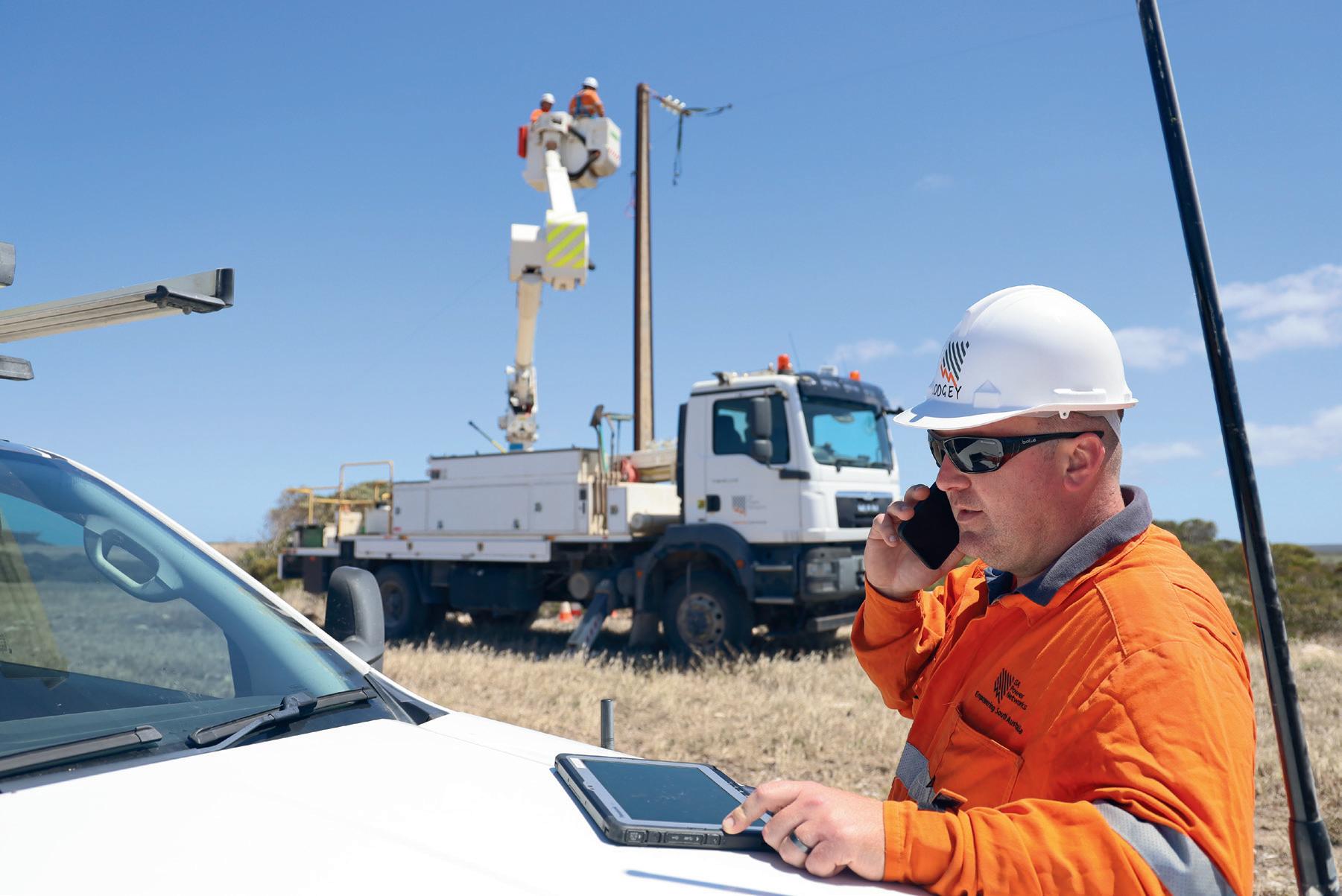
Cradlepoint, a global leader in cloud-delivered 5G and LTE wireless network and security solutions, has announced it is enabling in-vehicle 5G and satellite connectivity for South Australia’s sole electricity distributor, SA Power Networks.
The solution, which provides time-saving live status updates to improve customer service, includes Cradlepoint NetCloud, running on Cradlepoint R1900 and R920 ruggedised routers. Using Starlink LEO satellites as the primary connection due to the remote locations where maintenance work takes place, SA Power Networks service vehicles can failover to cellular connectivity where satellite connections are poor. Reliable onsite connectivity enables field workers to immediately access critical information, troubleshoot and communicate fault status updates.
With over 2000 employees and around 1.7 million customers, SA Power Networks operates a 24-hour faults and emergencies hotline for its network, which covers approximately 178,000 m2. To meet service-level agreements (SLAs), the business required a reliable, managed connectivity solution that incorporated satellite and 5G.
“Our field crews are working in regional and remote parts of the state, some of which have next to no cellular coverage,” said SA Power Networks’ Head of Powerline & Electrical Services, Paul Salter. “Without reliable service, crews could arrive at site to carry out works, but then need to travel to the nearest location with a cellular tower to communicate or access critical information related to the job.
“If there were further works required, crews would need to travel back and forth to the site until power was restored safely. This connectivity solution with Cradlepoint and Starlink is about improving restoration times and getting better outcomes for our customers.”
Cradlepoint was selected to manage connectivity following a competitive testing process and proof of concept, standing out from the competition by offering local support, enterprise-grade management and secure hosting across SA Power Networks’ fleet of cellular and Starlink-connected devices. Another factor was the robust build of
the Cradlepoint devices, with the R1900 routers chosen for their ruggedness and ability to withstand harsh environments.
SA Power Networks utilises both active cellular and Starlink connectivity when the trucks are in cellular coverage, with Cradlepoint prioritising the best performing link. NetCloud Manager is a key resource for SA Power Networks, providing centralised visibility and management over the organisation’s entire fleet of devices, along with clear visibility of uptime and data usage across cellular and Starlink WAN interfaces. The Cradlepoint R1900 routers also provide Wi-Fi 6 access for users.
The security behind NetCloud Manager hosting, data and privacy management, as well as the ability to export information including SIM number for asset management from NetCloud Manager, have met key requirements for SA Power Networks’ daily operations. Cradlepoint also offers a limited lifetime warranty with NetCloud subscription and onshore cloud hosting, which was a regulatory requirement for SA Power Networks.
“The connectivity solutions we now have with Cradlepoint 5G and Starlink LEO Satellite are saving our field workers significant time on travel and administration effort,” Salter said. “For unplanned interruptions in regional areas, continuous connection is saving us an estimated 1845 hours a year by enabling and improving digital field switching; 1844 hours a year by making it easier for crews to close out and approve jobs; and 1230 hours a year in time previously spent travelling to find a connection.”
Looking ahead, SA Power Networks is now planning to leverage the R1900 extensibility capabilities using SDKs or Docker containers for automation in future projects.
Mark Tate, IT Operations Manager at SA Power Networks, will be detailing this story at Comms Connect Melbourne on 16 October as part of the presentation ‘Failsafe connectivity in remote Australia’.
Cradlepoint Australia Pty Ltd www.cradlepoint.com/au

Benelec introduces its Mobile Multi-Band 10+1 Port Antenna (part number 0294211). Designed for the public safety market, this roof-mounted antenna is easy to install and packed with innovative features like 5G, dual-band Wi-Fi, an IP67 rating and precision GNSS capabilities, making it a good choice for critical communication needs.
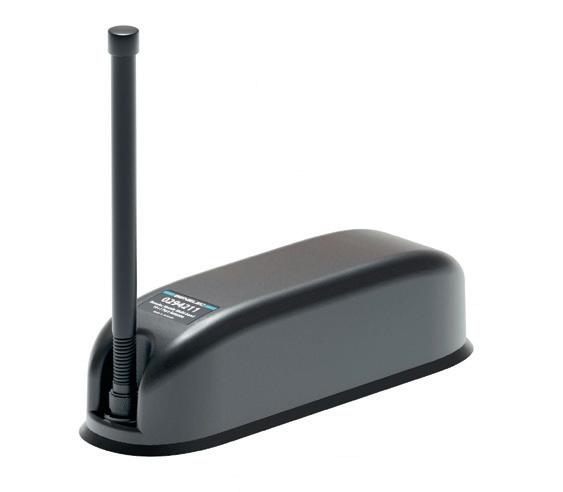
The antenna is equipped with 4 x 5G antennas covering 617–960 and 1710–7200 MHz, delivering ultrafast data speeds and uninterrupted connectivity. Users can enjoy consistent connectivity and stay connected on the move with 4 x Wi-Fi antennas operating across 2.4–2.5 and 4.7–7.2 GHz bands.
Navigation is made possible with 2 x GNSS antennas supporting GPS L1, Glonass, Beidou and Galileo, with full hemispherical coverage meaning the user should always find themselves on the right track. An optional LMR VHF/UHF or mesh antenna is offered via an additional port that allows users adaptability and customisation to suit various environments.
An integrated high-gain, low-noise amplifier is designed to enhance signal strength for good performance. The multiband antenna also has a vehicle-friendly design as it is constructed to fit all roof-mount applications, including ribbed tops.
Engineered for emergency services, law enforcement and first responders, the antenna’s innovative design and construction means it meets the rigorous demands of critical communications. Its easy installation makes it a suitable choice for any modern MIMO setup.
Benelec Pty Ltd www.benelec.au
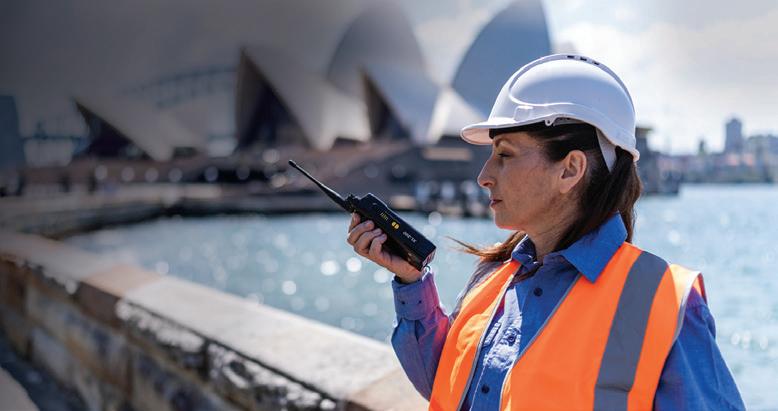
Understood to be the only portable built by frontliners for critical mission success, L3Harris’s XL Extreme 400P radio has been designed to keep users connected anywhere, anytime, on any network in any environment. Integrated into the radio are significant upgrades for a complete radio solution purposebuilt to connect when the heat is on.
The radio’s high performance is complemented by novel thermal hardware, a reinforced seal design, and thermal-rated displays and speakers. L3Harris’s proprietary visual zone indication, ambient temperature sensor and optional in-building location capabilities enable in-field safety every time a call comes in. Users can expect crystal-clear audio with advanced noise cancellation and echo reduction.
The multiband radio runs on systems that double down on redundancy, champion open networks and connect seamlessly with P25-compliant organisations. Data-streaming capabilities with built-in LTE, Wi-Fi, GPS and Bluetooth put situational awareness front and centre for actionable, real-time intel. A MIL-SPEC design for extreme conditions is found in a rugged, familiar form factor that is intuitive, comfortable and easy to use with no learning curve, all backed by L3Harris’s All-In 24/7 support. L3Harris www.L3harris.com
Anritsu, a global leader in test and measurement solutions, has unveiled its latest advancements in field testing equipment — the Site Master MS2085A Cable and Antenna Analyzer and the MS2089A with Integrated Spectrum Analyzer. These latest entries to the Anritsu line-up have been designed to offer enhanced functionality, precision and user-friendly operation, and to mark a leap forward in field testing technology.
The dual offering merges the functions of cable and antenna analysis with spectrum analysis and monitoring in a seamless, integrated solution. It is tailored to support a wide spectrum of industries, including telecommunications, broadcasting, aerospace, satellite and defence, facilitating applications from distributed antenna systems (DAS) and satellite monitoring to interference analysis and routine installation and maintenance tasks.
Highlighted features and advantages of the new-generation Site Master include: a real-time spectrum analysis (RTSA) function; 5G NR downlink measurements; LTE FDD/TDD measurements; 40 MHz analysis bandwidth; TDR measurements; IQ capture and streaming; a built-in PDF report generator; enhanced DTF measurements and dynamic range; fast operation and sweep speeds; and a modern and intuitive user interface.
Anritsu Pty Ltd www.anritsu.com

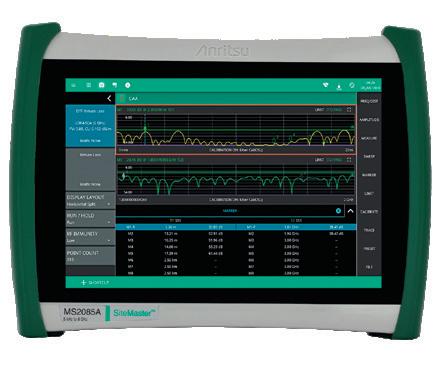

During the 2024 Olympic Games in Paris, ensuring robust and reliable communication for public safety forces was a top priority. One of the critical tools that proved integral to this effort was the MDR (Mic Dual Radio) by TPL Systèmes. This innovative device played a crucial role not only during the Olympic Torch Relay but also throughout the entire duration of the Games, maintaining secure and seamless communication across various public safety units.
For the 2024 Paris Olympic Games, the French Police and Gendarmerie equipped over 28,000 officers with the MDR to enhance their communication capabilities. This large-scale deployment underscored the importance of the MDR in ensuring that all units, regardless of their location or the communication network they were using, remained connected. The MDR provided dual connectivity, allowing simultaneous communication over both legacy professional mobile radio (PMR) systems and mobile networks through smartphones. This dual capability was particularly vital in maintaining the operational efficiency of over 28,000 officers, enabling them to communicate effectively under any circumstances.
The MDR’s dual connectivity proved to be something of a game changer during the 2024 Games. It allowed officers to switch seamlessly between PMR networks and 4G/5G mobile networks with MCPTT app, facilitating real-time communication without the need for multiple devices. This feature was especially important given the complexity and scale of the Olympic Games, which required coordinated efforts across various security forces operating in different environments.
The MDR’s robust design, featuring an IP67 rating and MIL-STD compliance, meant that it remained functional in harsh conditions, from heavy rain to dusty environments. With its long battery life, exceeding
20 hours on a single charge, the MDR supported continuous operation throughout the extended shifts typical during such large-scale events.
In order to make it even more efficient, TPL Systèmes will launch a so-called gateway function on the MDR in October 2024. This new function will allow the MDR to relay communications between the smartphone and the PMR radio, providing an additional layer of versatility. In scenarios where certain areas show poor mobile network coverage, the users can talk with the PMR direct mode and all these communications can be relayed to the control room, thanks to the gateway mode active on the MDR. The MDR speaker-mic provides uninterrupted communication by bridging both systems. This feature will be particularly beneficial to interconnect the DMO calls to the management level.
Moreover, the MDR’s customisable push-to-talk (PTT) buttons and OLED display offered officers intuitive control over their communications. They could effortlessly switch channels, adjust settings and stay connected with the appropriate teams, all while maintaining situational awareness.
The MDR (Mic Dual Radio) proved to be an indispensable tool for the French public safety forces during the 2024 Paris Olympic Games. By enabling seamless communication across different networks, supporting robust performance under various conditions, the MDR significantly enhanced the operational capabilities of the police and gendarmerie. Throughout the Games, the MDR played a pivotal role in providing safety and security to all involved, demonstrating its value as a critical communication solution for large-scale, highpressure environments.
TPL Systems Asia-Pacific Pty Ltd www.tplsystems.com.au
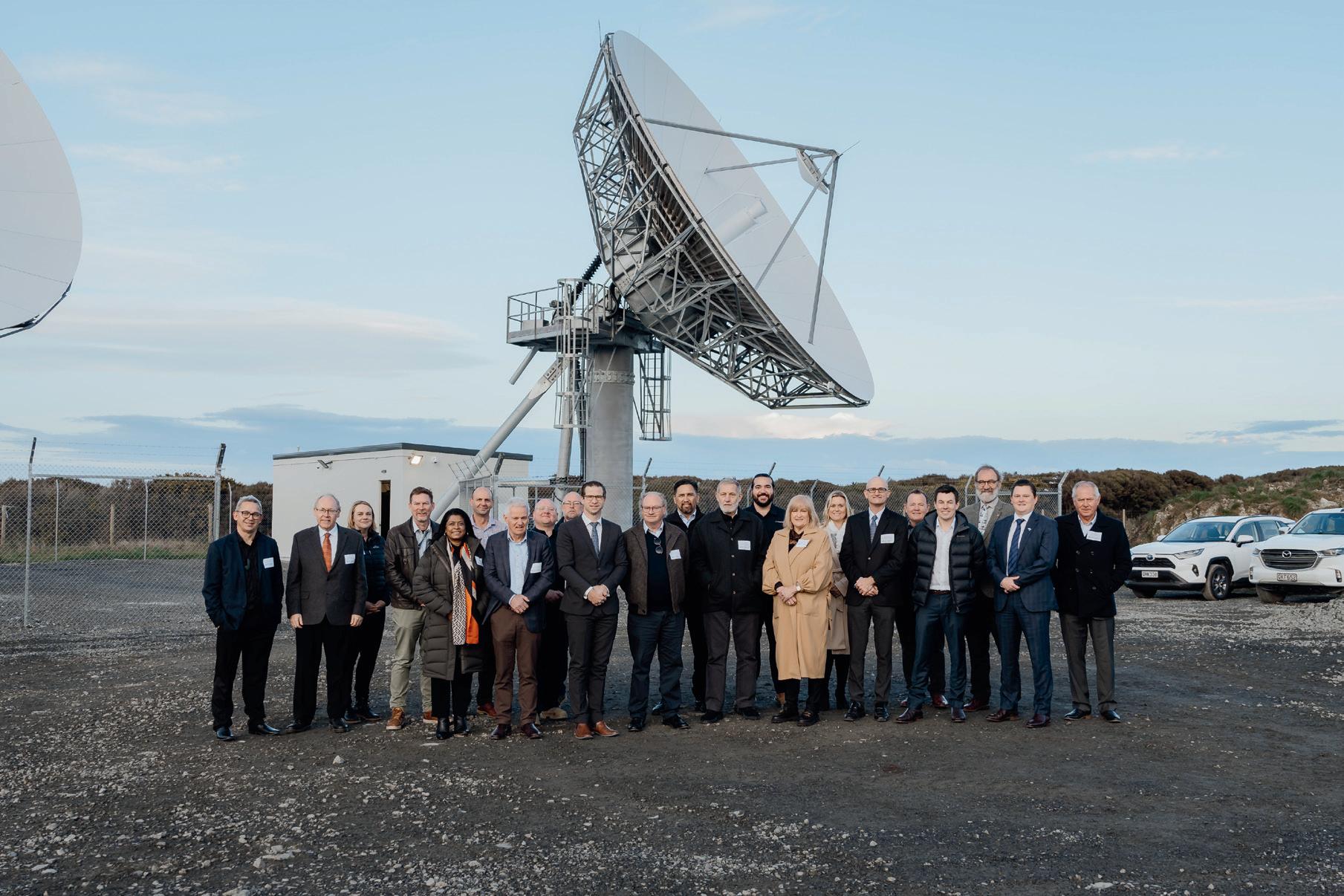
Lockheed Martin Australia, in collaboration with Av-Comm, has established a satellite ground control and uplink processing centre for the Southern Positioning Augmentation Network (SouthPAN) in Awarua, near Invercargill, New Zealand.
The opening of the new centre marks a significant achievement for the SouthPAN project, which is a collaborative initiative between Geoscience Australia and Toitū Te Whenua Land Information New Zealand to deliver satellite-based augmentation system (SBAS) services to Australia, New Zealand and the surrounding maritime area. Lockheed Martin Australia was awarded the $1.18 billion, 19-year contract to deliver SouthPAN in 2022.
SouthPAN uses Lockheed Martin’s second-generation SBAS to improve the accuracy and reliability of global navigation satellite system positioning across Australia and New Zealand, benefiting agriculture, aviation, construction, consumer, resource, road, rail, maritime, mining, utilities and more. Some SouthPAN services are already free and available to consumers, functioning with 99.5% reliability; the remainder of the network will be established over the next three years.
The new facility boasts two 11-metre satellite dishes and a control centre with dual radio frequency uplinks. Strategically
located in Awarua to leverage Southland’s favourable geographic position for optimal satellite communication and coverage, it is the second of two SouthPAN satellite ground control facilities built for the New Zealand and Australian Governments.
“The Southland facility works in tandem with a newly built centre in Uralla, in NSW,” said New Zealand’s Minister for Land Information, Chris Penk, who opened the new centre.
“Partnering with Australia improves our resilience and means if one station is offline, there is a backup station which is crucial for safety of life applications, such as aviation.”
According to Penk, improved GPS accuracy has implications for almost every major sector — from agriculture to aviation, forestry and construction.
“New Zealanders use GPS services every single day, for everything from ordering food to navigating the city streets. GPS information is also used for critical technical applications like coordinating an emergency response and air traffic control,” he said.
“As the project develops, one of the most noticeable changes for the public will be less disruption to flights during bad weather, with a significant reduction in weather-related flight cancellations and delays. SouthPAN services will aid flight navigation, making it safer for planes to land when visibility is poor.”
Penk also cited an independent report estimating that SouthPAN will contribute $864 million to New Zealand’s economy over 20 years “through productivity-enhancing and labour-saving applications such as better resource management, more accurate maritime activities and real-time livestock monitoring through digital fencing tools”. It is expected this figure could grow as new technologies and innovations are developed to harness SouthPAN’s possibilities, he said.
“This is a key achievement in our ongoing commitment to delivering enhanced satellitebased navigation systems that will have substantial economic and social benefits for the region,” said David Ball, Regional Director of Space for Lockheed Martin Australia. “The new ground control and uplink processing centre in Awarua will play a pivotal role in increasing both the resilience and accuracy of satellite system positioning services across Australia and New Zealand as well as surrounding maritime areas.”
Martine Woolf, Branch Head of Geoscience Australia’s Space Division, will be speaking about SouthPAN at Comms Connect Melbourne on 17 October in her presentation ‘Improving the reliability of satellite-based positioning systems in Australasia with SouthPAN’.
Lockheed Martin Australia Pty Ltd www.lockheedmartin.com
Spectrum Analysers, Electronic Countersurveillance Systems, Software-Defined Radio and general Test & Measurement.


Spectrum Analysers
Models for 1Hz – 43GHz
USB and SFP+ models
TeraHertz sampling speeds!
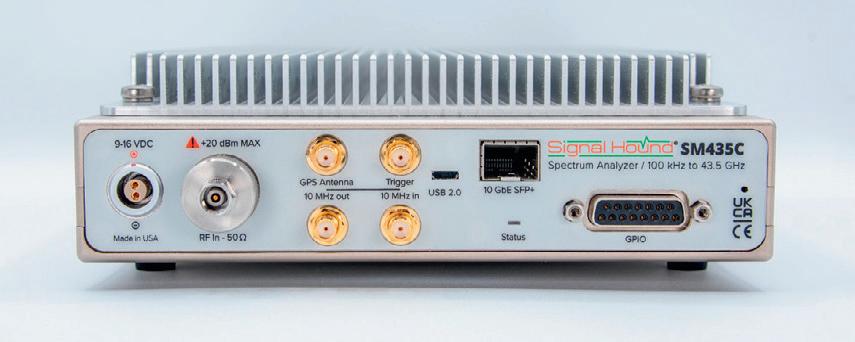
• Full function spectrum analyser on your PC or laptop
• Windows and Linux software supplied
• Full API support for custom applications
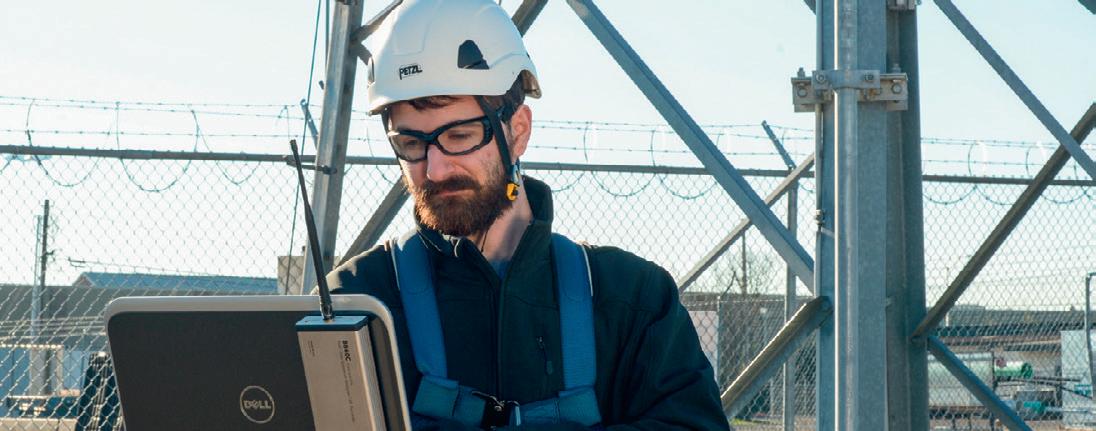
Tracking generators to 12.4GHz
Vector Signal Generators for arbitrary waveform generation to 6GHz
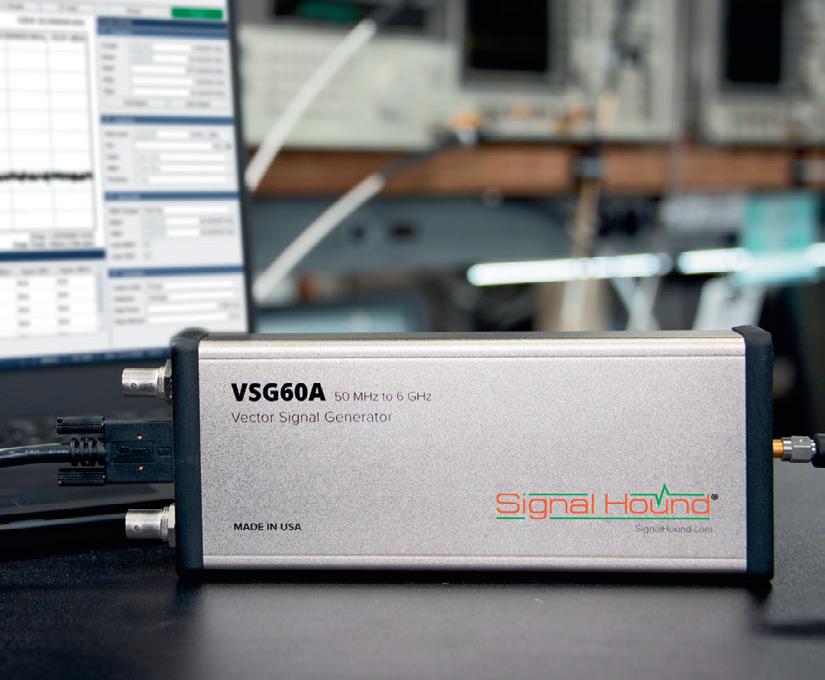
• 5G/LTE testing
• Spectrum monitoring
• Interference testing
• Workshop, lab and hobbyist applications
• Government and defence users
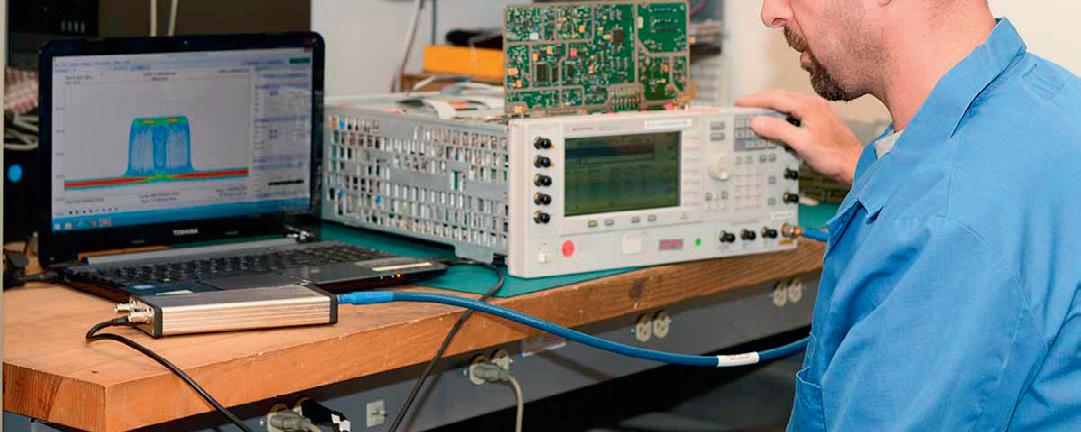
1/21 Nagle Street Wagga Wagga NSW 2650
(02) 6931 8252
TPL Systems Asia Pacific is introducing a standalone Fire Station Alerting platform which allows seamless transition from analog alerting to P25, IP, 3/4G LTE (data and SMS capable) and POCSAG digital text messaging.
With eight heavy-duty relay outputs, the FSA P25, upon receipt of programmed activations, can be used to turn off appliances, open garage doors, and turn on lights and/or sirens. Additionally, it can monitor multiple systems (eg, P25 + analog) and only activate its relays upon detection of programmed codes. Its flexible hardware and software architecture allows for ease of in-field reconfiguration and upgrades as applications change.
The FSA P25 supports phase I and II P25 trunking environments; P25 conventional control; two-tone and DTMF, analog control; POCSAG digital; 3G/4G LTE (FirstNet capable); and SMS activation. It is field programmable and software upgradeable, with four inputs; 600 Ω audio output; a stainless steel enclosure; and desktop, rack-mount or wall-mount configuration.
For any radio technology used as primary receiver, the MPSC can be equipped as well with two- or five-tone and DTMF, analog control; POCSAG digital; 3G/4G LTE data; SMS; and IP connectivity. It is powered by DC voltage at 9–48 V.
TPL Systems Asia-Pacific Pty Ltd www.tplsystems.com.au



Getac’s flagship F110 tablet is a fully rugged device that is used across multiple sectors and industries. The nextgeneration version of the device offers upgraded processing power, brightness and connectivity, alongside high energy efficiency, for full-shift performance in a variety of challenging indoor/outdoor working environments.

Key features of the next-gen tablet include an upgraded Intel Core 13th Gen i5/i7 processor, with Intel UHD Graphics offering high levels of processing speed and graphical performance. The ultra-bright 1200 nit LumiBond screen, with multitouch modes (touch, glove, pen), optimises productivity in weather conditions ranging from full sun to rain and snow.
MIL-STD-810H and IP66 certification, a 1.8 m operating drop rating and optional salt fog resistance make the tablet suited to operations in challenging work environments where the risk of accidental knocks, drops and spillages is high. Optional accessories include a detachable keyboard, hard carry handle and secure vehicle docks.
Fast remote communication is a critical part of field operations in industries such as defence and oil and gas production/exploration, which is why the tablet offers a wide array of connectivity options. These include Intel Wi-Fi 6E AX211, 802.11ax and Bluetooth 5.3, enabling personnel to quickly communicate with colleagues and share data as needed. Connectivity can be enhanced even further with optional 4G LTE and 5G Sub-6 modules (dual sim design including a physical sim and an e-sim), while a 5 MP webcam provides clear and detailed pictures during video calls and remote guidance activities.
Field professionals in industries like utilities and manufacturing need digital devices they can rely on for the full duration of shifts, even when access to power points or recharge facilities is limited. The tablet features DDR5 memory (up to 32 GB), which offers higher base speeds and lower power consumption than previous generations, making it suitable for full-shift operation. Its user-friendly hot-swappable batteries can also be easily replaced in the field if needed. If even more operation time is required between charges, the product is compatible with Getac’s optional high-capacity Li-ion batteries. Getac Technology Corp www.getac.com
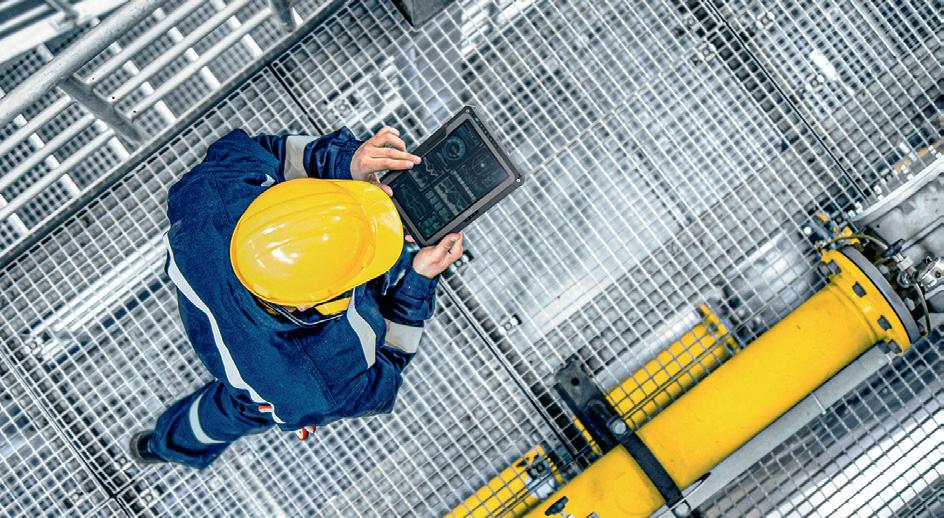
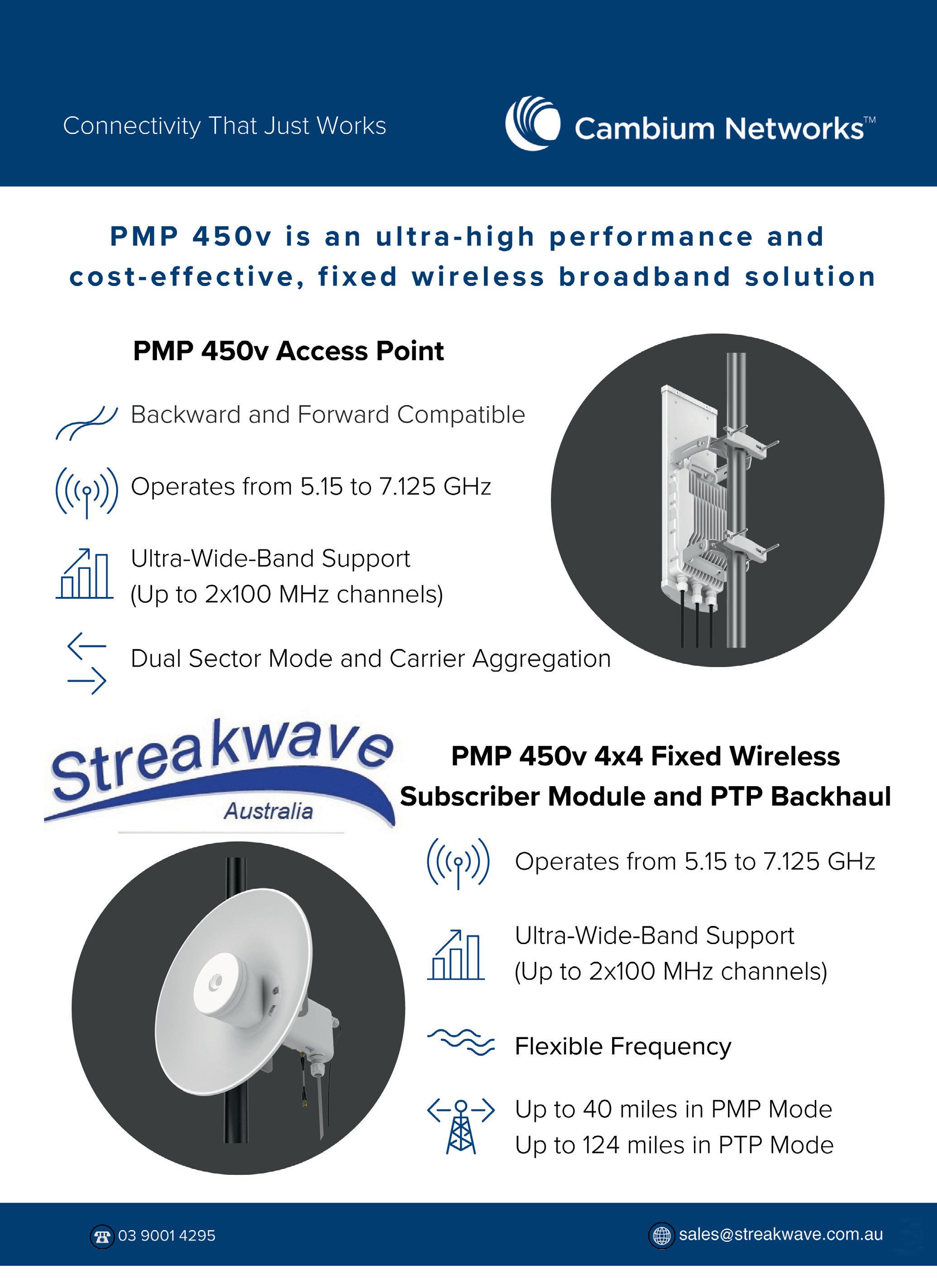

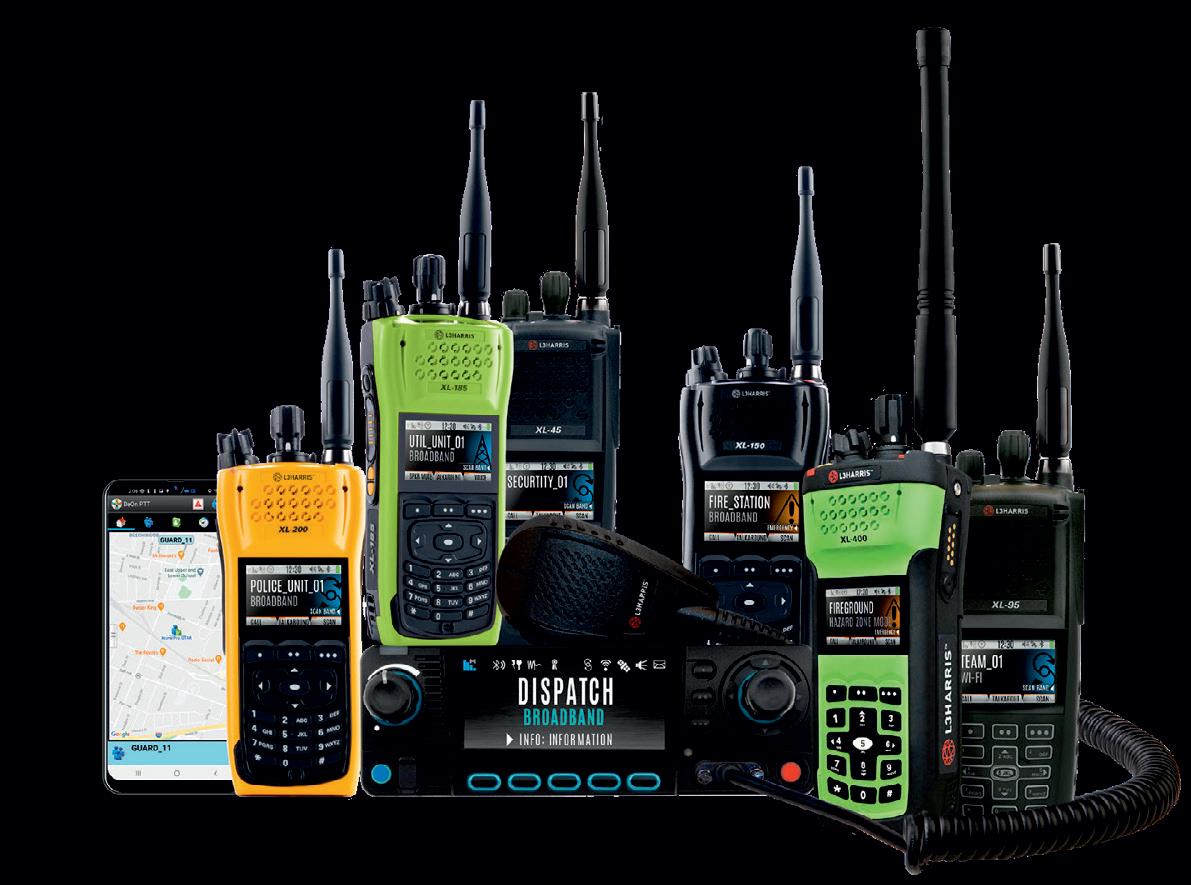


The Western Australia Police Force is helping its frontline police officers provide better support for victims of family violence through a smart mobile application dubbed PSCore, from Motorola Solutions.
Billed as the world’s first public safety application to work with Apple CarPlay, PSCore was first deployed by WA Police in March 2022 and is now in use across its entire fleet of 6500 mobile devices. The application has also been expanded to enable officers to record a wider variety of incidents from the field and automatically alerts partner agencies and support services when family violence reports are submitted. It achieves this by integrating critical operational information from multiple systems, presenting it through a single, intuitive interface.
“By providing access to critical backend databases, including computer-aided dispatch and records systems, our smart mobile applications help frontline personnel to complete key operational tasks from wherever they are, allowing them to work with greater focus, accuracy and speed,” said Con Balaskas, Managing Director for Australia and New Zealand, Motorola Solutions.
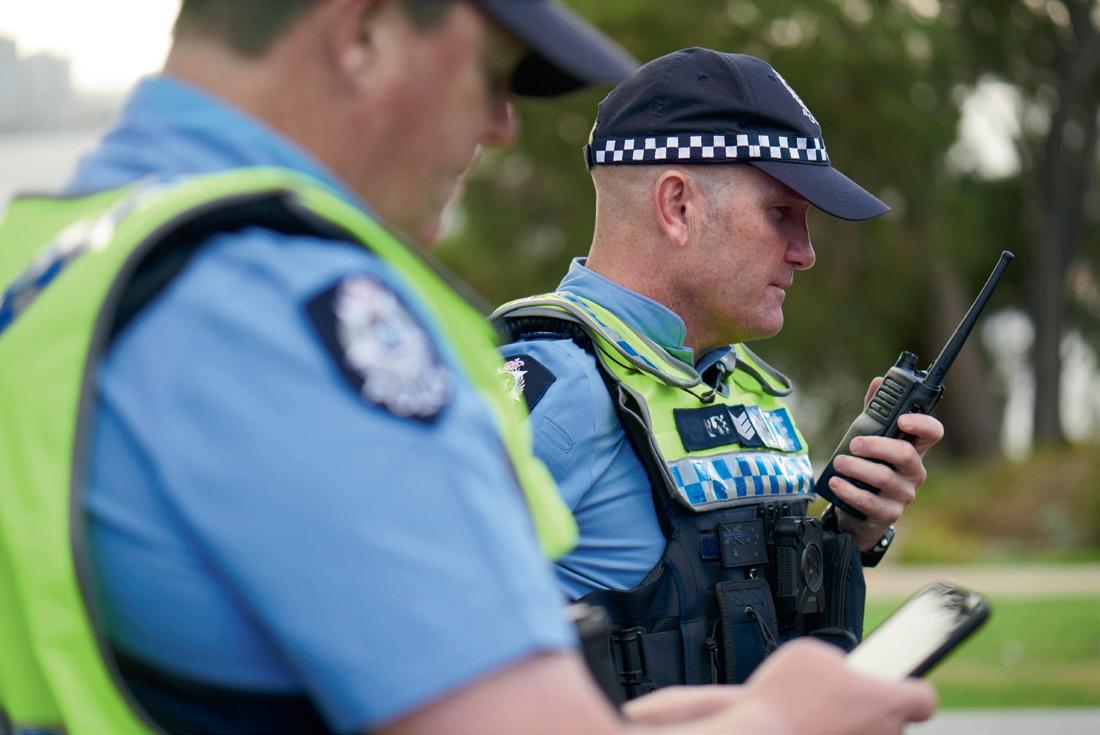
PSCore represents a key part of WA Police Force’s digital policing strategy to leverage technology to improve productivity, incident awareness and safety for officers and the public alike. Indeed, by supporting police officers with a risk assessment framework and a summary of the family violence history of offences, the application has enabled noteworthy improvements in compliance levels and workflows for all family violence reports.
“When police officers respond to an incident, they need accurate and relevant information to inform their decisions while keeping themselves and community members safe,” said Superintendent Dean Snashall, WA Police Force. “The addition of a new family violence reporting capability is another way this mobile application helps our officers to respond to different kinds of incidents.”
Motorola Solutions www.motorolasolutions.com.au
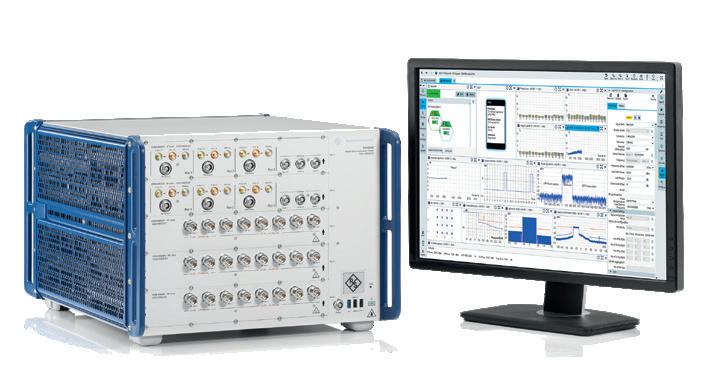
The R&S CMX500 radio communication tester has been used to successfully validate mission-critical push-to-talk protocol conformance test cases for the Global Certification Forum. With this achievement, Rohde & Schwarz is paving the way for a smooth transition from narrowband TETRA to broadband 3GPP Mission Critical Services (MCS) for device manufacturers and service providers.
3GPP MCS refers to a suite of communications services that are essential for public safety and emergency response operations. It is designed to ensure seamless communications for first responders, enabling efficient coordination and rapid response in critical situations. Often referred to as MCX, these missioncritical services, which include not only MCPTT but also mission-critical data (MCData) and mission-critical video (MCVideo), are designed to meet stringent requirements for reliability, availability and security.
The protocol conformance test cases were developed using the R&S CMX500 radio communication tester and allow engineers to evaluate their MCS applications and devices under realistic conditions. The device under test establishes a real-time, comprehensive connection to the simulated MCS network and tests the relevant signalling and RF scenarios in line with 3GPP specifications. Rohde & Schwarz (Australia) Pty Ltd www.rohde-schwarz.com.au
ZCG’s range of Australian-made cavity filters has undergone a comprehensive redesign, resulting in improved insertion loss, enhanced power handling and the addition of fine-tuning capabilities. The filters are available in both singular and series configurations and are tailored to meet the demands of the following frequency allocations: FM radio; VHF High Band; VHF Airband; UHF 400–520 MHz; and GHz range. Manufactured at ZCG’s East Gippsland facility with the use of highly conductive materials and temperatureresistant INVAR internals, the cavity filters are offered in bandpass, notch and pass-reject (high or low pass) configurations. Trusted by a diverse range of industries, including emergency services and air traffic control communications, the high-demand cavity filters are ready for immediate installation. Mounting hardware suitable for 19 ″ racks, wall mounting or secure floor installation is available to suit all installation requirements.
ZCG www.zcg.com.au
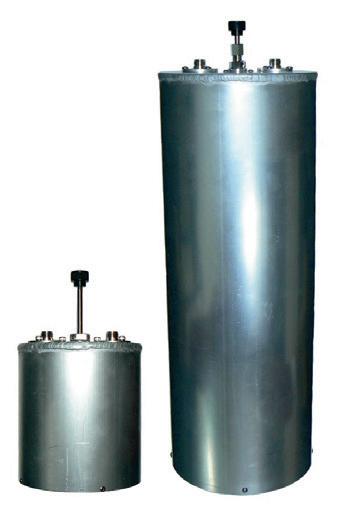
Jodi Favaloro, Senior Sales Engineer Asia Pacific, Enterprise Wireless Solutions, Ericsson

In emergency response, every second counts and reliable communication is critical. What happens when an in-vehicle network connection drops? No access to real-time dispatch updates, no critical data transfers, and potentially hampered communication with fellow responders. This scenario underscores the vital role of dependable connectivity in vehicles, especially when public safety is at stake.
By establishing network redundancy using a dual-modem router in vehicles, situations like this can be easily prevented. These routers provide automatic failover between two carriers, ensuring a seamless connection on the go. Think of it like a busy highway with two lanes — if one gets blocked, you can easily switch to the other. It’s an excellent option for staying connected even in spotty coverage areas. Mobile SD-WAN acts like a smart traffic director to increase reliability and optimise the network by utilising multiple connections simultaneously. This translates to more than just a backup — it means smoother operations and a truly resilient connection for an emergency services fleet.
How do dual-modem routers work?
A dual-modem router has two active radio connections, allowing SIM cards from different carriers to be active simultaneously. If one signal is degraded, the dual-modem router automatically switches from one carrier to another without downtime.
But what happens when there is no cellular coverage due to a natural disaster like a bushfire or severe flood taking out all local telecommunications towers? Dual-modem routers can accommodate multiple connectivity options, including cellular and satellite. This is of particular benefit to emergency services in Australia, in which there has been significant growth in the use of satellite technology over the last few years, due to limited available cellular coverage in regional parts of the
country. Since 2020, hundreds of Disaster Satellite Service communications dishes have been installed around Australia on buildings such as Rural Fire Service depots as part of government programs. Also, various police and ambulance services have started rolling out satellite technology in their regional field vehicles.
How does SD-WAN work?
Imagine SD-WAN as a smart navigation system for your vehicles. It manages and directs traffic across a wide area network (WAN) using features such as intelligent traffic handling and link bonding. SD-WAN improves network performance and reliability by automatically selecting the best path for data and making it easier to manage and optimise your network.
Using SD-WAN on top of a dual-modem router guarantees the most reliable connection needed for mission-critical applications in vehicles, whether that be data from bodyworn cameras or applications that allow police officers to search licence plates, for example.
Mobile SD-WAN is useful in practically any vehicle situation to help optimise connectivity and network performance.
Mission-critical communications
For different forms of mission-critical communication, SD-WAN enables features such as flow duplication for better reliability. Flow duplication effectively bonds two WAN connections to create an unbreakable WAN connection by duplicating and sending application data across both links.
Primarily used in vehicles, roaming between different cellular providers or between cellular and satellite networks, it automatically selects the two strongest links if more than two are available through a dual WAN router. This way, if one network is disrupted, there is congestion, or even a failure, applications
will continue to function. This method uses double the data, so it should be reserved for the most essential traffic to save costs.
High-bandwidth applications
Often, a single connection isn’t sufficient for high-bandwidth applications like high-quality CCTV video streaming. SD-WAN can address this by aggregating bandwidth from both modem connections to create a fatter pipe, also known as link aggregation or link bonding. This technology merges multiple WAN interfaces into a single virtual connection, enhancing bandwidth, efficiency, and application resilience.
The benefits of using mobile SD-WAN in vehicles
While dual modems alone provide reliable cellular failover capabilities, mobile SD-WAN takes it a step further, giving organisations much more granularity, flexibility and control over network traffic.
With SD-WAN, organisations can monitor all applications on their network and establish policies for prioritising them. It also allows enterprises to implement more features, such as forward error correction (FEC), to improve resiliency, performance, and application quality of experience (QoE) across the WAN.
Forward error correction (FEC)
When an application encounters weak signal quality, it tends to resend requests multiple times to maintain connectivity, consuming significant bandwidth. Using FEC can enhance application performance by reducing these repetitive retries, leading to a better QoE over unreliable connections and optimising bandwidth usage.
SD-WAN gives network administrators the ability to manage multiple WAN connection types with ease, using diverse connections to maximise application reliability and performance. Mobile SD-WAN takes that same capability on the road or in the field, giving emergency services organisations more efficient and stable connectivity options than ever before.
Keysight Technologies introduces RFPro Circuit, a nextgeneration radio frequency (RF) simulation tool targeting the complex, multi-physics requirements of today’s RF integrated circuit (RFIC) designers. Wireless, automotive and satellite designers can now deliver robust designs that overcome performance challenges in dense 3D packaging, taking advantage of interoperability and automation to form complex workflows.
RFPro Circuit features a modular architecture that provides a consistent, streamlined environment for multi-physics co-design across Cadence, Synopsys and Keysight electronic design automation (EDA) platforms. Optional electromagnetic (EM) and electro-thermal simulators also plug into this environment, enabling fast design and troubleshooting of wireless RFICs.
Typically, RFIC designers perform sequential, singledomain verifications using expert tools, but have a difficult time identifying and troubleshooting multi-domain design issues until the end of the design process. Designers are often required to become domain experts, shouldering the overhead of set-up and database manipulations for each tool. With the simulator, these tools are tightly integrated into automated and efficient workflows.
In addition to EM and electro-thermal simulators, Keysight provides RF-aware analyses for stability, system-level modulation and waveforms, and simulator settings. For example, designers can optimise a sophisticated 5G-Advanced power amplifier for error vector magnitude (EVM) while loaded with EM package parasitics. As 3D designs become denser and move into new millimetre-wave frequencies, Keysight offers a path to efficient design flows that are robust enough to be used for training tomorrow’s artificial intelligence and machine learning automation in leading-edge microwave applications.
The tool thus enables designers to accelerate their engineering cycles and shift left more of their verification effort from physical into virtual prototyping, where it’s easier and less costly to fix problems. Keysight also offers a flexible licensing model that gives RFIC designers greater simulation freedom and instant access to the latest features, in order to adapt to changing workflows on a daily basis.
Keysight Technologies Australia Pty Ltd www.keysight.com
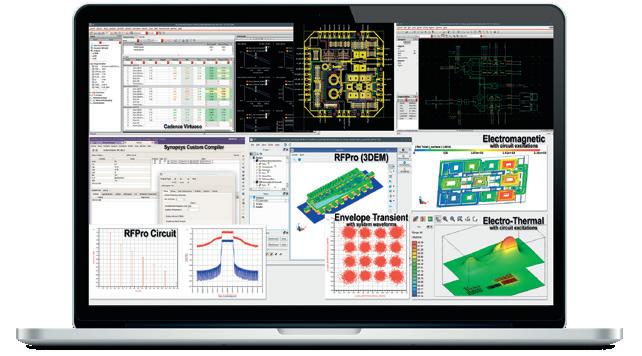
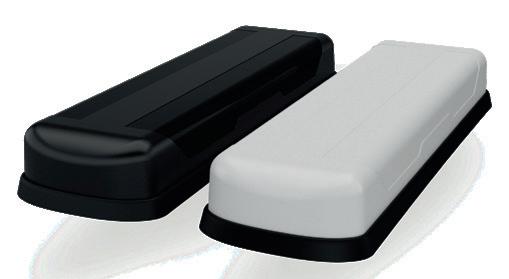
Panorama Antennas’ Megalodon range provides two 4x4 MiMo 4G/5G antenna systems covering 617–960/1427–6000 MHz within a robust, low-profile package. It is specifically designed for dual-modem applications, allowing up to 18 functions to be supported via a single antenna installation. Covering global cellular bands for futureproof performance, the antenna provides effective functionality for two 4G Cat 18/20 and/or 5G modems. This can be combined with a number of other functions, including single/dual-band GPS/GNSS and up to 8x8 MiMo Wi-Fi elements covering 2.4–7.2 GHz (Wi-Fi 6e/7).
The antenna is designed to be panel mounted and can be fitted on a conductive or non-conductive panel. Supplied with integrated, flame-retardant low-loss CS30 cables (compliant to UN ECE R118) and a halogen-free, flame-retardant radome, the antenna is suitable for many environments and applications, including public safety and transportation.
The LGM variants have an integrated GPS/GNSS module supporting either L1 only or L1/L5 frequencies. This GPS module features advanced filtering for LTE B13/14 designed to minimise potential in band interference. The antenna is available with a black or white radome which meets IK10 for vandal resistance and IP69K for ingress protection.
Panorama Antennas Pty Ltd www.panorama-antennas.com
The future of mobile mission-critical communication will be broadband. Highly efficient and secure communication between control centres and emergency responders will depend on the availability of public or dedicated 4G/5G mobile networks and multimedia, mission-critical incident-support applications.

Two products that support both next-generation 000 and next-generation 111 (NG000 and NG111) are Frequentis LifeX and MissionX.
LifeX is a future-oriented public safety communication and collaboration platform designed to satisfy all the demands of a next-generation control room and its multimedia handling. The software seamlessly integrates with the user’s existing IT infrastructure (on-premise, SaaS, cloud).
Multimedia mission-critical data services are essential to support crucial features such as situational awareness, position tracking, distribution of images and live video streams. MissionX is an integrated, end-to-end solution based on Mission Critical Services (MCS/MCX), which enables mission-critical multimedia communication over public, dedicated and hybrid standardised 4G/5G mobile networks provided by various network operators. The Frequentis ‘OnSite’ mobile client provides MissionX services for first responders. Frequentis Australasia www.frequentis.com
Vertel, a leading Australian communications company, has successfully executed a major upgrade to the communications network for ACT water utility Icon Water. At the core of the new network is the Airbus Agnet MCx, a 3GPP standards-based system, marking the first known deployment of this platform in Australia.
Icon Water is the ACT’s supplier of essential water and sewerage services, comprising the territory’s network of dams, water treatment plants, sewage treatment plants, reservoirs, water and sewage pumping stations, mains and other related infrastructure. Prior to the recent upgrade, the primary means of communications for the 24/7 field operations staff was an old analog MPT system that provided unsecured voiceonly communications that was well past end of life and about to be decommissioned by the existing operator. 4G was an alternative, but it did not provide coverage in all of the areas that Icon Water operates in.
In mid-2022, Icon Water sought submissions from interested parties to deliver a replacement communications network that included the following:
• A mission-critical push-to-talk (MCPTT) system
• Push-to-talk handsets and accessories
• A 4G/satellite vehicle connectivity solution
• Vehicle installations
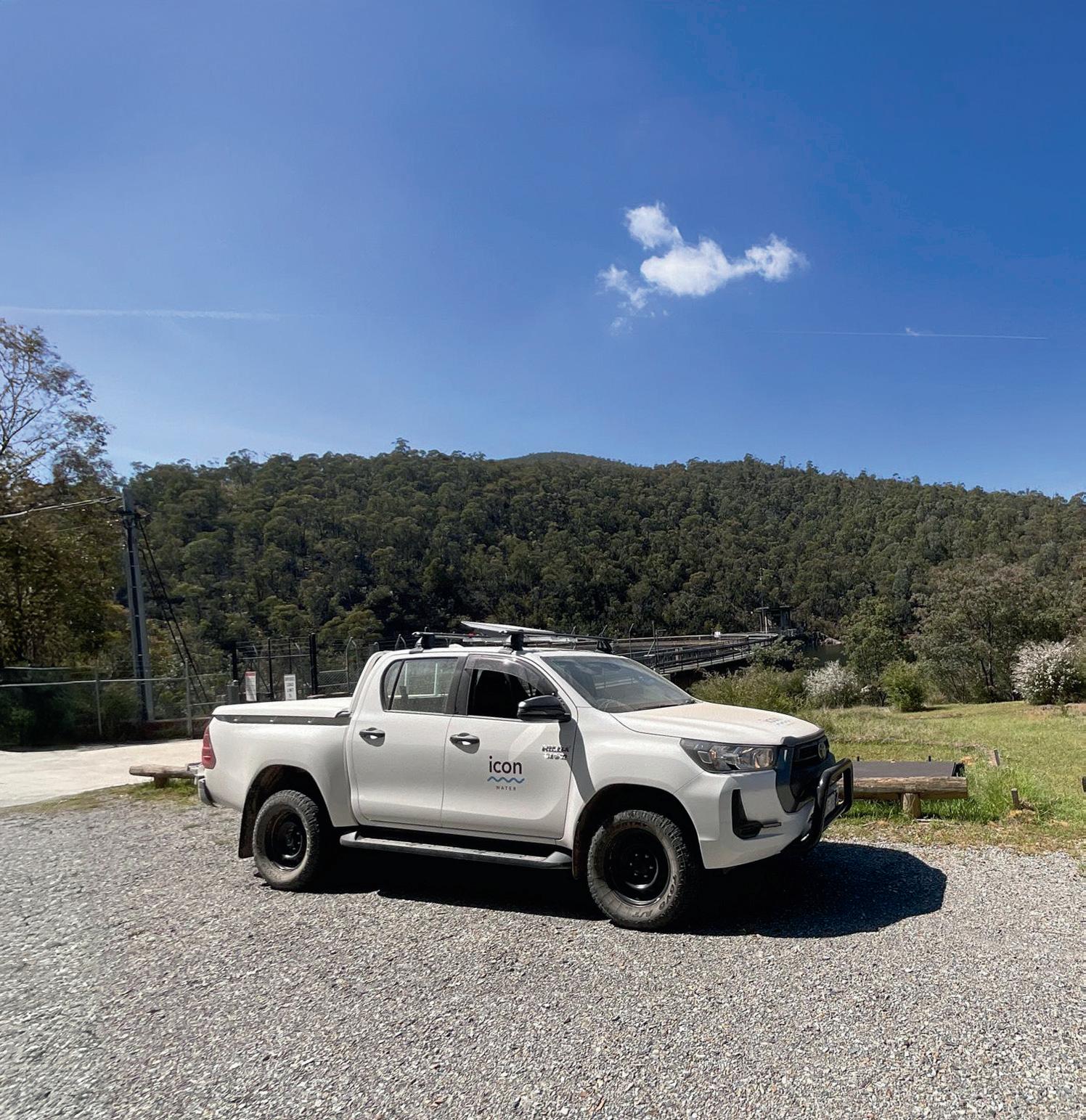
• 4G coverage extensions in a number of their buildings
• Enterprise mobility management and application compatibility
• Support, training and documentation
Following a successful proof-of-concept deployment in early 2023, Vertel was chosen to design, deliver and manage the network upgrade, featuring the Airbus Agnet MCx at the core. Hosted in a highly secure, multi-zoned, fully redundant data centre environment, this secure, flexible and futureproof SaaS-based platform provides 99.99% availability for meeting all critical communication needs by leveraging the benefits of cloud technology, mobile broadband and satellite communication.
The Airbus Agnet MCx is designed to transmit and receive secure data, video and voice to all relevant stakeholders at once in a secure and reliable way. It allows smartphone, tablet and laptop users to communicate individually or in a group. Compatible with both Android and iOS, the mobile application features a web-based dispatcher, end-to-end encryption, emergency calling, remote and lone worker safety functionalities, along with advanced location tracking and other capabilities.
Icon Water’s fleet of around 100 vehicles were fitted with Vertel’s Enhanced Mobility Solution, enabling ubiquitous network connection anywhere within and beyond Icon Water’s operating geography. High gain antennas fitted to each of the vehicles also enables connection to corporate apps using laptops, tables or smartphones within an extensive Wi-Fi zone that is created outside of the vehicle.
To provide 4G connectivity in critical Icon Water buildings, Vertel engineers initially validated the existing coverage then designed and implemented Vertel’s Connectivity Enhancement solution at the required locations. The solution was designed to meet the bandwidth, latency and simultaneous user needs.
“Vertel’s extensive experience and their breadth of knowledge in being able to address Icon Water’s requirements enabled the development of our next-generation network, ensuring we are not only responsive to the needs of the Canberra region, but also enabling us to remain compliant with our OH&S policies, procedures and compliance guidelines,” said Icon Water CTO Dr Tony Pollock.
Vertel CEO Theo Belekas added, “Our partnership with Airbus was key to delivering the comprehensive list of mandatory requirements outlined in the Icon Water RFQ. Our work in wireless and fixed network communications over the past 50 years has positioned us a partner of choice for a wide number of government, enterprise and service provider organisations.”
Airbus APAC Vice President Alain Ruinet concluded, “We are proud to have successfully contributed with Vertel to Icon Water’s network upgrade to our broadband platform Agnet MCx. Our expertise in critical communications solutions globally with mission-critical push-to-talk over broadband (MCx) ensures Icon Water can deliver group communications, workplace safety and multimedia capabilities such as video streaming, file sharing and messaging anywhere they operate with LTE and satellite backhauls.” Vertel www.vertel.com.au

Introduction
In the mining industry, having reliable communication is essential for both safety and operational success. Mine operations are often spread out across harsh terrains and located in remote areas, making communication a serious challenge both above and below ground. Understanding the importance of e ective communication in challenging environments, industry leaders have turned to advanced technologies like TETRA to overcome these challenges. VHF (Very High Frequency) TETRA has emerged as a game-changer, o ering extended coverage and unparalleled reliability in the most demanding mining environments worldwide. is article explores the role of VHF in mining operations and how the introduction of VHF is rede ning communication standards in the industry.
Mining Risks: Understanding User Issues in Mining
Mining environments present numerous challenges for communication systems. ese challenges hinder operational e ciency and jeopardise safety. Many mining sites are in isolated areas, far from traditional communication infrastructure.
e sheer scale of mining operations as well as the rugged and unforgiving terrain, including underground tunnels, deep pits, and rocky landscapes, can disrupt signal transmission. Mines are inherently dangerous places, with risks such as cave-ins, explosions, dust, and harmful toxins. End-users can encounter issues such as signal degradation, limited coverage, and di culty in maintaining connectivity, particularly in remote or underground settings.
Electromagnetic interference (EMI) poses a common challenge in mining. Heavy machinery and equipment emit EMI, disrupting wireless communication signals. is interference is particularly pronounced in underground mines due to the higher density of equipment.
Another issue is multipath propagation, where radio waves bounce o surfaces like walls and machinery, creating multiple signal paths. In underground mines with re ective surfaces, this phenomenon causes signal distortion and fading, impeding reliable communication.
Compliance with safety regulations is critical. Regulatory bodies like the Mine Safety and Health Administration (MSHA) set standards to ensure safe operations. ese regulations may
limit transmitter power levels, dictate antenna installations, and regulate frequency usage to minimise interference and uphold worker safety.
Radio Communication Systems: Choosing The Best Frequency for Mining Communication systems in the mining industry have signi cantly advanced and choosing the right frequency for the unique demands of the mining operation is crucial.
Very High Frequency (VHF) (136–174 MHz) systems o er distinct advantages tailored to the challenges of mining operations.
• Above ground, VHF signals travel longer distances in open areas, o ering a cost-e ective and powerful communication solution with clear audio even in noisy or harsh conditions.
• Below ground, the ability to propagate signals e ectively in tunnels via leaky feeder makes it well-suited for intricate underground networks where safety is of utmost importance.
How VHF TETRA Can Help Address Communication Issues in Mining
VHF TETRA presents an ideal solution for large scale mining environments by consolidating

multiple networks into one single system that operates seamlessly above and below ground.
e mining environment poses numerous risks, from heavy machinery to dirt, dust, and explosive materials. Engineered to withstand such rigours, a VHF TETRA system is highly robust and resistant to interference.
One of the most signi cant bene ts is improved safety. VHF TETRA provides reliable and instant communication channels. Whether alerting personnel to evacuate hazardous areas or coordinating rescue e orts, VHF TETRA is reliable and ensures that crucial messages are conveyed without delay.
Despite their advanced capabilities, a VHF communication system is a cost-e ective solution. It streamlines communication work ows, maximising coordination between teams, departments, and contractors, and optimising productivity and resource utilisation in mining operations.
With minimal infrastructure requirements and maintenance, VHF technology is a sustainable and economical choice for long-term deployment.
Sepura’s VHF TETRA solution for mining organisations
“Radio waves in lower frequencies have longer wavelengths, meaning they travel further distances. Because of this, operators can reduce the physical infrastructure required to support the solution, enabling signi cant savings in equipment and maintenance costs.”
— Phil Retsas, Sepura Product Manager
As a supplier of critical communication radio equipment for over 20 years, Sepura understands the technology and the unique needs of the mining industry. Sepura’s products are designed to enable communication whether deep underground or at the edge of the mine site.
The longer range of signal propagation at VHF frequencies combined with the reliability, security, and mission-critical protocols of TETRA plus the powerful audio processing of the SC Series radios proves an ideal solution for complete and reliable coverage in dangerous environments where safety is critical.
With the SC Series, organisations can establish a robust VHF TETRA solution, bene ting from several key advantages.
Firstly, a VHF solution o ers enhanced coverage, particularly in expansive outdoor areas and underground tunnels using leaky feeder, and complex terrains. is superior coverage overcomes the limitations often faced by communication systems that use UHF or higher frequencies. It also streamlines infrastructure requirements as fewer communication sites are needed, resulting in reduced setup and maintenance costs. Deployment across sites is much quicker and more e cient.
Integrated GNSS location services further enhance the solution’s capabilities. ese services allow for tracking, triggers, and emergency response, enhancing situational awareness and overall safety. e rugged design of the SC Series ensures reliability in challenging environments. Built to endure mining conditions, with magnetic shielding to reduce metal dust build-up, the radios also feature water- and dust-resistant technology. e radio’s inherent haptics are speci cally designed to facilitate easy operation even with gloved hands, ensuring reliable performance in all conditions. The system is versatile with access to various communication modes like SMS, SDS, direct (DMO), trunked (TMO), and gateway and DMO REPEATER operation. Advanced security measures, including encryption and authentication features, ensure the confidentiality and integrity of communications, addressing concerns around data security.
Emergency response capability is prioritised with features like Man-Down and Lone Worker, which detect emergencies and ensure prompt response, enhancing worker safety. Mobile gateway coverage extends connectivity to dead spots, ensuring connectivity even in remote areas where traditional coverage may be lacking.
Talk groups allow for simultaneous communication within individual teams.
Concurrent voice and data communications allow for real-time information sharing between field staff and control rooms, improving operational efficiency and coordination.
AppSPACE links teams, devices, and systems by transmitting operational data across TETRA, Wi-Fi and Bluetooth. is connectivity allows for streamlined work ows and ensures that crucial situational awareness information reaches the appropriate individuals quickly. AppSPACE allows customised applications to be added to radios already in the eld without disrupting any critical TETRA communications.
Features like the SmartView app for locating individuals in emergencies and the AutoMate app for automating tasks help mining companies streamline processes, improve worker safety, and protect valuable assets. RadioAsset allows for real-time management of radio eets, letting eet managers access crucial information such as software versions and battery manufacture dates, providing valuable maintenance information of the eet as well as the ability to run an audit to keep track of the products.
Finally, wireless programming capabilities, such as Over-the-Air Programming (OTAP), enable secure con guration updates and asset management over approved Wi-Fi networks. is simpli es maintenance and upgrades, contributing to overall system reliability.
Conclusion
Mining operations face unique challenges due to their hazardous work environments, remote locations, and challenging terrains. Building a reliable communication network serves as a lifeline that can connect miners, protect lives, and improve operational e ciency. With its unparalleled performance in challenging environments, VHF Tetra is a crucial tool for mining companies looking to manage the intricacies of mining operations con dently and reliably.

The New Zealand Comms Connect conference was held in Christchurch back in June and was well attended by industry participants, as well as Australian and New Zealand manufacturers and suppliers. It was great to see an increase in the number of vendors showcasing new products. This annual conference continues to be a great opportunity to take learnings from others through the presentations, as well as connecting with others. I always leave very impressed with the innovative approaches (from simple to complex) taken to solve issues and create value for end customers.
An annual event on the RFUANZ calendar is the gala dinner, held as part of Comms Connect. This year saw nearly 240 people attending, enjoying a great show from Jackie Clarke, rounded out with our RFUANZ awards. Congratulations to our winners; recognising those in our industry is a real highlight of the dinner. In particular, I would like to congratulate Gamini (Sirilal) Mallawa-Arachchi, who received our Lifetime Service Award. Sirilal retired earlier this year from New Zealand Police after 27 years of service. In his career with Police, he was heavily involved with communication projects, both in New Zealand and internationally, and leaves a considerable legacy. Well done Sirilal — and a reminder to anyone who is doing great things to consider nominating in 2025.
A standout from the Comms Connect presentations was ‘Combining systems for shared radio sites — a book review’, presented by Richard Moot and author Ian Graham (both from Tait Communications). For those who haven’t seen the book, it is an excellent read and packed with essential technical information in a digestible format. Ian has generously agreed to give a talk at our next round of RFUANZ Roadshows which are currently being planned; more to follow on this.
Several of the RFUANZ committee members will be attending Comms Connect Melbourne. They are eager to learn more about what’s happening ‘over the ditch’ and even though there is a full program planned we will always look forward to a chat with our Australian members and ARCIA colleagues.
Looking locally, we have been advised by Radio Spectrum Management that they are reviewing radio licence fees. This will be of specific interest to all members, and we have reiterated the need to have cost-effective access to spectrum for land mobile radio; we will continue to advocate on behalf of all users. This is in the early stages but is something we will be taking an active interest in as the process moves forward.
Finally, we have recently bid farewell to Debby Morgan, who has been our RFUANZ Administrator for 10 years. In this role, she has continually challenged us as well as helped steer the direction of our organisation. One of her passions was always being on the lookout for new talent to bring diversity of thinking and skills to the committee. Thank you, Debby, for the massive contribution you have made and all the best for your well-earned retirement.
Trinity Matika takes over from Debby and can be contacted at admin@rfuanz.org.nz.
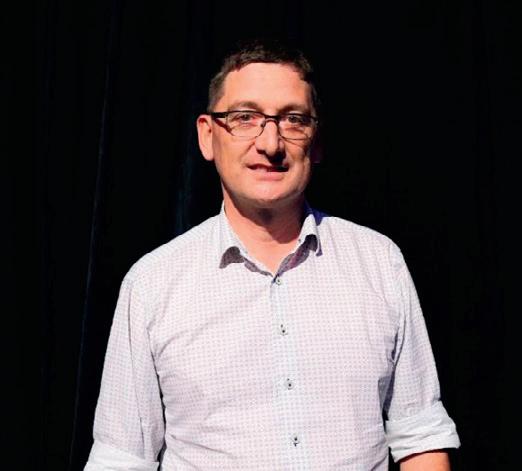
Soren Low, Chairman, Radio Frequency Users Association of New Zealand.
Vocus’s Rapid Satellite and Edge Compute Pod is a custom-designed shipping container pre-fitted with multiple bonded Vocus Satellite – Starlink terminals and edge compute hardware. The product is self-contained and constructed in a warehouse before being shipped to remote sites like mines, ready to be switched on and used straight away. It can be anchored at a site or remain on a trailer when only required for shorter periods.
The unit provides both ultrafast connectivity up to 1.7 Gbps (depending on configuration chosen and network availability) and integrated HPE Greenlake edge servers for instant hybrid cloud connectivity. The combination of the two capabilities enables businesses to run applications that require fast response times even in remote locations.
The HPE Greenlake servers can orchestrate with nearby data centres, allowing different levels of edge compute — from right there on the site, to a nearby NEXTDC tier III edge data centre, to the largest metro data centres housing the global hyperscaler cloud providers. Having computing power at the edge onsite means data-intensive, latency-sensitive applications like realtime analytics, inference model AI and machine learning are now possible in the field, enabling productivity and safety gains for industries like mining and resources.
Vocus www.vocus.com.au


The Wireless Broadband Alliance (WBA) — the global industry body dedicated to improving Wi-Fi standards and services — has announced the successful completion of its phase two field trials of IEEE 802.11ah Wi-Fi HaLow, which offers reliable, long-range, low-power connectivity that should make it ideal for a variety of IoT scenarios.
Wi-Fi HaLow includes a host of key features, such as operation in the sub-1 GHz radio band, the use of narrow channel bandwidths, an increased number of supported devices and new operating modes to accommodate battery-operated devices. It also builds upon the foundations of Wi-Fi, retaining such features as the most up-to-date high levels of security and native-IP support inherent in all internet connectivity.
Part of the WBA’s Wi-Fi HaLow for IoT project, the new field trials have proven the scalability and efficiency of Wi-Fi HaLow in challenging environments such as dense urban settings and large industrial complexes. The trials were conducted in North America by WBA and its members including key partners like Morse Micro, Newracom and Methods2Business, alongside participants such as AT&T, Charter Communications, Nextcomm Systems and Qualcomm, which focused on larger-scale implementations and testing Wi-Fi
HaLow in more challenging environments.
The phase two field trial use cases were Smart Home, Warehousing, Smart Farm, Smart City, Smart Office Building, Smart School Campus and Smart Industrial Complex. A range of benefits were proven in each of these use cases, including extended range, improved material penetration capabilities, extended battery life, enhanced device density, a higher level of security, ease of installation and management, and elevated data throughput in IoT scenarios when compared with existing Wi-Fi standards.
In Denver, Colorado, CableLabs’ Kyrio conducted a trial demonstrating Wi-Fi HaLow’s capabilities within a 465 m2 home and across a 1.21 ha lot, in a collaboration involving Methods2Business, Morse Micro and Newracom. The trial successfully utilised a single access point to deliver robust and secure Wi-Fi coverage throughout the property, eliminating the need for additional repeaters. Over 140 indoor locations were tested, achieving data throughputs exceeding 8 Mbps in highdemand areas and over 2 Mbps in typical usage scenarios.
The system efficiently managed 23 simultaneous device connections at MCS7 PHY rates (32 Mbps) and extended its range over 430 metres, showcasing potential for neighbourhood-wide connectivity. Additionally, the trial highlighted efficient network utilisation with OTA firmware updates completing in just 30 seconds for a 25 MB file at approximately 20 Mbps, affirming Wi-Fi HaLow’s suitability as a scalable solution for future smart homes and residential networking applications.
In a comprehensive trial at a 10,219 m 2 warehouse near Chicago, Wi-Fi HaLow demonstrated its effectiveness in providing robust wireless connectivity across complex industrial environments. The technology achieved extensive coverage with a single access point, delivering varying data rates from 1 Mbps in peripheral zones to 22 Mbps in central areas, thereby supporting a wide range of operational needs from high-definition video streaming to basic sensor communications. The system handled high throughput demands and supported numerous device types seamlessly, proving its versatility and reliability.
Notably, Wi-Fi HaLow managed outdoor connectivity up to 457 metres with strong signal strength, essential for logistics and fleet management. Redundancy tests further underscored the network’s reliability, with devices swiftly reassociating to alternative access points, ensuring operational continuity. The trial underscored Wi-Fi HaLow’s potential
as a scalable, efficient solution for modernising warehouse operations, highlighting its capability to enhance network performance while reducing infrastructure costs.
In a trial at Scott Farm Market and Greenhouse in Kent, Ohio, supported by Newracom and Morse Micro, Wi-Fi HaLow technology demonstrated impressive coverage and performance over a 5.67 ha agricultural site, addressing challenges such as extensive area coverage and penetration through various structures. The set-up included a single Wi-Fi HaLow AP and multiple IoT devices, achieving data rates from 1.3 Mbps at the most challenging points to 22 Mbps near the AP.
The technology effectively supported a multicamera security system, maintaining consistent video streaming across various locations and resolutions, and facilitated robust connectivity for 24 IoT devices simulating typical farm sensors and actuators. The trial underscored Wi-Fi HaLow’s potential to provide reliable, expansive connectivity for smart farming applications with minimal infrastructure.
In a smart city trial conducted in Irvine, California, Wi-Fi HaLow demonstrated its potential for extensive urban connectivity. Utilising equipment from Newracom, Morse Micro and Methods2Business, the technology achieved coverage over a 1 km radius and up to 2.41 km along Irvine Center Drive. The trial showed strong signal strength capable of supporting high MCS with PHY rates up to 3.34 Mbps. Even in areas with lower signal strength, connectivity remained robust, facilitating smart city applications such as safety monitoring and asset tracking across diverse urban landscapes including retail plazas and business parks.
A Wi-Fi HaLow trial at the Newracom Office Park in Irvine, California, demonstrated the technology’s effective deployment for smart building services with minimal infrastructural enhancements. Companies such as Morse Micro and Methods2Business provided crucial hardware like the MM6108-EKH01 access points and station evaluation kits. This setup enabled Wi-Fi HaLow to offer extensive and reliable coverage across multiple floors and diverse building materials, efficiently overcoming challenges like metal thermal energy-blocking films on glass.
The trial emphasised Wi-Fi HaLow’s utility in supporting a variety of services, including HVAC, energy management and security systems, with significant signal penetration and adaptable coverage. Different bandwidth tests also showcased the system’s flexibility to meet varying operational demands, affirming Wi-Fi HaLow as an ideal solution for contemporary smart building ecosystems within the Newracom Office Park.
In a trial at Red Hill Lutheran School, Newracom, Morse Micro and Methods2Business demonstrated the efficacy of Wi-Fi HaLow, achieving exceptional network performance across a 2.02 ha campus encompassing multiple buildings. Despite challenges from thick concrete walls and audio equipment
interference, Wi-Fi HaLow provided extensive indoor and outdoor coverage, managed interference without adjacent channel disruptions and supported the potential to scale up to 32,764 IoT devices efficiently. These results underline Wi-Fi HaLow’s capabilities as a cost-effective and robust network solution for educational settings, highlighting its advantages over traditional Wi-Fi systems with fewer infrastructural demands.
The Wi-Fi HaLow deployment trial at a large industrial complex in Tampa, Florida, showcased robust and extensive wireless coverage across both indoor and outdoor environments, overcoming the challenges posed by heavy machinery and metal structures. The trial, conducted by Morse Micro, Nexcomm Systems and Newracom, achieved high data throughput rates, with UDP traffic peaking at 21.3 Mbps and reliable connectivity extending up to 130 metres in high-density areas. This demonstration highlighted Wi-Fi HaLow’s capability to support critical industrial ap-
NOTABLY, WI-FI HALOW MANAGED OUTDOOR CONNECTIVITY UP TO 457 METRES WITH STRONG SIGNAL STRENGTH, ESSENTIAL FOR LOGISTICS AND FLEET MANAGEMENT.
plications such as real-time asset tracking and extensive video surveillance, proving its effectiveness in complex RF environments typical of large-scale industrial settings.
“Each of these real-world field trials has been a huge success demonstrating the readiness and the benefits Wi-Fi HaLow standard can bring to a vast range of industries and use cases, improving performance and reducing complexity,” said WBA CEO Tiago Rodrigues. “We now move to the next phase, and are inviting industry players interested in participating in trials across EMEA and APAC to reach out.”
The trials’ findings have been documented in the Wi-Fi HaLow for IoT: Field Trials Report, which contains actionable insights that can help drive innovation and strategic decisions across the Wi-Fi industry. For businesses, it lays down a roadmap to harnessing Wi-Fi HaLow for developing new products and entering new markets. For network planners and operators, it offers evidence-based strategies for enhancing network capabilities and service offerings. Additionally, the
report serves as a valuable educational tool, deepening understanding of Wi-Fi HaLow’s operational dynamics and advantages.
“Wi-Fi HaLow’s shines across a wide range of industries as a preferred connectivity technology, with its long range, signal penetration and data throughput,” said Zac Freeman, Vice President of Marketing & Sales of Newracom. “From open fields to industrial factories, Wi-Fi HaLow provides reliable, fast connectivity with simple architecture that can’t be replicated by any other technology, ticking all the boxes for requirements for IoT deployments.
“We could not be more pleased with our involvement and results of the WBA Wi-Fi HaLow IoT Field Trials Report, confirming WiFi HaLow’s capabilities in rigorous real-world environments — from homes to warehouses, farms to factories — to consistently deliver the next generation of IoT devices.”
For more details on the report and how to get involved in the upcoming phase 3 trials, visit https://wballiance.com/resource/ wi-fi-halow-for-iot-field-trials-report/ or email pmo@wballiance.com.
The Etherstack SFFR-6 GoBox is a compact, dual battery/mains powered, rapidly deployable, analog and P25 intelligent tactical repeater for standalone or P25 network augmentation use.
Testing by the US NUSTL — part of the US Department of Homeland Security — shows that the GoBox has achieved the highest overall rating of a portable radio repeater for indoor and subterranean environments. It was tested using Icom IC-F7020T P25 portable radios, and was evaluated in the five key areas of capability, usability, deployability, maintainability and affordability. It achieved the highest rating as assessed by highly experienced evaluators from firefighting, law enforcement and emergency management.
Weighing less than 9 kg, with an IP67 allweather rating, the GoBox can provide over 14 h of operation from two commercial-off-theshelf Li-ion batteries. In addition to standalone operation, the GoBox is also compatible with Ethernet-connected backhaul such as 3G/4G, satellite and Wi-Fi interfaces to provide P25 network connectivity.
Etherstack Pty Ltd etherstack.com
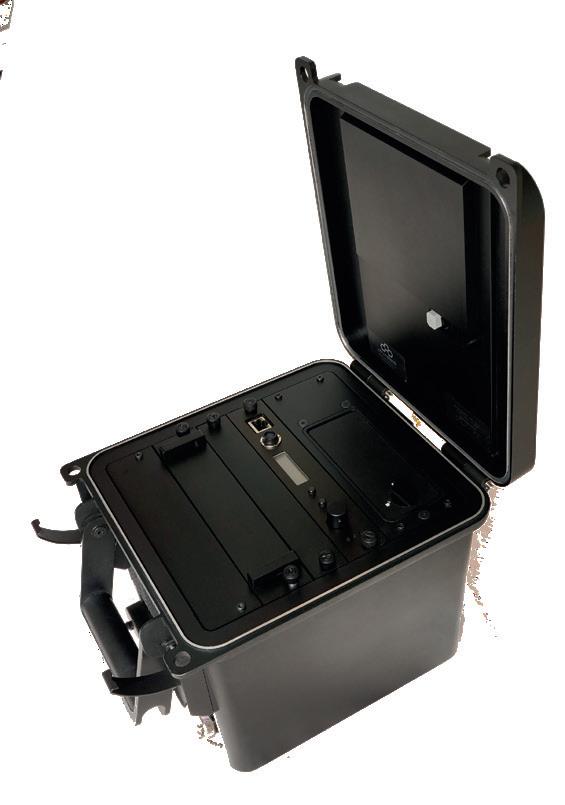
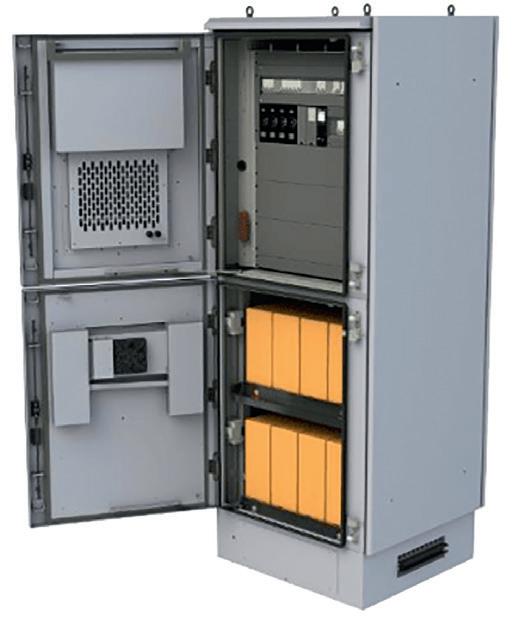
Eaton ExoCab outdoor enclosures can be used to protect vital electronic equipment in challenging outdoor environments.
Versatile and easily adapted to the user’s specific needs, the cabinets are suitable for remote networks and networks with minimal external support.
Key features include: IP55 with anti-graffiti finish; various cooling options available; and marine-grade aluminium and stainless steel.
Eaton Electrical (Australia) Pty Ltd www.eaton.com/au
Quectel Wireless Solutions’ LG290P quad-band GNSS module is designed to deliver high performance for demanding applications, enabling good RTK availability and quality even in challenging environments. Futureproofing applications by supporting constellations including GPS, GLONASS, Galileo, BDS, NavIC and QZSS, as well as SBAS support (WASS, EGNOS, MSAS and GAGAN) and satellite-based signals such as PPP-B2b, CLAS (QZSS L6) and Galileo HAS E6, the industrialgrade module receives the L1, L2, L5 and E6 frequency bands.

Designed to provide instantaneous centimetre-level accuracy, the module is compatible with Quectel triple band RTK services and offers coverage that supports base stations from long distances, enabling stable and high performance in difficult urban environments. This makes it especially suitable for sectors such as autonomous lawnmowers, delivery robots, surveying and precision agriculture.
According to the company, the quad-band module can enhance the RTK fix rate by 50% compared to dual band in extremely challenging environments, such as a garden encircled by trees and walls. Additionally, it can reduce the time to achieve RTK fix to less than 5 s, in contrast to the 10–15 s required by a dual band solution.
The module supports a multi-frequency RTK algorithm, for rapid RTK positioning results even in challenging conditions such as under dense tree cover, alongside buildings or inside urban canyons. With anti-interference technology, it incorporates a professional-grade interference signal detection and narrowband interference cancellation, enhancing signal reception performance in complex electromagnetic environments. Moreover, supporting integrity monitoring and authentication information verification, the product aids automatic navigation systems in making control decisions, particularly fitting for critical applications like autonomous vehicles and lawnmowers.
The module incorporates on-chip ECC check and Secure Boot for firmware protection. Measuring 12.2 x 16 x 2.6 mm, it offers flexibility for users, reducing integration challenges and enabling compact designs for a wide array of precision products. Users are also able to streamline their design process by sourcing the appropriate antenna, for flexibility and compatibility with a diverse array of project requirements.
Quectel
www.quectel.com








STMicroelectronics has introduced the ST4SIM-300, an embedded SIM that meets the incoming GSMA standard for eSIM IoT deployment. Also known as SGP.32, the standard introduces special features to facilitate managing IoT devices connected to cellular networks. Unlike existing eSIM machine-to-machine (M2M) and eSIM Consumer specifications, it has been created for the needs of today’s IoT deployments.
The eSIM supports features including automation of remote SIM provisioning (RSP), easily managing SIM profiles for large fleets of devices, and remote switching between network providers that eliminates physical SIM card swaps. It conforms to the latest 5G standard and facilitates deploying devices that have a limited user interface and deploying lowpower wide-area network (LPWAN) devices.
Featuring an EAL6+ certified ST secure microcontroller, the eSIM is built for security from the ground up. Compatible with the GSMA IoT SAFE applet, it facilitates adding secure element features for end-to-end communication and supports scalable security by design for creators of IoT devices.
The eSIM is designed to enhance flexibility, ease network provider switching and simplify the management of large numbers of connected devices. In a more connected and secured world, it will help seamlessly track assets across the globe, connect smart devices to the cloud and securely handle data from billions of devices. ST is sampling the product in various form factors, including wafer-level chip-scale packages (WLCSP) suitable for smart meters, GPS trackers, asset monitors, remote sensors, medical wearables and similar devices.
STMicroelectronics Pty Ltd www.st.com
Emerson has announced the Series D update to its family of SolaHD industrial rack mount online uninterruptible power supplies (UPSs). The SolaHD S4KD Series replaces the current S4KC Series, offering user interface improvements and other design upgrades to increase product availability.
The S4KD is an online (double conversion) UPS, providing a zero-transfer time from external to internal power upon utility power failure to deliver a seamless flow of power for critical loads. It is available in 1000–3000 VA in 120 V and 3000 VA in 230 V configurations, each housed in a slim 2U form factor.
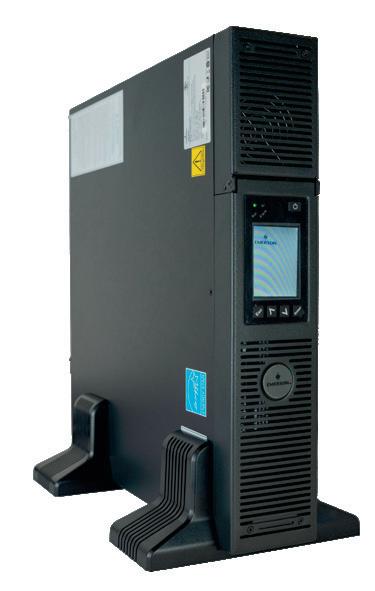
The UPS features a rugged metal housing and hardwired connections, providing power for automation, microprocessor/PC-based hardware, networking, telecommunication, medical and other mission-critical systems. The series builds on the ruggedness, battery life and power quality of the previous series, incorporating hardware design updates to improve usability and efficiency.
The series can be configured, and provide status and diagnostic information, using the onboard interface without the need of a laptop. The LCD colour graphical display is gravity sensitive, properly orienting itself for easy viewing and operation regardless of the UPS’s installation position. State-of-the-art diagnostics provide alerts to users about battery health status, efficiency metrics, replacement date prediction, data logging, input/output real-time tracking, bypass operation, faults and more, enabling users to keep their systems operating at optimum performance.
Emerson www.emerson.com/au/automation
u-blox has announced support for Galileo OSNMA (Open Service Navigation Message Authentication) in the latest firmware update of its ZED-F9P high-precision GNSS module. The enhancement advances the spoofing detection and jamming detection capabilities of the multi-band GNSS module, enabling robust performance for various applications such as robotic lawnmowers, unmanned aerial vehicles, and surveying and mapping.
The ZED-F9P-05B is the first u-blox product to adopt OSNMA, a cryptographically strong solution to spoofing that sets a high industry standard for GNSS security. The update helps continue the high performance of the device, with benefits including enhanced spoofing and jamming detection for end-product robustness against tampering and malicious attacks, as well as improved real-time kinematic (RTK) convergence to reduce the risk of incorrect readings important to surveying-related applications.
The addition of SPARTN Beidou satellite constellation support also enhances the capabilities of the GNSS receivers and boosts the performance of the u-blox PointPerfect GNSS correction service in some regions. As the receivers feature an advanced ionospheric model, they deliver a more robust performance during periods of elevated ionospheric activities.
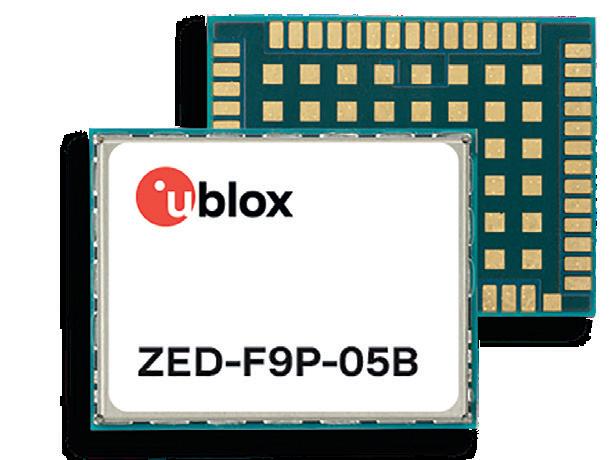
u-blox Singapore Pte Ltd www.u-blox.com

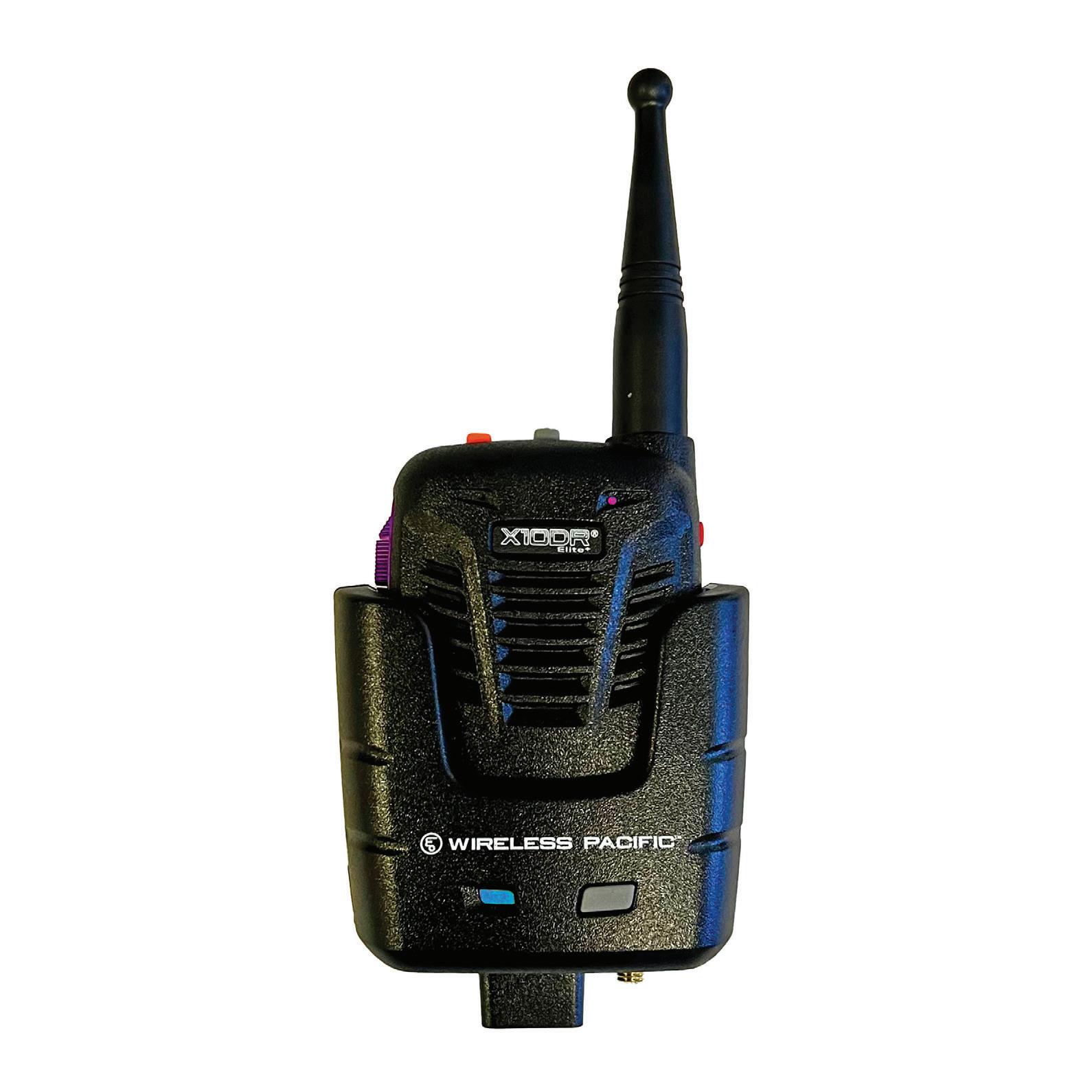






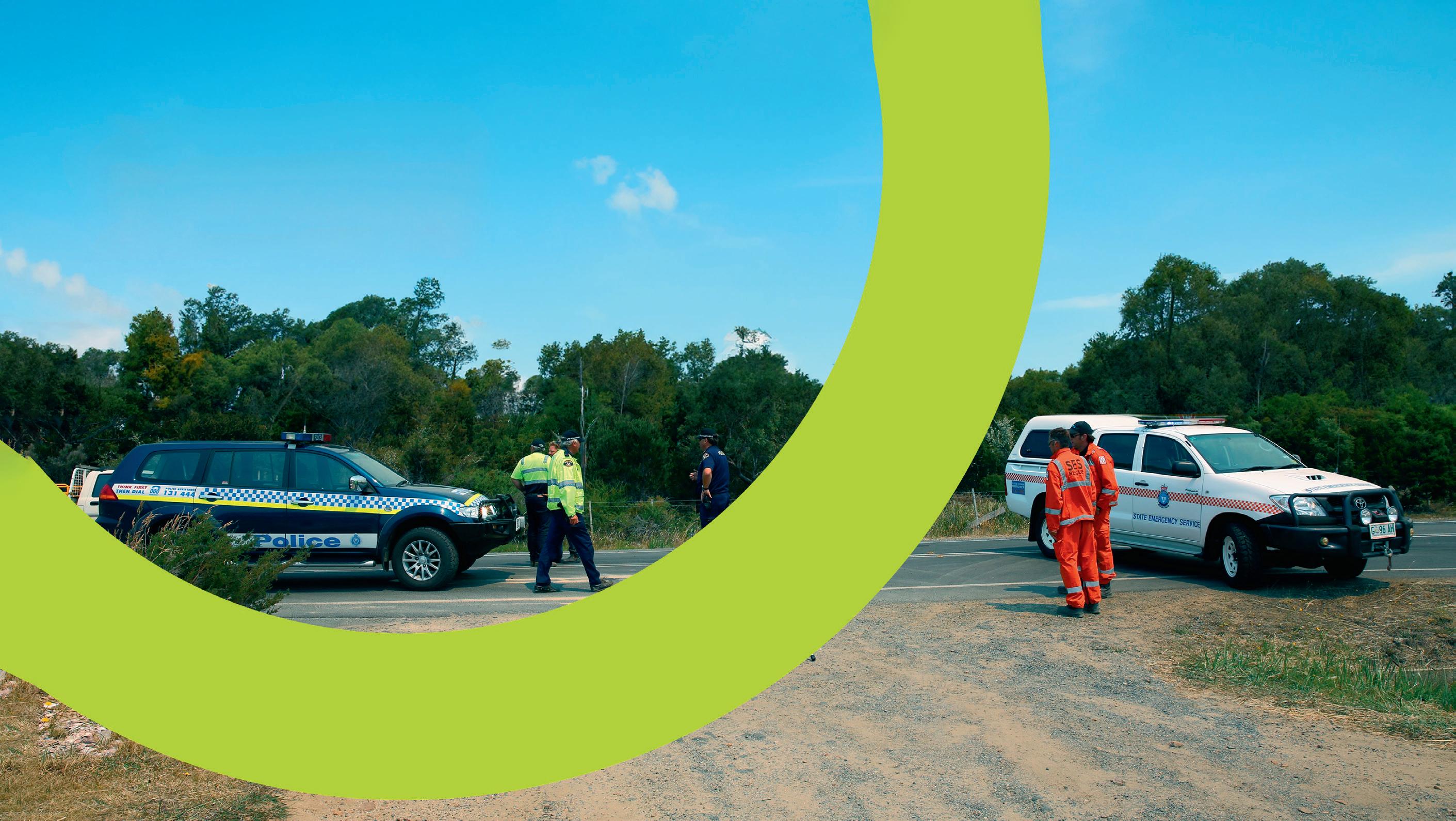

For over 75 years, Simoco has built a reputation as a trusted provider of critical communications solutions, known for their reliability, security, and e ciency. From two-way radio systems powering emergency services to digital networks that enhance industrial operations, Simoco has consistently met the challenges of the ever-evolving communications landscape. However, as industries and technologies change, Simoco is transforming its own approach to ensure it continues to provide cutting-edge, adaptive solutions for the future.
Today, Simoco is rede ning critical communications with a bold vision that fuses its legacy with the exibility to adapt to the emerging needs of its customers. e New Simoco combines decades of expertise with innovative technologies that ensure industries stay connected and secure in an increasingly complex world. As industries face new challenges in connectivity, security, and operational demands, Simoco is positioning itself at the forefront of these changes, addressing pivotal shifts in critical communications with solutions that are adaptable, scalable, and futureproof.
At the core of Simoco’s transformation is its ambitious vision to lead in adaptive communication solutions that grow alongside the needs of industries. e company envisions a future where communication systems are not only reliable and secure but also capable of evolving seamlessly with technological advancements. Simoco’s approach is built on the principle of adaptive technology — solutions that can integrate both traditional systems and next-generation innovations to meet the demands of today while preparing for tomorrow.
“Adaptive technology unlocks the future of communications systems” is more than a slogan for Simoco; it is a guiding principle that informs its mission and drives its development of innovative technologies. By creating communication platforms that are exible and adaptable, Simoco ensures that its customers can leverage new advancements without overhauling their existing infrastructure. is adaptability allows organisations to remain competitive and operationally e cient, regardless of how quickly technology evolves.
portfolio is Velocity, a high-performance intelligent communications platform built on edge computing with high-speed broadband connectivity for reliable and always-on mission critical voice and data communications. Velocity exempli es Simoco’s commitment to adaptive technology by integrating multiple forms of connectivity — two-way radio, cellular networks, and satellite communications — into a single, cohesive system. is solution provides alwayson communication, ensuring that even the most isolated regions can maintain reliable, secure connectivity without the need for costly infrastructure.
Simoco’s success has always been rooted in its deep understanding of its customers’ unique challenges. e company has long provided critical communication solutions for industries where reliability and security are paramount, including emergency services, utilities, transportation, and industrial sectors. What sets Simoco apart is its

commitment to customer-centric innovation, designing solutions that are tailored to the speci c needs of each industry.
Simoco’s mission is to deliver adaptive, secure, and compliant communication systems that empower its customers to achieve new levels of safety, performance, and operational excellence. ese solutions are not one-size- ts-all; they are customisable, scalable, and designed to integrate with existing systems, ensuring that customers can continue to rely on their communication infrastructure as they grow and evolve.
The Velocity solution is a perfect example of how Simoco tailors its offerings to meet the needs of specific industries. In remote areas where cellular coverage is unreliable or non-existent, Velocity provides a seamless converged communication platform that integrates two-way radio, LTE/4G, and satellite connectivity. This ensures that even the most remote workers can maintain communication with headquarters, access digital tools like email and Microsoft Teams, and benefit from continuous connectivity in areas where traditional communication infrastructure is impractical or too costly.
Infrastructure-Free Solutions: Simoco’s Velocity Technology
e challenges of critical communications in remote and rural areas are well known, particularly in countries like Australia, where vast distances and rugged terrain make traditional communication infrastructure di cult to maintain. Simoco’s Velocity technology addresses these challenges by o ering a cost-e ective, infrastructure-free communication solution that combines two-way radio, cellular, and satellite connectivity in a single platform. is allows councils, emergency services, and other organisations to maintain reliable communications without investing in expensive radio base stations or infrastructure.
One of the key bene ts of Velocity is its ability to provide least-cost routing, which automatically selects the best available network — whether it’s two-way radio, LTE/4G, or satellite — based on signal strength and cost e ciency. Users don’t need to worry about which network they are on; the system intelligently switches between them, ensuring uninterrupted communication. is feature is particularly valuable in areas where radio coverage may be inconsistent, or cellular networks are patchy or non-existent. With Velocity, users can be con dent that they will always be connected, even in the most remote locations.
Simoco’s focus on infrastructure-free communications is a game-changer for industries that operate in remote areas. With Velocity, organisations can extend their digital reach without the need for expensive and difficultto-maintain infrastructure, ensuring that their workers remain connected, productive, and safe, no matter where they are.
e critical communications industry is undergoing signi cant shifts, driven by the increasing complexity of global operations and the rapid pace of technological advancement. As businesses and industries rely more on data-driven operations, the need for communication systems that can integrate voice and data has become essential. Simoco’s solutions are designed to meet these evolving needs by providing platforms that seamlessly blend traditional communication technologies with next-generation innovations.
1. e Rise of Data-Driven Operations: Communication systems are now expected to do more than facilitate voice calls. ey must support data transmission, real-time video streaming, and integration with IoT devices. Simoco’s Velocity platform enables this level of functionality, allowing organisations to leverage
both voice and data for enhanced decisionmaking and operational e ciency.
2. Security and Compliance: As industries face increasing cyber threats, the security of communication systems is more important than ever. Simoco prioritises security and compliance, ensuring that its solutions are built with advanced encryption and adhere to the highest industry standards. is focus on security is critical for industries where even a minor breach could have severe consequences.
3. Scalability and Flexibility: e ability to scale and adapt communication systems is essential for industries that experience uctuating operational demands. Simoco’s adaptive solutions allow organisations to expand or modify their communication networks as needed, without incurring the high costs associated with traditional infrastructure.
4. Seamless Integration: Simoco’s technology is designed to integrate easily with existing systems, ensuring that organisations can continue to use their legacy communication infrastructure while adopting new technologies like satellite communications and IoT devices.
Simoco is more than a communications provider — it is a partner in innovation, committed to helping its customers navigate the challenges of today while preparing for the future. With its adaptive, infrastructure-free solutions like Velocity, Simoco is at the forefront of transforming critical communications, o ering technologies that are scalable, secure, and future-proof. As industries and technologies continue to evolve, Simoco is leading the charge, ensuring that its customers are equipped with the tools they need to stay connected, secure, and e cient. With a focus on customer-centric innovation, Simoco is rede ning what it means to be a leader in critical communications, ensuring that its solutions meet the needs of today’s industries while anticipating the demands of tomorrow. Whether through its infrastructure-free solutions, commitment to security, or vision-driven adaptability, Simoco is paving the way for the future of critical communications.


Ubiquitous wireless technologies like Wi-Fi, Bluetooth and 5G rely on radio frequency (RF) signals to send and receive data. Now, a prototype energy-harvesting module is being used to convert ambient or ‘waste’ RF signals into direct-current (DC) voltage, which could power small electronic devices without the use of batteries.
RF energy-harvesting technologies will be essential going forward as they reduce battery dependency, extend device lifetimes, minimise environmental impact and enhance the feasibility of wireless sensor networks and IoT devices in remote areas where frequent battery replacement is impractical. However, RF energy-harvesting technologies face challenges due to low ambient RF signal power (typically less than -20 dBm), where current rectifier technology either fails to operate or exhibits a low RF-to-DC conversion efficiency. While improving antenna efficiency and impedance matching can enhance performance, this also increases on-chip size, presenting obstacles to integration and miniaturisation.
To address these challenges, researchers from the National University of Singapore (NUS), Tohoku University and the University of Messina developed a compact and sensitive rectifier technology that uses nanoscale spin rectifiers (SRs) to convert ambient wireless RF signals at power less than -20 dBm to a DC voltage. Their work has been described in the journal Nature Electronics
“Harvesting ambient RF electromagnetic signals is crucial for advancing energyefficient electronic devices and sensors; however, existing energy-harvesting modules face challenges operating at low ambient power due to limitations in existing rectifier technology,” explained NUS Professor Yang Hyunsoo, who spearheaded the project.
“For example, gigahertz Schottky diode technology has remained saturated for decades due to thermodynamic restrictions at low power, with recent efforts focused only on improving antenna efficiency and impedance-matching networks, at the expense of bigger on-chip footprints. Nanoscale spin-rectifiers, on the other hand, offer a compact technology for sensitive and efficient RF-to-DC conversion.”
The team optimised SR devices and designed two configurations: a single SRbased rectenna operational between -62 and -20 dBm; and an array of 10 SRs in series achieving 7.8% efficiency and zerobias sensitivity of approximately 34,500 mV/mW. Integrating the SR array into an energy-harvesting module, they successfully powered a commercial temperature sensor at
-27 dBm. These results “demonstrate that SR technology is easy to integrate and scalable, facilitating the development of large-scale SR arrays for various low-powered RF and communication applications”, according to Yang.
The researchers are now exploring the integration of an on-chip antenna to improve the efficiency and compactness of SR technologies. They are also developing series-parallel connections to tune impedance in large arrays of SRs, utilising on-chip interconnects to connect individual SRs. This approach aims to enhance the harvesting of RF power, potentially generating a significant rectified voltage of a few volts, thus eliminating the need for a DC-to-DC booster.
Ultimately, the researchers aim to collaborate with industry and academic partners for the advancement of self-sustained smart systems based on on-chip SR rectifiers. This could pave the way for compact on-chip technologies for wireless charging and signal detection systems.
“Despite extensive global research on rectifiers and energy-harvesting modules, fundamental constraints in rectifier technology remain unresolved for low ambient RF power operation,” said NUS’s Dr Raghav Sharma, first author on the paper.
“Spin-rectifier technology offers a promising alternative, surpassing current Schottky diode efficiency and sensitivity in low-power regime. This advancement benchmarks RF rectifier technologies at low power, paving the way for designing next-generation ambient RF energy harvesters and sensors based on spin rectifiers.”
Tallysman’s TW5386 Smart GNSS UDR antennas are multi-band (L1/L2), multi-constellation, integrated global navigation satellite system (GNSS) antennas with an inertial measurement unit (IMU) and real-time kinematic positioning (RTK) for positioning in autonomous driving, smart agriculture, robotics and multiple precision timing applications. They are capable of providing sub-1 m accuracy standalone and sub-10 cm accuracy with RTK corrections to deliver positioning in demanding, dense ‘urban canyon’ environments.
The smart antennas are designed to feature improved noise immunity with a multi-band ZED-F9R GNSS receiver from u-blox. Other features include an expansive constellation array; good position performance without correction services; and multi-path rejection with an Accutenna multi-band (L1/L2) dualfeed patch.
Mouser Electronics au.mouser.com

Hytera’s PDC5 Series Dual-mode Rugged Radio, unveiled at Critical Communications World 2024, is designed to provide seamless, dual-mode communication with high audio quality and robust connectivity.
The radio series is useful for government institutions and businesses that want to leverage both professional mobile radio (PMR) and LTE technologies.
It has been optimised for critical industries such as railways and security.
Hytera Communications Co. Ltd www.hytera.com.au

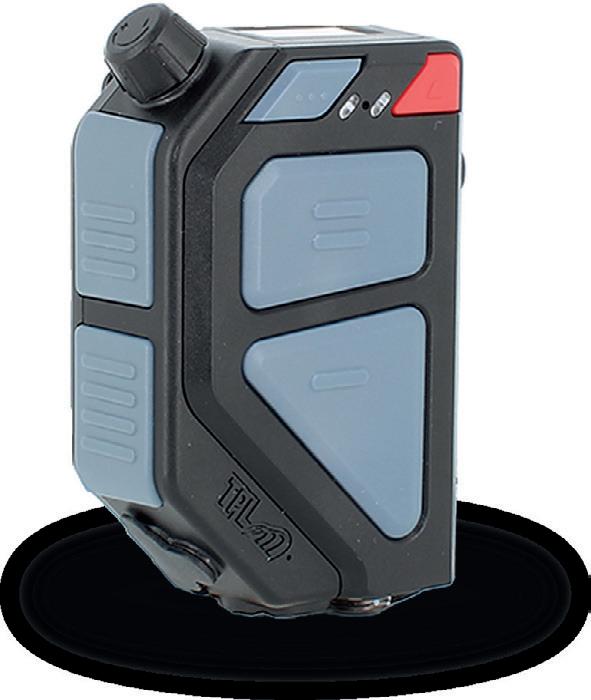



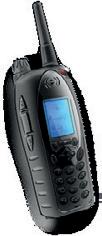
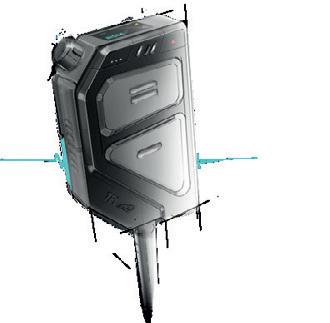
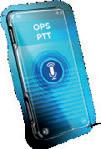
Teledyne e2v has qualified and released an upscreened version of NXP’s LX2160 processor to operate between -55 and +125°C. The military-qualified processor implements a 16-core Arm Cortex A72 design, providing developers of AI-at-the-Edge computing systems, single-board computers and other compute-intensive systems embedded on aerospace and defence equipment with high performance in a small form factor and optimised power envelope.
Compared to the previous-generation LS1046, a quadcore processor in NXP’s 64-bit Arm Layerscape portfolio which Teledyne e2v has also qualified, the power-efficient LX2160 offers designers of embedded systems a lift of 2.6 more giga instructions per watt. With 4x more cores and 6x more DMIPS (201k DMIPS @ 2.2 GHz) computing capability, the product delivers performance benefits for aerospace and defence applications, including two DDR4 interfaces, 100 GbE, multiple PCIe Gen3.0 and SATA Gen3.0, to enable faster switching and routing of data. It also provides engineers with an easy migration pathway for previously developed software assets on Arm-based systems to more compute-intensive designs or system upgrades.
The military qualification of the processor means it is functional over a wide operating temperature range. The device is housed in a compact 40 x 40 mm package, which reduces mounting area and minimises installation space. In addition, Teledyne e2v is committed to supporting the processor for 15+ years, avoiding obsolescence issues.
Teledyne e2v Asia Pacific Limited www.teledyne-e2v.com
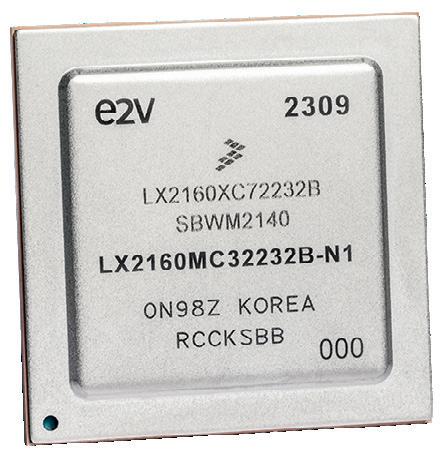
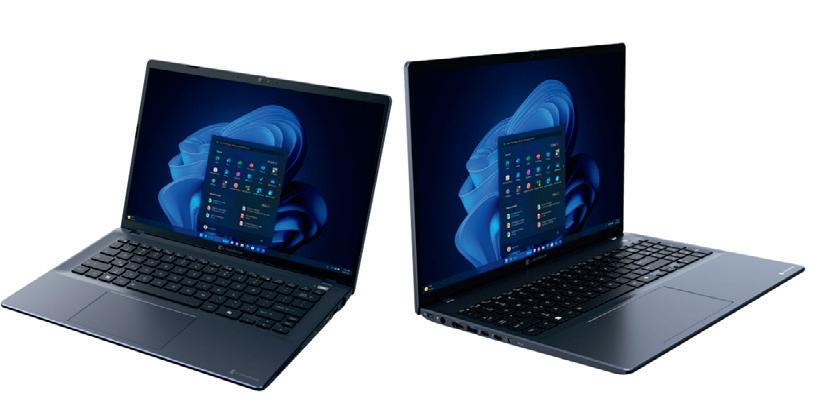
Dynabook ANZ has announced its latest Copilot-enhanced business devices: the 14 ″ Tecra A40-M and 16 ″ Tecra A60- M. These two Windows 11 Pro laptops, powered by Intel Core Ultra processors (Series 1), combine durable hardware with advanced AI to enable high levels of productivity and performance for businesses, with the ability to enhance efficiency, security and user experience. The Tecra A60-M is Dynabook’s inaugural 16 ″ , AIenhanced, high-performance laptop tailored for mobile professionals, featuring a slim, portable design and a full-sized backlit 10-key integrated numeric keyboard. The 14 ″ Tecra A40-M provides seamless productivity that is suitable for anywhere, anytime computing.
Both models feature Copilot AI with a dedicated Copilot key for instant AI assistance, streamlining operations and automating repetitive tasks. Enhancements include AI noise reduction for clear communication, a 5 MP webcam with AI features like background blur and face framing, and AI-optimised battery management for extended usage.
The models feature a compact, lightweight, dark blue chassis designed to surpass MIL-STD-810H standards for durability. Both laptops offer 16:10 WUXGA displays with touch options, full-size backlit keyboards with conferencing hotkeys for Microsoft Teams or Zoom, and spacious ClickPads.
As Secured-core PCs, the laptops provide comprehensive protection against security and privacy threats. They feature hardware and software security measures, including Trusted Platform Module (dTPM) 2.0 and advanced encryption, and can be configured with optional face and/or fingerprint biometric scanners or smart card readers, so that data remains safe and secure.

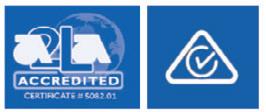

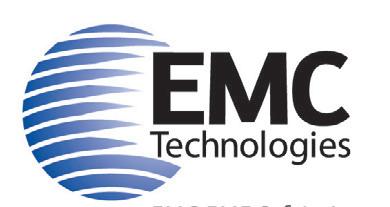
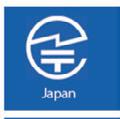
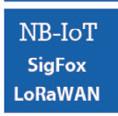
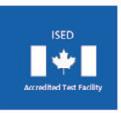
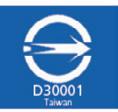
With support for Wi-Fi 6E and a LAN port, the laptops enable fast, ongoing network access. They also feature a variety of essential ports, including HDMI, Thunderbolt 4, USB Type-A and a microSD card slot, providing a clutter-free workspace. The high-resolution display and enhanced audio and video capabilities make them suitable for collaborative and solo work, while the USB-C port enables several connectivity possibilities.
Dynabook ANZ Pty Limited www.anz.dynabook.com
Scientists at the Tokyo Institute of Technology (Tokyo Tech) have developed a wirelessly powered 5G relay that could accelerate the development of smart factories by solving many of the current limitations, including range and efficiency. Their proposed relay design has been presented at the 2024 IEEE Symposium on VLSI Technology & Circuits.
In high-tech factories and warehouses, wireless sensors and transceivers are installed in robots, production mac11hinery and automatic vehicles. In many cases, 5G networks are used to orchestrate operations and communications between these devices.
To avoid relying on cumbersome wired power sources, sensors and transceivers can be energised remotely via wireless power transfer (WPT). However, one problem with conventional WPT designs is that they operate at 24 GHz. At such high frequencies, transmission beams must be extremely narrow to avoid energy losses. Moreover, power can only be transmitted if there is a clear line of sight between the WPT system and the target device. Since 5G relays are often used to extend the range of 5G base stations, WPT needs to reach even further, which is yet another challenge for 24 GHz systems.

To address the limitations of WPT, Tokyo Tech researchers developed a novel 5G relay that can be powered wirelessly at a lower frequency of 5.7 GHz. Senior author Associate Professor Atsushi Shirane explained that, by using 5.7 GHz as the WPT frequency, the team can achieve wider coverage than conventional 24 GHz WPT systems, enabling a wider range of devices to operate simultaneously.
A key innovation in the team’s design is the use of the 5.7 GHz WPT signal as both a means of generating DC power using a rectifier and as an oscillator for the mixing and unmixing circuits. By amplifying the input signal after down conversion to a lower frequency via mixing, this circuit achieves higher efficiency and gain.
The proposed wirelessly powered relay is meant to act as an intermediary receiver and transmitter of 5G signals, which can originate from a 5G base station or wireless devices. A rectifier-type mixer performs fourth-order subharmonic mixing while also generating DC power.
Notably, the mixer uses the received 5.7 GHz WPT signal as a local signal. With this local signal, together with multiplying circuits, phase shifters and a power combiner, the mixer ‘down-converts’ a received 28 GHz signal into a 5.2 GHz signal. Then, this 5.2 GHz signal is internally amplified, up-converted to 28 GHz through the inverse process, and retransmitted to its intended destination.
To drive these internal amplifiers, the proposed system first rectifies the 5.7 GHz WPT signal to produce DC power, which is managed by a dedicated power management unit. This approach offers several advantages, according to Shirane.
“Since the 5.7 GHz WPT signal has less path loss than the 24 GHz signal, more power can be obtained from a rectifier,” Shirane said. “In addition, the 5.7 GHz rectifier has a lower loss than 24 GHz
rectifiers and can operate at a higher power conversion efficiency.” Finally, the proposed circuit design allows for selecting the transistor size, bias voltage, matching, cutoff frequency of the filter, and load to maximise conversion efficiency and conversion gain simultaneously.
Through several experiments, the research team showcased the capabilities of their proposed relay. Occupying only a 1.5 x 0.77 mm chip using standard CMOS technology, a single chip can output a high power of 6.45 mW at an input power of 10.7 dBm. Notably, multiple chips could be combined to achieve a higher power output.
The proposed 5.7 GHz WPT system could thus greatly contribute to the development of smart factories, allowing for a more versatile and widespread arrangement of sensors and transceivers in industrial settings.
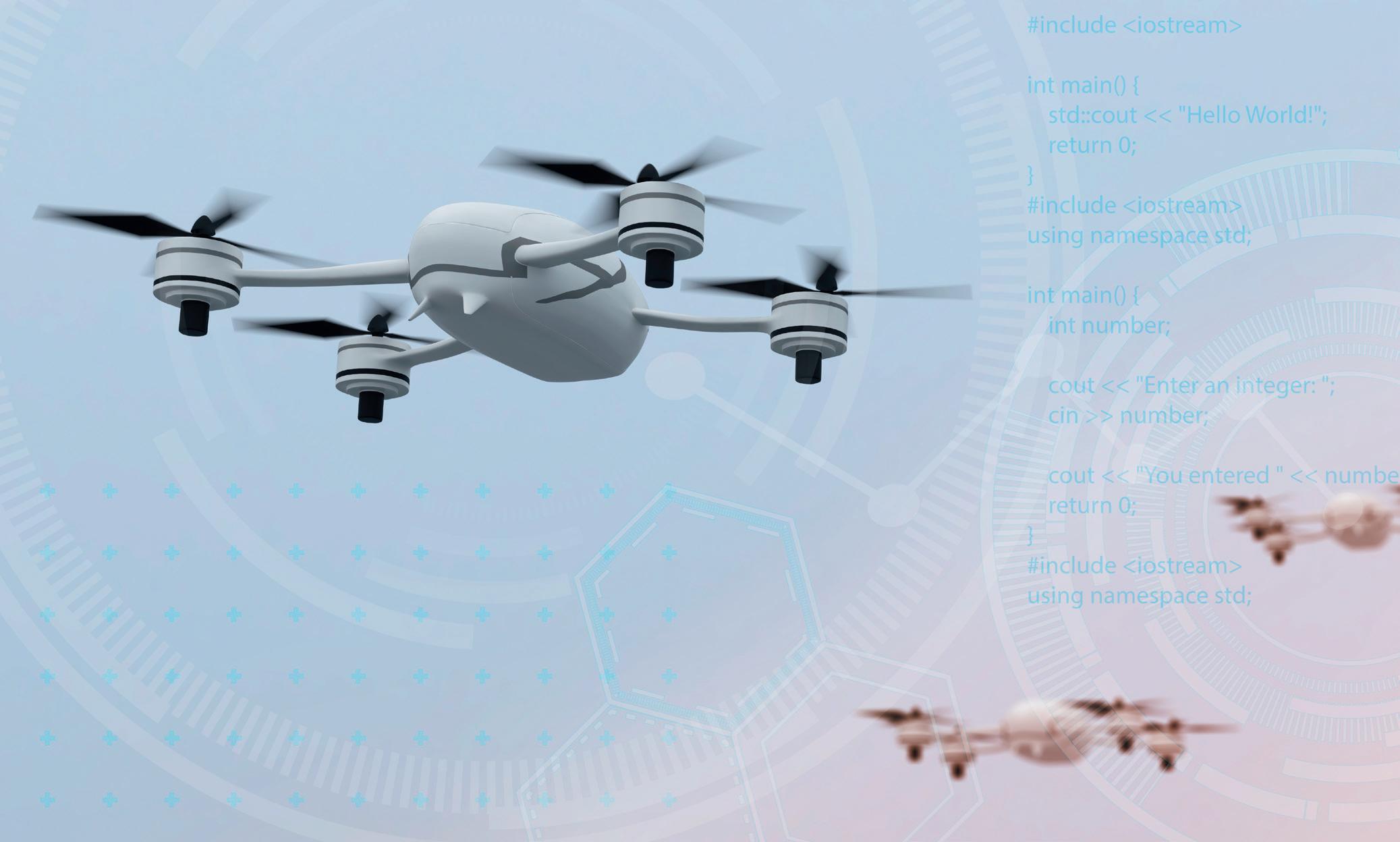
University of the Basque Country (UPV/EHU) researcher Julián Estévez has developed low-cost, autonomous navigation technology to prevent two or more drones whose paths cross in mid-air from colliding with each other. His solution has been published in the journal Aerospace Science and Technology , with the software code available via GitHub.
Most of the drones we are familiar with are manned, even if they are outside the operator’s view. For a drone to be fully autonomous, it has to be able to make flight decisions on its own and without human intervention; in other words, to decide for itself how to avoid collisions, maintain its course in the face of wind gusts, control flight speed, dodge buildings and trees, etc.
“Using simple, low-cost equipment and an algorithm based on artificial vision and colour identification, we have developed a robust piece of technology to satisfactorily prevent collision between drones and which can be easily extrapolated to most commercial and research aerial robots,” Estévez said.
“This work is a small step towards fully autonomous navigation, without any human intervention, so that drones can decide which manoeuvre to perform, which direction to take, thus preventing collisions with each other or with other airborne obstacles. If we assume that, in the future, our airspace will be much more populated by commercial services performed by these drones, our work is a small contribution in this respect.”
Estévez explained that the approach to preventing collisions “does not require drones to exchange information with each other; instead, they rely solely on their onboard sensors and cameras. We get the signal from the camera onboard the drones, and by processing the images, we adjust the reactions of the robots so that they fly smoothly and accurately.”
In experiments, UPV/EHU’s Computational Intelligence Group tried to mimic realistic drone conditions — so scenarios that could occur in a typical urban area under uncontrolled lighting conditions, with drones flying in different directions. Estévez explained, “We equipped each drone with a red card that allows the software algorithm to detect the presence of an approaching drone and measure its proximity.”
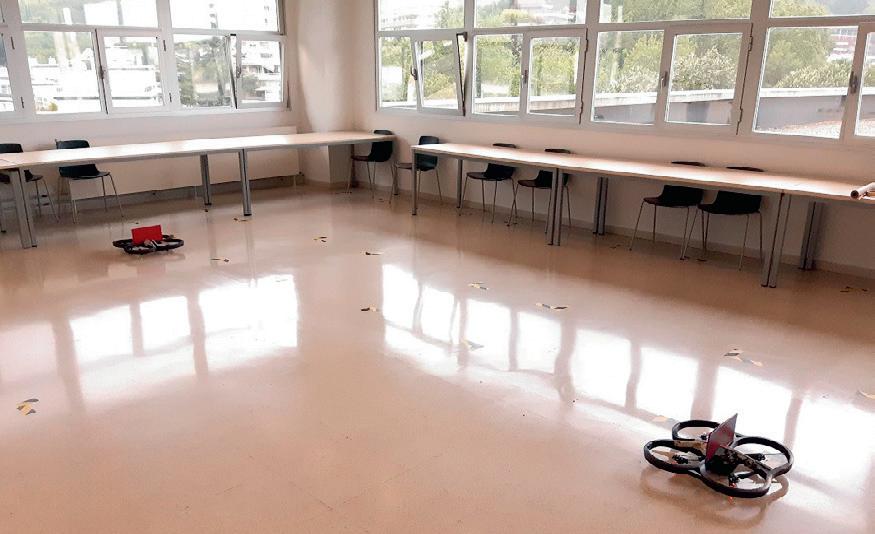
Estévez continued, “Each drone is equipped with an onboard camera, the screen of which is divided into two halves (left and right). This camera always seeks out the colour red of the cards mentioned above. Through simple image processing, we can find out what percentage of the camera is occupied by the colour red, and whether most of this red is on the left- or right-hand side of the screen. If most of the red zone is on the left-hand side of the screen, the drone will fly to the right to avoid collision. If the red zone is on the right, it will move to the left.
“When the percentage of the colour red on the screen increases, it means that the drones are approaching each other head-on. So when a threshold is exceeded, the robot knows that it has to perform the avoidance manoeuvre. All this happens autonomously, without the human operator intervening.
“It’s a simple way to prevent collisions and can be performed by low-cost sensors and equipment,” Estévez said. He added that the study successfully validated the use of the technology in commercial drones, in spite of its reduced cost.
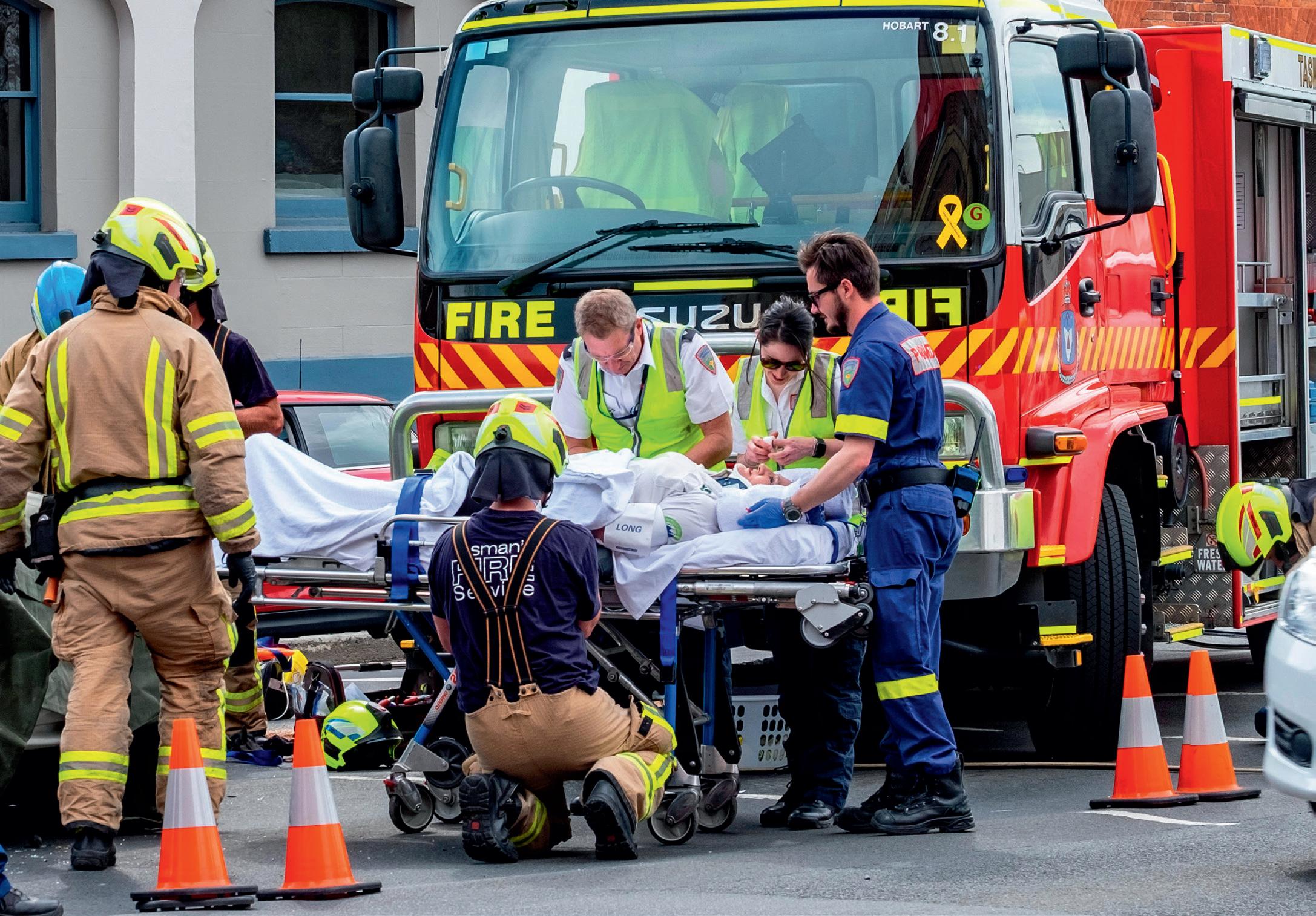
First responders are under pressure to react faster to emergencies with better and more informed decisions. Multimedia mission-critical data services are essential to support crucial features for emergency response teams, such as situational awareness, position tracking, distribution of images or live video streams. Highly efficient and secure communication between control centres and emergency responders will also depend on the availability of public or dedicated 4G/5G mobile networks. The future of mobile mission-critical communication will be broadband.
Innovative technology and investment in the Public Safety industry is essential for next generation control room solutions and mission-critical communication systems. Frequentis LifeX and MissionX will support the demands of next generation control rooms and ensure mission-critical communication over standardised mobile networks. For a safer world.
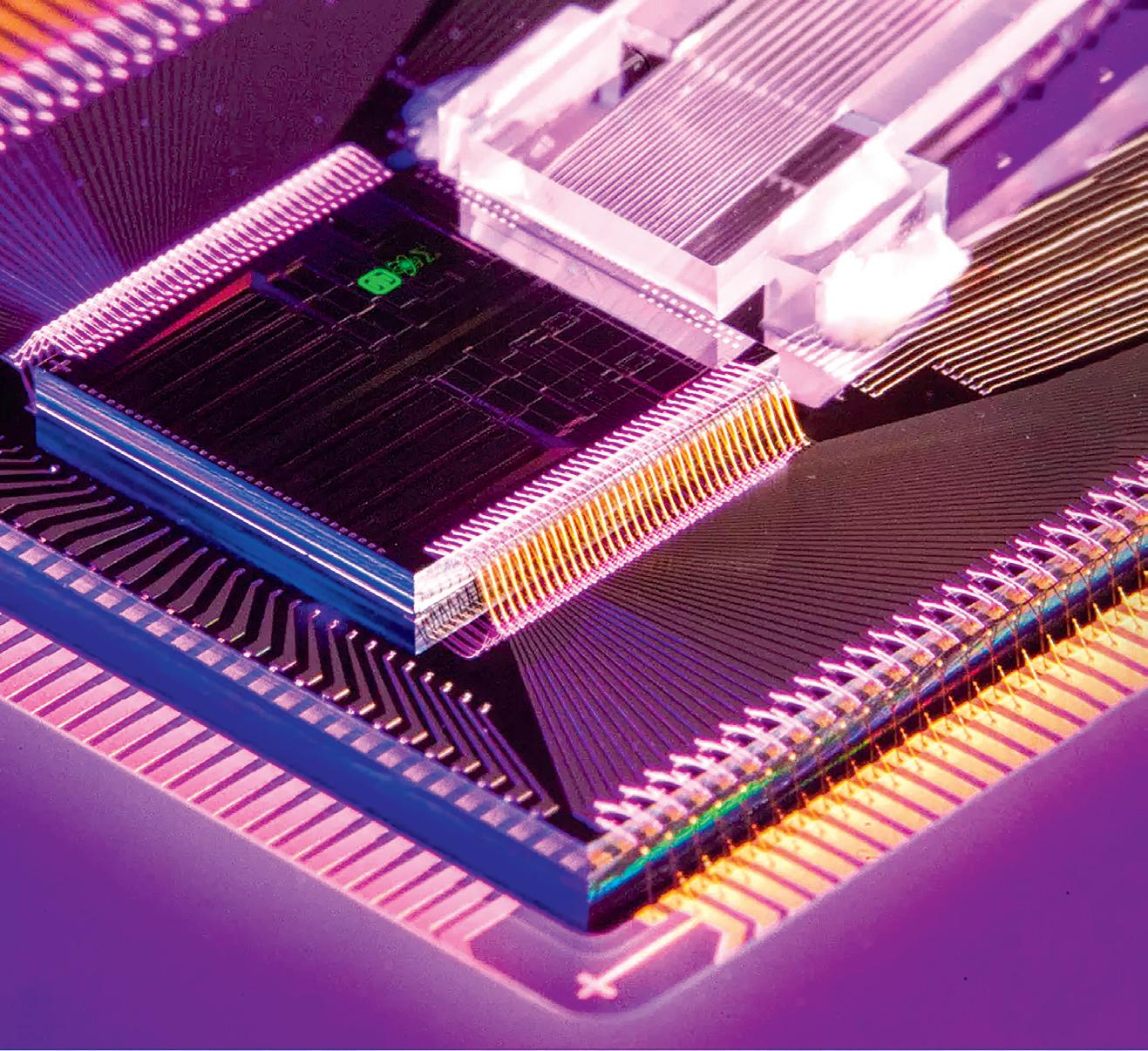
Peel apart a smartphone, fitness tracker or virtual reality headset, and inside you’ll find a tiny motion sensor tracking its position and movement. Bigger, more expensive versions of the same technology help navigate ships, aeroplanes and other vehicles with GPS assistance. Now, scientists are attempting to make a motion sensor so precise that it could minimise our reliance on global positioning satellites.
Until recently, such a sensor — a thousand times more sensitive than today’s navigation-grade devices — would have filled a moving truck, but advancements are dramatically shrinking the size and cost of this technology. Researchers from Sandia National Laboratories have now used silicon photonic microchip components to perform a quantum sensing technique called atom interferometry — an ultra-precise way of measuring acceleration — with their results published in the journal Science Advances
As explained by Sandia scientist Jongmin Lee, “Accurate navigation becomes a challenge in real-world scenarios when GPS signals are unavailable.” For example, in a war zone, these challenges pose national security risks, as electronic warfare units can jam or spoof
satellite signals to disrupt troop movements and operations. Quantum sensing offers a solution.
“By harnessing the principles of quantum mechanics, these advanced sensors provide unparalleled accuracy in measuring acceleration and angular velocity, enabling precise navigation even in GPS-denied areas,” Lee said.
Typically, an atom interferometer is a sensor system that fills a small room. A complete quantum compass — more precisely called a quantum inertial measurement unit — would require six atom interferometers. But Lee and his team have been finding ways to reduce its size, weight and power needs — they already have replaced a large, power-hungry vacuum pump with an avocado-sized vacuum chamber and consolidated several components usually delicately arranged across an optical table into a single, rigid apparatus.
The team’s new high-performance silicon photonic modulator — a device that controls light on a microchip — is the centrepiece of a laser system on a microchip. Rugged enough to handle heavy vibrations, it would replace a conventional laser system typically the size of a refrigerator.
Lasers perform several jobs in an atom interferometer, and the Sandia team uses four modulators to shift the frequency of a single laser to perform different functions. However, modulators often create unwanted echoes called sidebands that need to be mitigated.
Sandia’s suppressed-carrier, single-sideband modulator reduces these sidebands by an impressive 47.8 dB — a measure often used to describe sound intensity but also applicable to light intensity — resulting in a nearly 100,000-fold drop. As noted by Sandia scientist Ashok Kodigala, “We have drastically improved the performance compared to what’s out there.”
Besides size, cost has been a major obstacle to deploying quantum navigation devices. Every atom interferometer needs a laser system, and laser systems need modulators. As noted by Lee, “Just one full-size single-sideband modulator, a commercially available one, is more than $10,000.”
Miniaturising bulky, expensive components into silicon photonic chips helps to drive down these costs. According to Kodigala, “We can make hundreds of modulators on a single 8 ″ wafer and even more on a 12 ″ wafer.”
Lee added that, since they can be manufactured using the same process as virtually all computer chips, “This sophisticated four-channel component, including additional custom features, can be mass-produced at a much lower cost compared to today’s commercial alternatives, enabling the production of quantum inertial measurement units at a reduced cost.”
As the technology gets closer to field deployment, the team is exploring other uses beyond navigation. Researchers are investigating whether it could help locate underground cavities and resources by detecting the tiny changes these make to Earth’s gravitational force. They also see potential for the optical components they invented, including the modulator, in LiDAR, quantum computing and optical communications.
“I think it’s really exciting,” Kodigala said. “We’re making a lot of progress in miniaturisation for a lot of different applications.”
The team’s grand plan — to turn atom interferometers into a compact quantum compass — bridges the gap between basic research at academic institutions and commercial development at tech companies. An atom interferometer is a proven technology that could be an excellent tool for GPS-denied navigation, and Sandia’s ongoing efforts aim to make it more stable, fieldable and commercially viable.


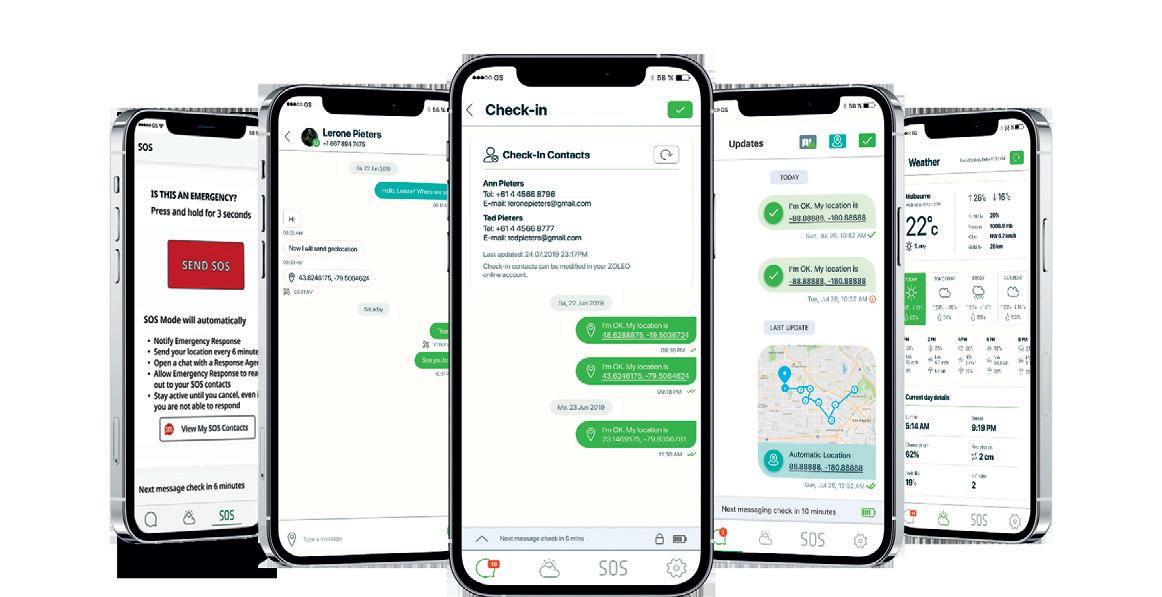
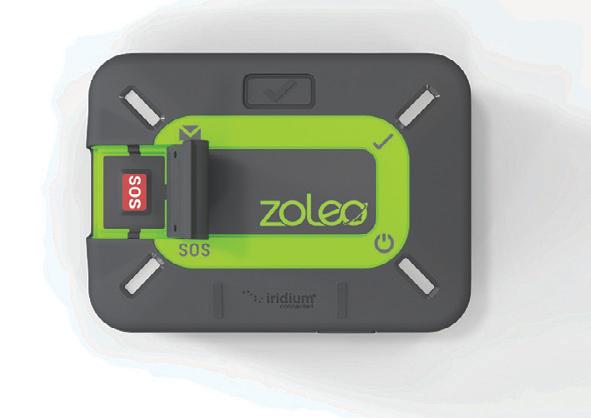

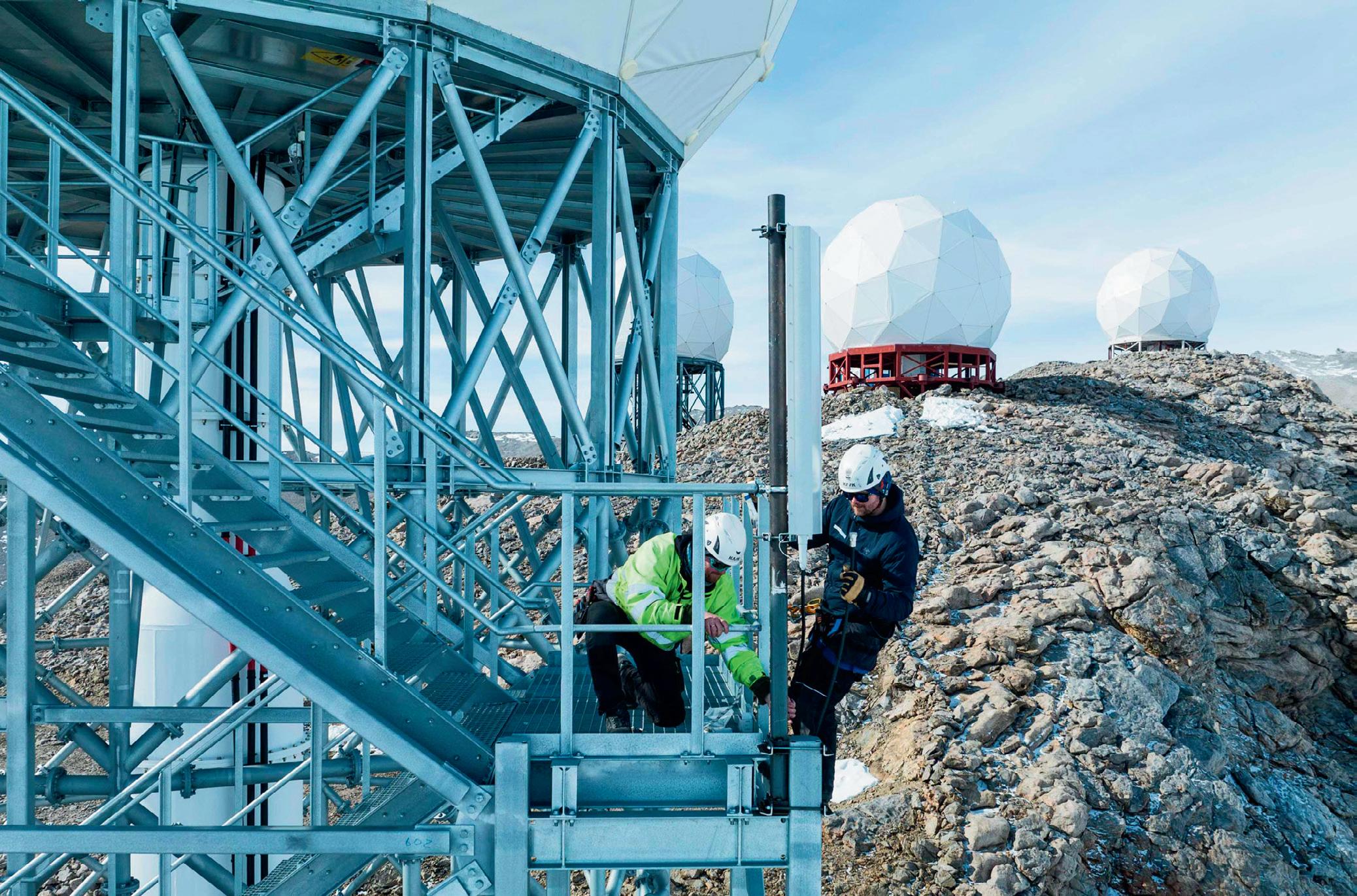
Norwegian telco company Telenor has celebrated six months since the opening of its commercial base station in Antarctica, in the process setting a new benchmark for connectivity in the harshest of environments. What makes this base station special, aside from being the southernmost in the world, is that it’s operated from the world’s northernmost, based in Svalbard, Norway.
The primary motivation behind the project was to provide essential mobile coverage to the Norwegian Polar Institute’s Antarctic research station, Troll. Troll serves as a hub for scientific exploration and environmental research, making reliable communication crucial for the success of ongoing projects and the safety of researchers working in the region.
“There has been a fruitful dialogue with the Norwegian Polar Institute regarding the possibilities offered by a base station in Antarctica,” said the Head of Telenor Svalbard, Christian Skottun. “Telenor, with its presence in Svalbard, has extensive experience in building and operating mobile networks in Arctic regions.
“Mobile coverage is crucial for both Arctic poles. For research communities, the ability to utilise mobile IoT in gathering data from fieldwork is particularly attractive. Additionally, mobile coverage opens up new possibilities for research and environmental monitoring in the Antarctic oceanic area.”
Since the base station went into operation in February, mobile coverage has been available in the area where the polar research
station is located. This provides Troll with a greater connection to the outside world and also provides a new dimension of safety.
“Mobile coverage is a step forward for technological development at Troll,” said the Director of the Polar Institute, Camilla Brekke. “In addition, it provides new opportunities for research and monitoring in Queen Maud Land.”
In addition to close collaboration with the Norwegian Polar Institute, Telenor Svalbard also collaborates with Kongsberg Satellite Services (KSAT), which is responsible for the communication service from the Troll station. KSAT owns and operates TrollSat, one of the world’s most important ground stations for collecting data from climate and environmental monitoring satellites, co-located with the research station at Troll. KSAT is responsible for transmitting satellite-based information from Troll to users worldwide.
“Full mobile coverage at Troll … helps our users and simplifies communication with the outside world,” said Rolf Skatteboe, CEO of KSAT. “We are therefore pleased that the satellite link from Troll also can be used for mobile phone traffic.”
Birgitte Engebretsen, CEO of Telenor Norway, said she is proud and delighted that Telenor has contributed to establishing mobile connectivity between the poles. She concluded that “the emergence of our new technological solutions opens up new possibilities for research”. Telenor www.telenor.com

KYOCERA AVX’s UBR Series of next-generation, surface-mount, ultra-broadband resistors has been designed utilising proprietary Glass Sandwich Flexiterm technology. Flexiterm is a surface-mountable, automotive-qualified termination that adds an extra margin of protection against damage due to flexure during installation. The use of glass sandwich technology and precision laser trimming reduces parasitic noise up to 40 GHz, the company says.
The series is suitable for use in optical transceiver modules or any application requiring high ultra-broadband performance, including broadband receivers, TOSA/ROSA, wideband test equipment, lownoise amplifiers, MMIC amplifiers, mixers, directional couplers, ultra-broadband splitters and combiners.
Key features include: frequency range of DC to 40 GHz; resistance of 25–200 Ω; tolerance of 1%; power rating of 125 mW; operating temperature of -40 to +125°C; and 100% laser trimming for tight tolerances.
Richardson RFPD www.richardsonrfpd.com
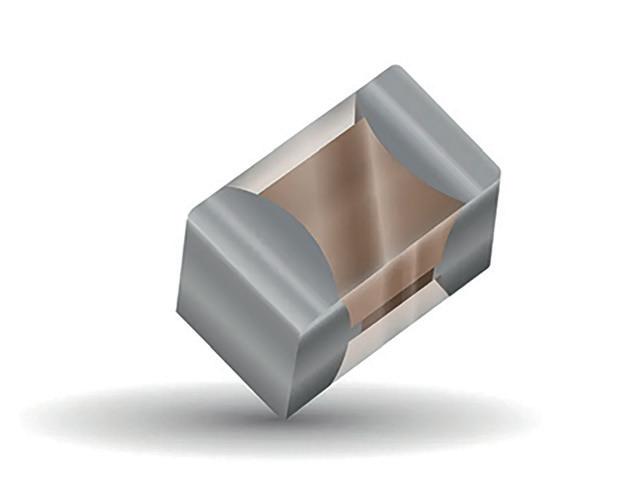

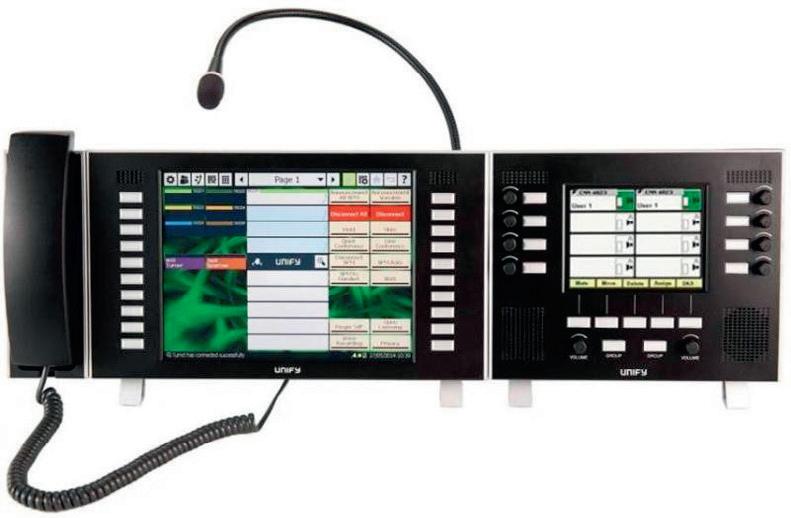
Mitel has announced its latest multi-line communication solution, the Mitel Xpert, formerly known as OpenScape Xpert by Unify. The system is designed to meet the demanding needs of high-stakes environments, including control centres and public safety answering points.
The Mitel Xpert terminal, model 6010p, supports up to 600 lines and integrates seamlessly with existing enterprise telephony solutions using its IP-based, SIP-supported architecture. This makes it suitable for critical environments where fast communication is essential. The system features a large, customisable, 10.4″ touchscreen, which allows users to manage up to 200 pages and 12,000 user-definable buttons. Additional hardware options include push-to-talk handsets, gooseneck microphones and speaker modules designed for voice monitoring.
Key features include prioritised call queuing, fast access to incoming and parked calls, and robust call logging and redial capabilities. The product’s compact and fanless design provides high mean time between failures (MTBF), while its compatibility with VMware enhances redundancy and availability. The system’s global free-seating and disaster recovery features make it flexible and resilient.
Mitel Networks www.mitel.com
Murata’s UWB (ultra-wideband) modules are designed to provide high-accuracy location functionality with UWB tag and anchor functions in compact packages. They are useful for asset-tracking and RTLS applications, enabling location accuracy in the order of 0.1 m for indoor or outdoor use.
The modules feature integrated RF front ends, simplifying the implementation process and reducing the need for extensive RF expertise. This allows developers to seamlessly incorporate advanced location capabilities into their applications.
The Type 2BP, FiRa-certified UWB module is an ultra-small device which includes NXP’s SR150 UWB chipset, clock, filters and peripheral components. It is suitable for general IoT devices, including battery-operated devices.
The Type 2AB — an UWB module with an integrated BLE wireless MCU — is designed as an ultra-small, high-quality and lower power consumption module. It can be operated on the wireless MCU, making this a suitable part for wearables and applications where size is critical.
The Type 2DK UWB tag module with integrated BLE wireless MCU is an all-in-one UWB + Bluetooth LE combo module which integrates an NXP Trimension SR040 UWB chipset, NXP QN9090 Bluetooth LE + MCU chipset, onboard antenna and peripheral components. It is suited for UWB tag/trackers that operate by coin-cell battery, as well as general IoT devices. element14 au.element14.com

NEC Corporation has successfully developed and demonstrated a radio-over-fibre system with a 1-bit fibre transmission method, making it possible to affordably build stable millimetre-wave (mmWave) communication networks for Beyond 5G/6G. The company presented its results at the IEEE MTT-S International Microwave Symposium (IMS2024), held in June.
High-speed wireless communications leveraging mmWave technology are expected to be a key technology for Beyond 5G/6G. In particular, since approximately 80% of mobile communication traffic occurs indoors, mmWave is being considered as an indoor solution.
However, since there is significant propagation loss and high linearity in the mmWave frequency band, it is imperative to ensure line of sight between base stations and terminals to achieve sufficient quality of service. While dense installation of distributed antenna (DA) units for direct transmission and reception of data with terminals and avoiding obstacles is known to be effective in resolving these issues, the size, power consumption and cost of installing the required number of DA have proven to be major issues. To overcome these issues, NEC developed a radio-over-fibre (RoF) system and a related transmission method.
Conventional RoF systems are categorised as either digital RoF or analog RoF. With digital RoF, digital signals generated in the radio unit (RU) are transmitted to the DA over fibre. Since DAs used in digital RoF must be equipped with a digital signal processor (DSP) and a digital-to-analog converter (DAC), both power consumption and costs are high. Meanwhile, analog RoF uses a method with which high-frequency analog signals are generated in the RU and transmitted to the DA over fibre. With analog RoF, configuration is simplified since DAs are not required to be equipped with DSP or DAC; however, a dedicated converter with high linearity for analog signals is required for the electrical-to-optical converter. This in turn drives up device costs.

NEC therefore set out to develop a 1-bit fibre transmission method and a 1-bit RoF system. The 1-bit fibre transmission method converts high-frequency analog signals into 1-bit pulse signals that are transmitted over fibre, and the desired analog signal can be reproduced through a filter. For 1-bit RoF using this method, a general-purpose electrical-to-optic converter for digital communications can be utilised, as is the case with digital RoF. At the same time, like analog RoF, there is no need for the DA to be equipped with DSP or DAC. As a result, 1-bit RoF is a system that combines the advantages of digital RoF and analog RoF.
Developing a 1-bit modulator with a high signal-to-noise and distortion ratio (SNDR) for converting signals into 1-bit pulse signals has been a challenge in the practical application of 1-bit RoF. NEC, therefore, developed a vector decomposition method (where a radio signal is decomposed into two signals with a constant amplitude) that has a superior SNDR as a 1-bit fibre transmission method for downlink traffic. Also, for uplink traffic, NEC developed a digital reproduction method that cancels signal distortion generated by 1-bit fibre transmission and regenerates the original signal. As a result, NEC succeeded
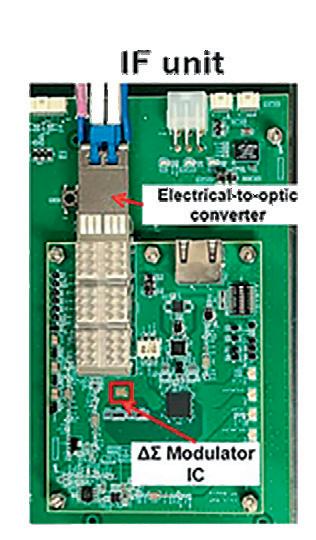
in suppressing the degradation of the SNDR during 1-bit fibre transmission in both downlink and uplink directions.
In addition, to confirm that the newly developed 1-bit RoF system conforms to mobile communication standards, NEC developed a new radio-over-fibre prototype for the 40 GHz band consisting of an RU and a compact DA. A verification test confirmed the system’s compliance with the standards.
The newly developed system makes it possible to install compact, low-cost DAs in high density. In addition, it is expected to improve the mmWave communication environment by ensuring the line of sight between DAs and terminals.
NEC’s 1-bit fibre transmission method enables a compact mmWave distributed antenna, low power consumption and cost reduction. The RoF system applying this method enables inexpensive, buildingstable mmWave communication networks in high-rise buildings, underground malls, factories, railways, indoor facilities and other obstacle-laden environments. It will therefore promote the uptake of high-speed and large-capacity communications using millimetre waves for Beyond 5G/6G.

SoftBank Corp. has announced the successful demonstration of Beyond 5G/6G terahertz outdoor coverage for connected cars with its proprietary antenna technologies. Until now, terahertz (THz) communication was widely assumed to be suitable only for FWA (fixed wireless access) or NFC (near-field communication), due to its characteristics, but SoftBank’s field trial confirms the reliability of THz communication as a use case for connected cars.
In recent years, research and development on Beyond 5G/6G technologies, which aim to achieve throughput of over 100 Gbps, has been conducted worldwide as the demand for faster and higher capacity wireless communication grows. In this context, THz wireless technology is anticipated as a solution for achieving ultrahigh-speed wireless systems, as it offers a wider frequency band compared to millimetre-wave bands used in 5G.
Due to the significant propagation loss of THz waves, research has been carried out to utilise the narrow beam of high-gain antennas and extend communication distance to make THz wireless communication practical. By expanding the achievable communication distance, THz wireless technology holds potential for applications such as high-speed communication in areas where laying optical fibre is challenging or not feasible, serving as an alternative to optical fibre.
SoftBank is actively conducting research and development to utilise THz wireless technology for mobile communication, having already verified communication coverage in outdoor environments and confirmed the feasibility of THz communication, even beyond line of sight. However, the development of a system that can continuously track beams is necessary for the practical use of communication with terminals. This presents challenges in terms of complexity of
the equipment and the precision required to track the terminals. Moreover, expanding the communication area, as with traditional mobile systems’ base stations, results in power dispersion, leading to a significant reduction in the THz wireless communication area.
Accordingly, SoftBank conducted a verification experiment to establish THz coverage specifically for vehicles by limiting the communication area only to roadways. This approach prevents power dispersion and enables the expansion of the communication area for vehicles driving outdoors.
With typical base stations, high-gain sector antennas are installed to construct a wide communication area. These antennas transmit radio waves with a wider pattern in the horizontal plane and a narrower beam in the vertical plane. However, a phenomenon can occur where the receiving signal becomes weaker at a closer point to the macro base station compared to slightly further distances. Therefore, for vehicle-oriented THz wireless communication, a communication area was constructed with narrower coverage in the horizontal plane and wider coverage in the vertical plane, ensuring stability along the traffic direction of the road.
In constructing the communication area for vehicles, SoftBank applied the characteristics of a cosecant squared beam pattern. This is a technique used for aviation radar, where the receiving power level at both the base station and the terminal remains constant regardless of the horizontal distance between antennas with a height difference. To achieve cosecant squared characteristics in communication, a special antenna configuration is required. SoftBank developed a proprietary cosecant pattern antenna that realises the cosecant squared characteristics by using it at both the base station and the terminal, which allows for maintaining high antenna gain while ensuring a system with constant power reception. It is worth noting that antennas with such unique characteristics tend to be larger in size in current mobile communication frequency bands; however, due to the shorter wavelength of THz waves, SoftBank was able to achieve a size of 1.5 x 1.3 x 1 cm (for base stations) and 1.5 x 1.3 x 1.5 cm (for terminals).
In the outdoor field trial, SoftBank conducted tests on a road near its headquarters in Minato-ku, Tokyo. On the transmitting side, a wireless device equivalent to a base station, equipped with a cosecant antenna, was installed on a pedestrian deck at a height of approximately 10 m above ground level. It transmitted a 5G modulation signal converted to a frequency of 300 GHz. On the receiving side, a measurement vehicle equipped with a cosecant antenna and equipment to convert 300 GHz back to the frequency of 5G was used. The vehicle performed measurements of the 5G signal while driving on a straight road underneath the pedestrian deck.

During the test, measurements were conducted while the vehicle’s speed varied from slow to the speed limit of 30 km/h. In all cases, within a section of approximately 140 m from the vicinity of the base station to the end of the road, stable reception and demodulation of the test signal were confirmed even while the vehicle was in motion. Although the measurement was limited to a distance of 140 m due to the length of the road, there was an ample margin to the power of the cell edge. SoftBank therefore believes that even longer-distance coverage is possible.
SoftBank will continue to test various use cases and accelerate research and development towards achieving the practical application of THz wireless technology. This initiative is aligned with the goal of realising ultrahigh-speed wireless communication for the Beyond 5G/6G era and contributing to the growth of the telecommunications industry. www.WFMedia.com.au/subscribe The magazine you are reading is just one of 11 published by Westwick-Farrow Media. To receive your free subscription (magazine and eNewsletter), visit the link below.



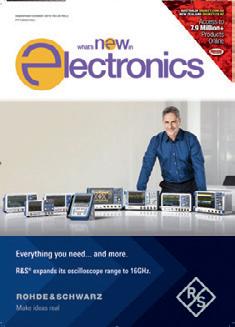

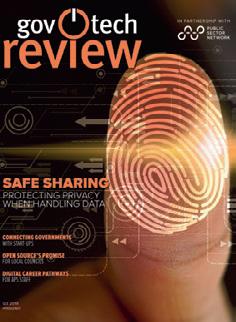


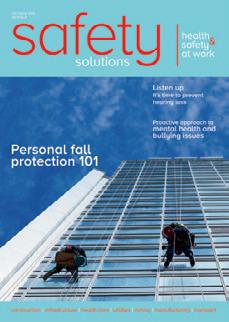
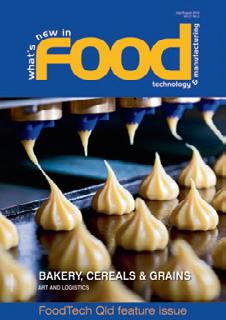

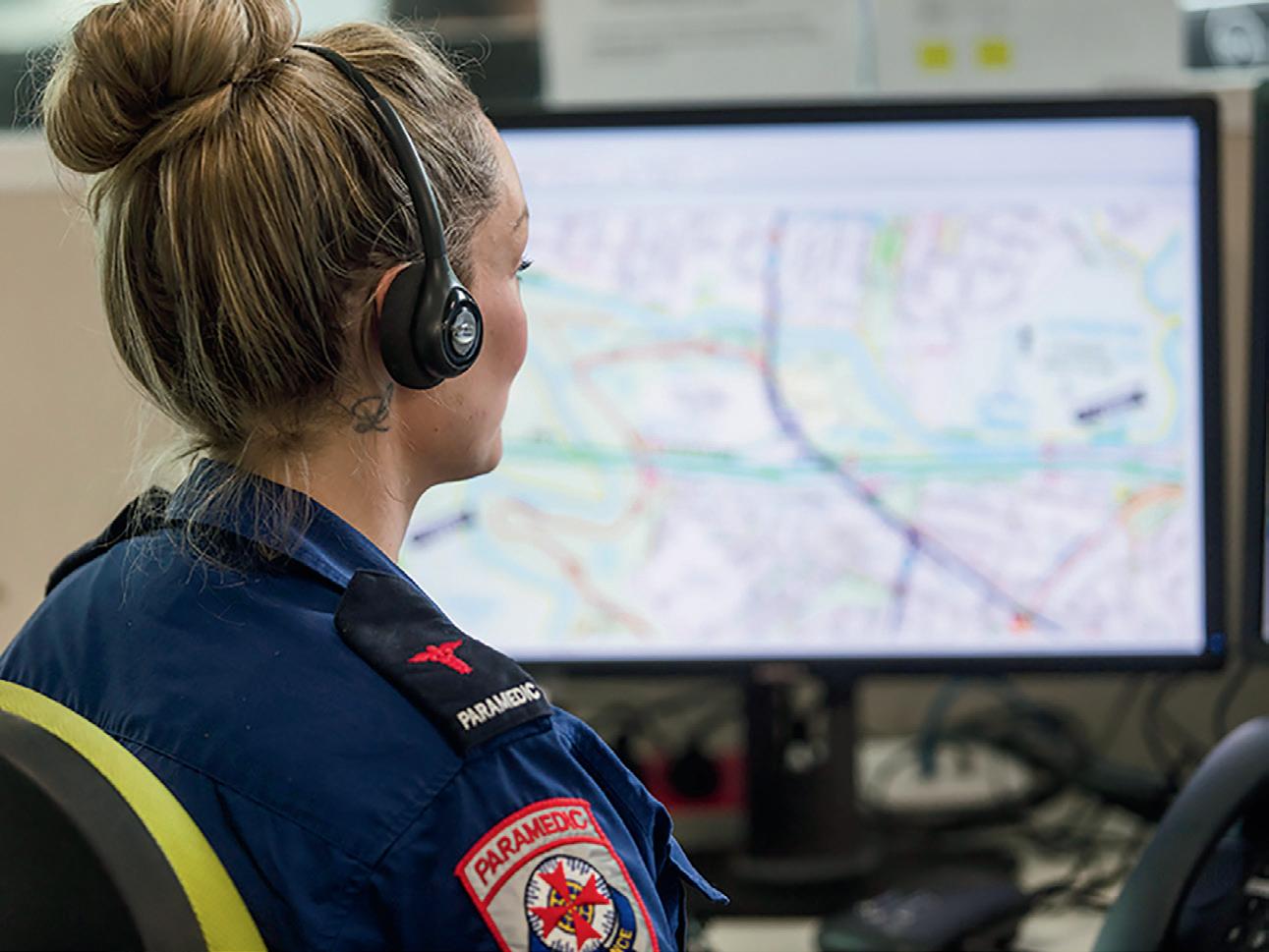
t’s been a tumultuous few years for Australia’s emergency service contact centres.
The pandemic presented a range of new operational challenges while call volumes spiked dramatically.
A few years later, hopes that volumes would normalise to pre-pandemic levels have been dashed. Whether it’s climate-related emergencies such as bushfires or social unrest events such as the West Gate Bridge protest, call volumes continue to rise. In fact, incidents attended by emergency services crews increased 36% in 2022–23, while the number of emergencies attended was up 6% from the previous year.
The increase in call volumes is compounded by staffing shortages. Unemployment is at historically low levels, which has created a skills shortage across the country. Contact centres and first responders in most states have not been immune to this trend.
While there is no one-size-fits-all solution to these challenges, technology can help alleviate some of these burdens and improve emergency response capabilities. When used correctly, it can help public safety agencies address some of their biggest pain points. For example, assistive AI and cloud technology have proven to be able to help emergency communications centres make faster, more informed decisions and better share information with other agencies and first responders, especially during periods of high demand, lessening the burden on their staff and resulting in improved outcomes for those they serve.
Assistive AI can help detect and filter out background noise on calls, so the responders
can better hear the call and save precious seconds by avoiding the need for callers to repeat themselves. It can also be used to help transcribe or translate calls through what’s known as natural language processing. For example, emergency responders across the world use voice-to-text technology, where assistive AI automatically transcribes the call. This helps to free up the call centre worker from having to make notes, or input information into their system.
Natural language processing can be used to live-translate for people who speak another language, cutting down response time by minutes. AI could also be used to detect background sounds and voices in domestic violence calls, which can help alert call-takers of another person’s presence or a situation unfolding during the call.
Assistive AI can play an important role helping emergency contact centre workers to identify patterns that might alert responders of a larger problem. It can work with weather, location and other statistical data so call-takers and dispatchers can identify hard-to-spot, complex situations earlier in their development. This kind of technology would be invaluable if there was a repeat of the 2016 thunderstorm asthma event in Melbourne. It

could help contact centre experts to identify patterns in calls and improve information sharing with first responders, decrease response times and inform decision-making.
It’s important to remember that in public safety, AI is best used as an assistant rather than a replacement for human experience. Assistive AI can help first responders make informed decisions, respond faster and more efficiently, reduce impacts on communities and, ultimately, save more lives.
Another key technology to help emergency contact centres is Next Generation Triple Zero (NG000). This upgraded version of the traditional Triple Zero system has many components that enhance public safety, including integrated support for sharing of voice, photos, videos and text messages between the caller, emergency communications centre, and field responders to enable a more robust, efficient and safer response.
The technology also helps route calls to the appropriate answering point, manage nonemergency calls, integrate with apps and other tools, and collaborate with other emergency communications centres. The interconnected design of NG000 helps ensure improved resiliency and security of the public safety communications system by ensuring automatic failover and back-up capabilities in the event an emergency communications centre is overloaded with calls or otherwise unavailable.
Modern emergency services infrastructure has proven to make a difference in staffing stress by giving emergency communicators more information and situational awareness to do their jobs better, thus improving the resiliency and redundancy of 000.
As technology advances and we look for more effective ways to address crime and safety, it’s critical for agencies to stay up to date on new technologies and tools that can address their challenges and improve public safety. We all want a safer future. Let’s embrace the technology that can help us get there.
David Dennis is Senior Business Development Manager at Hexagon Safety, Infrastructure & Geospatial — a division of technology company Hexagon which helps to improve the resilience and sustainability of the world’s critical services and infrastructure. Its solutions turn complex data about people, places and assets into meaningful information for better, faster decision-making in public safety, utilities, defence, transportation and government.













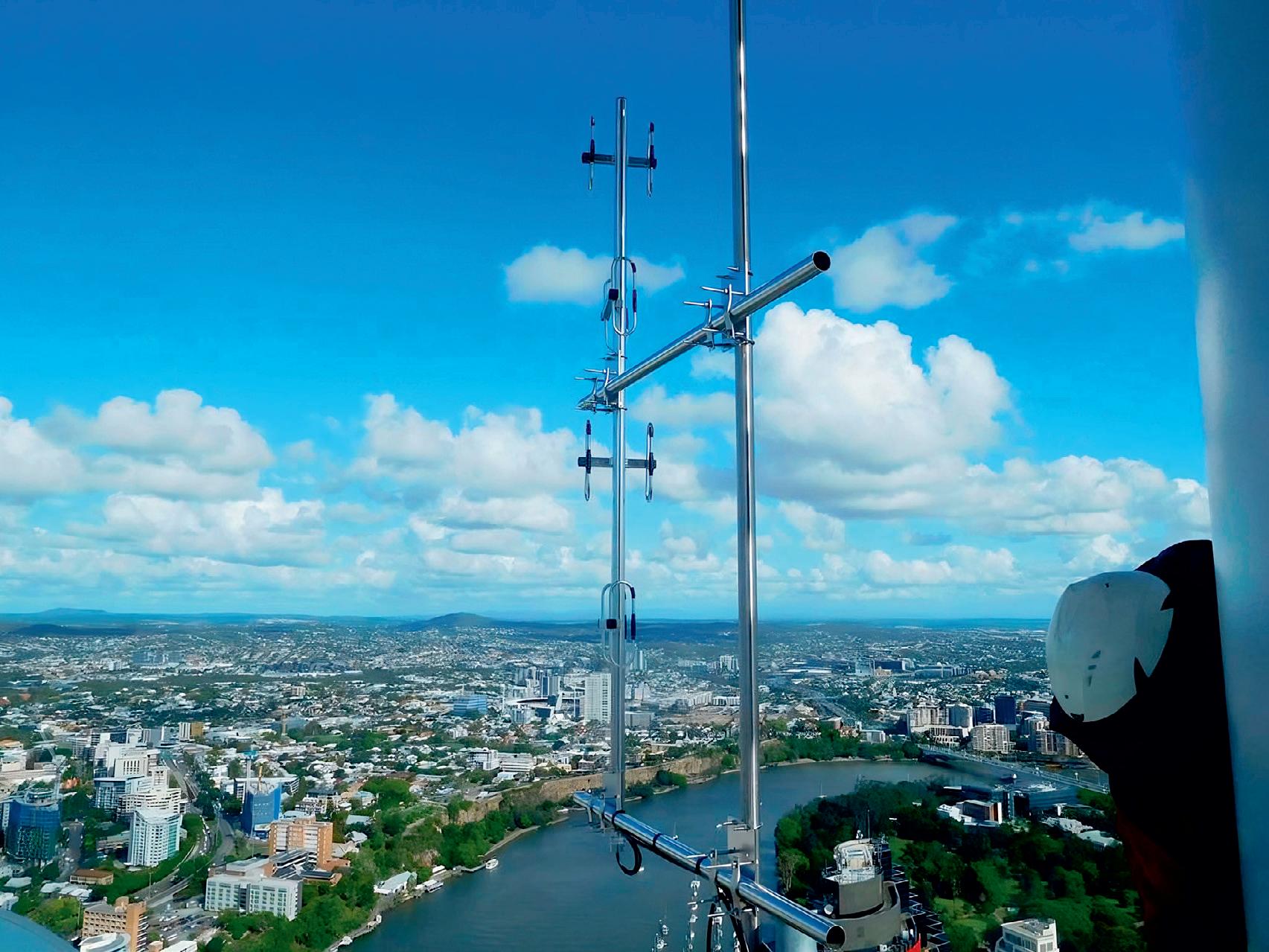

With the rapid expansion of urban populations and the persistent growth of road congestion, rail and metro are increasingly becoming the primary choices for comfortable and smooth local and long-distance journeys across all levels of society.
But as the utilisation of rail systems increases, the greater the need for robust and reliable communications becomes. Not just to keep personnel and passengers safe and fully informed at all times, but also to enhance journey speed, punctuality, and the effective utilisation of infrastructure.
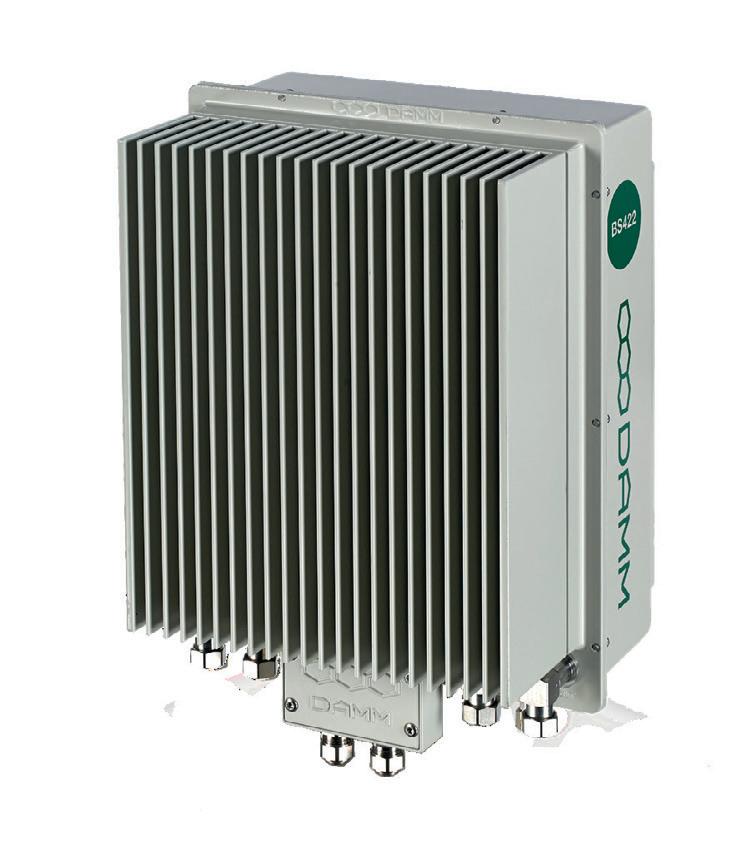
collaborating with leading metro and rail providers, we have extensive experience in providing large-scale integrated voice and data solutions. This includes the successful implementation of interoperable TETRA Packet Data to comply with the demands of European Train Control Systems (ETCS) Level 2.
DAMM Australia
Phone: +61 7 5539 4638
Email: info@damm-aus.com.au
With 40 years of expertise in radio communication and a proven track record of
Learn more at: www.damm-aus.com.au